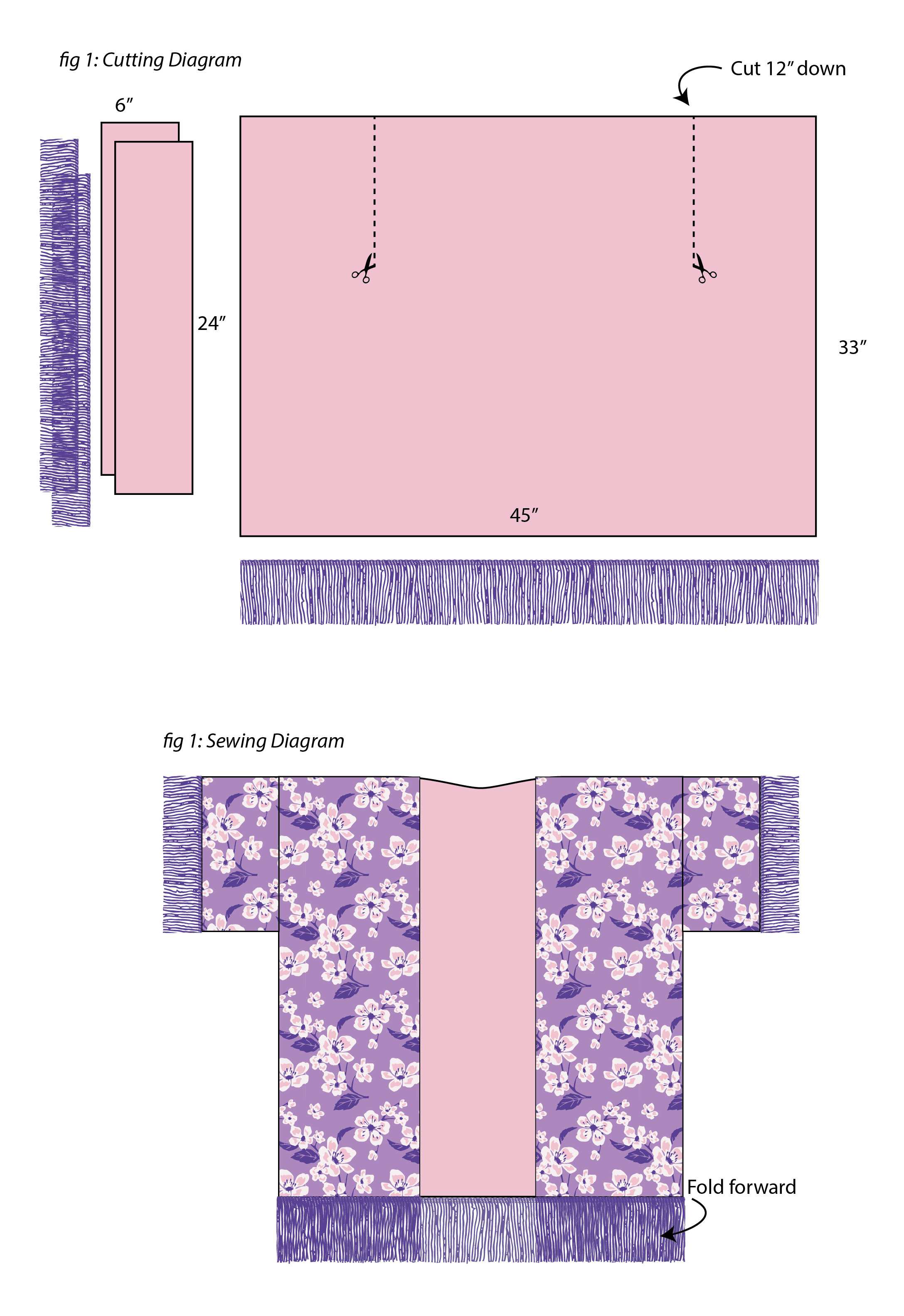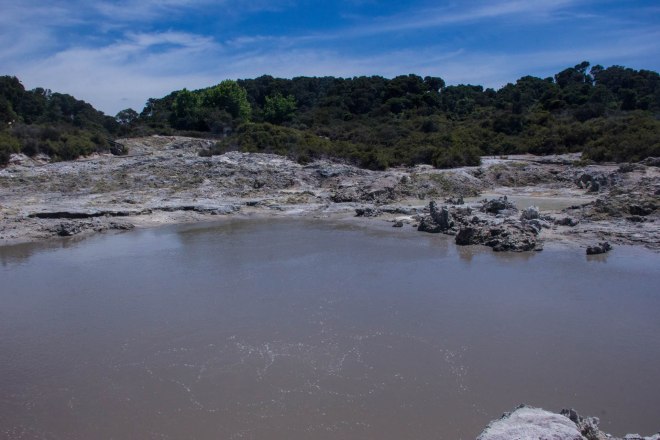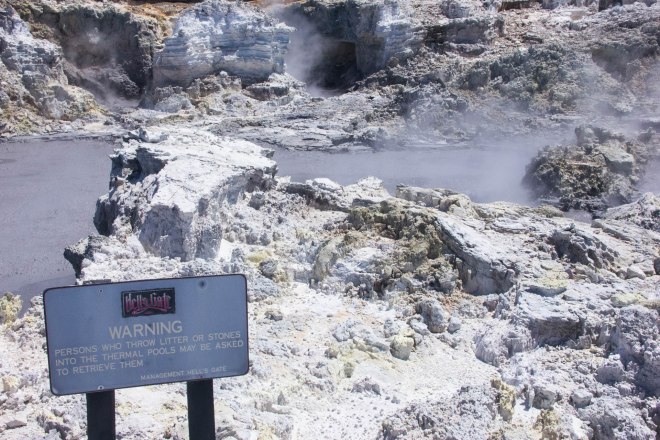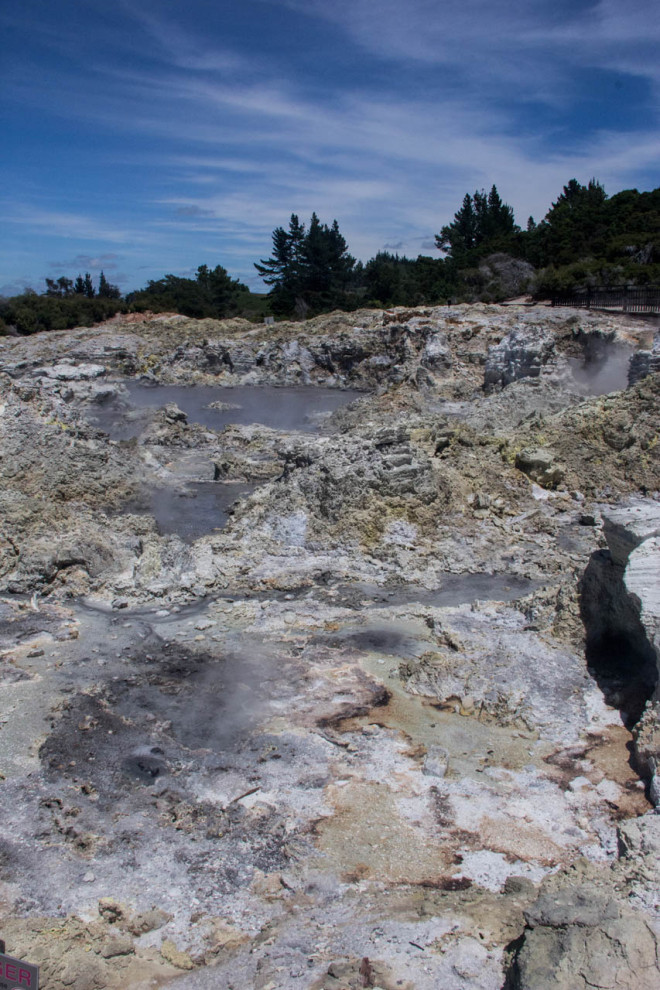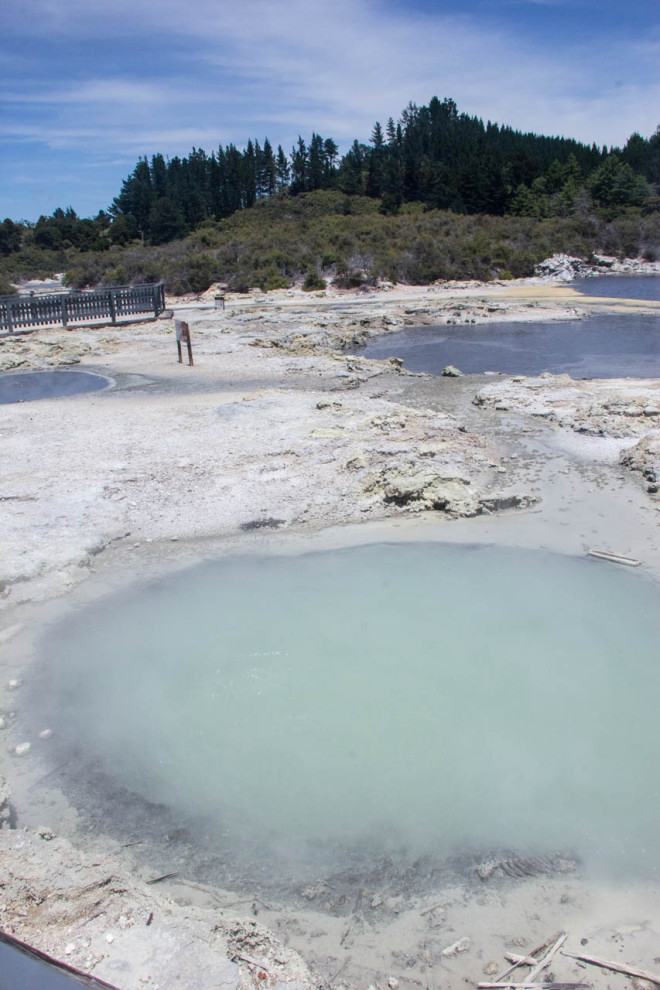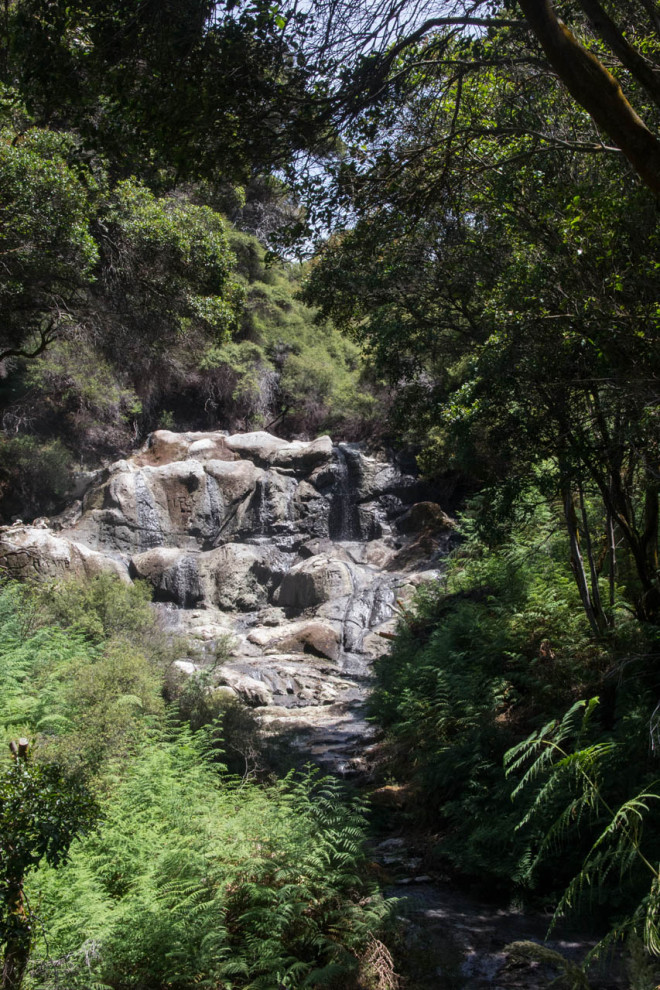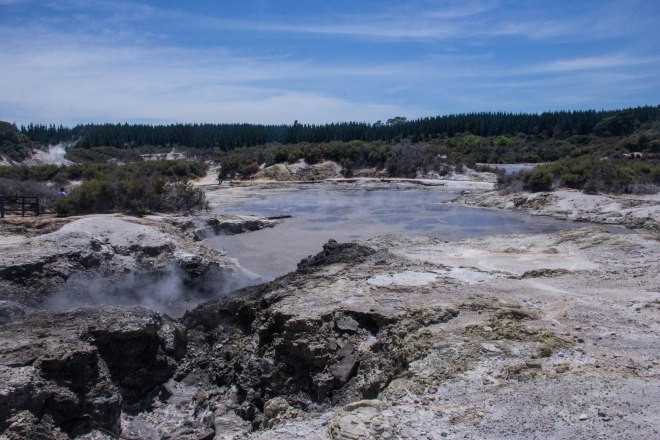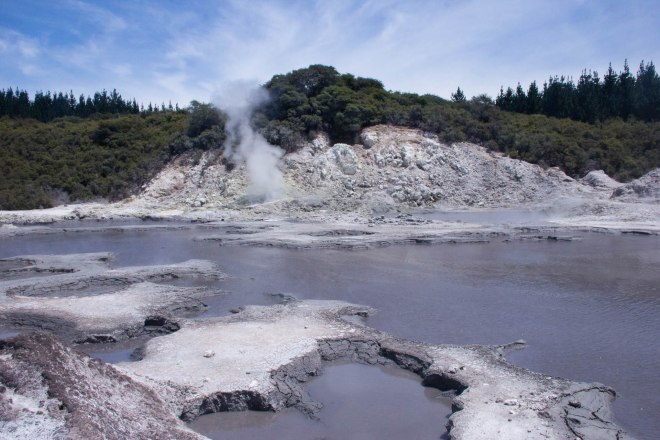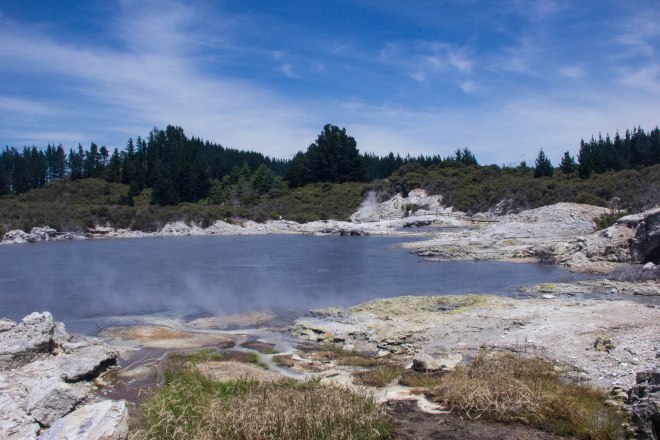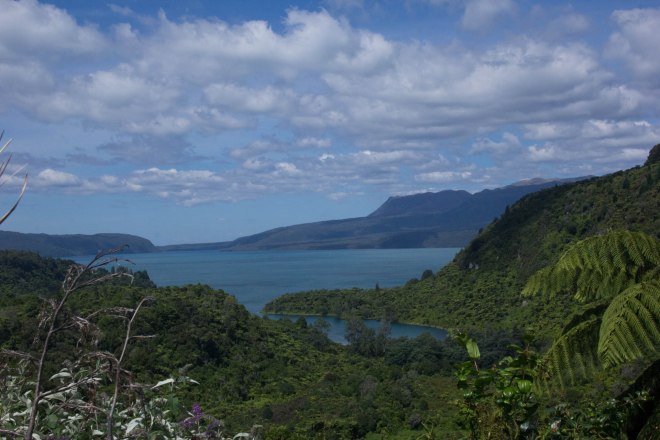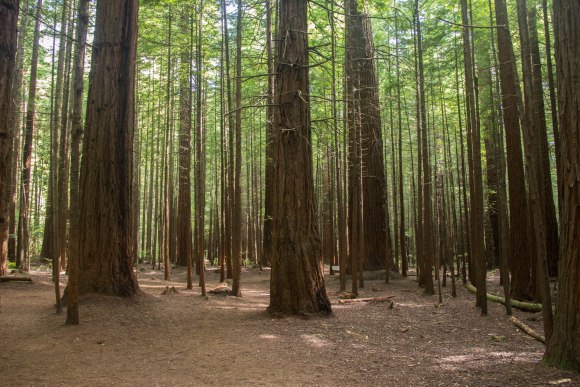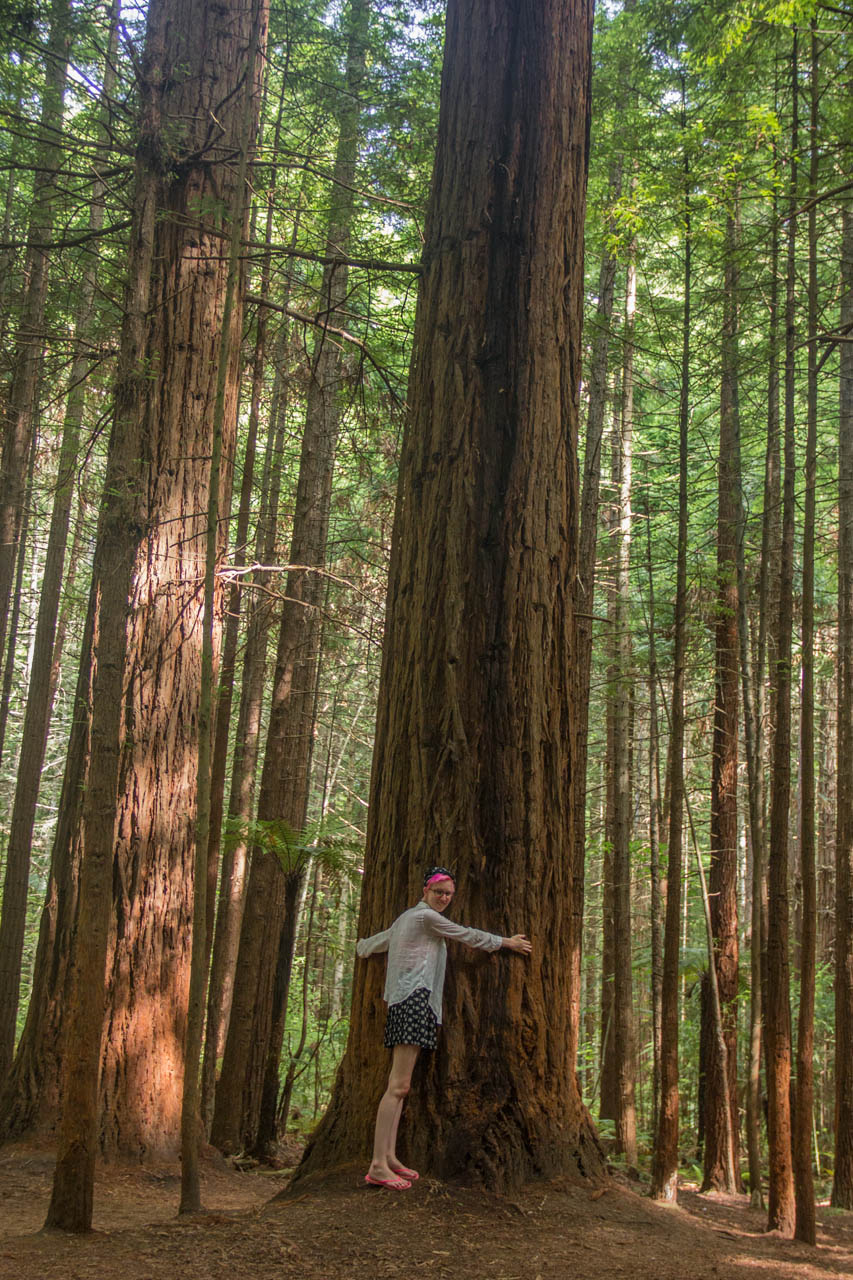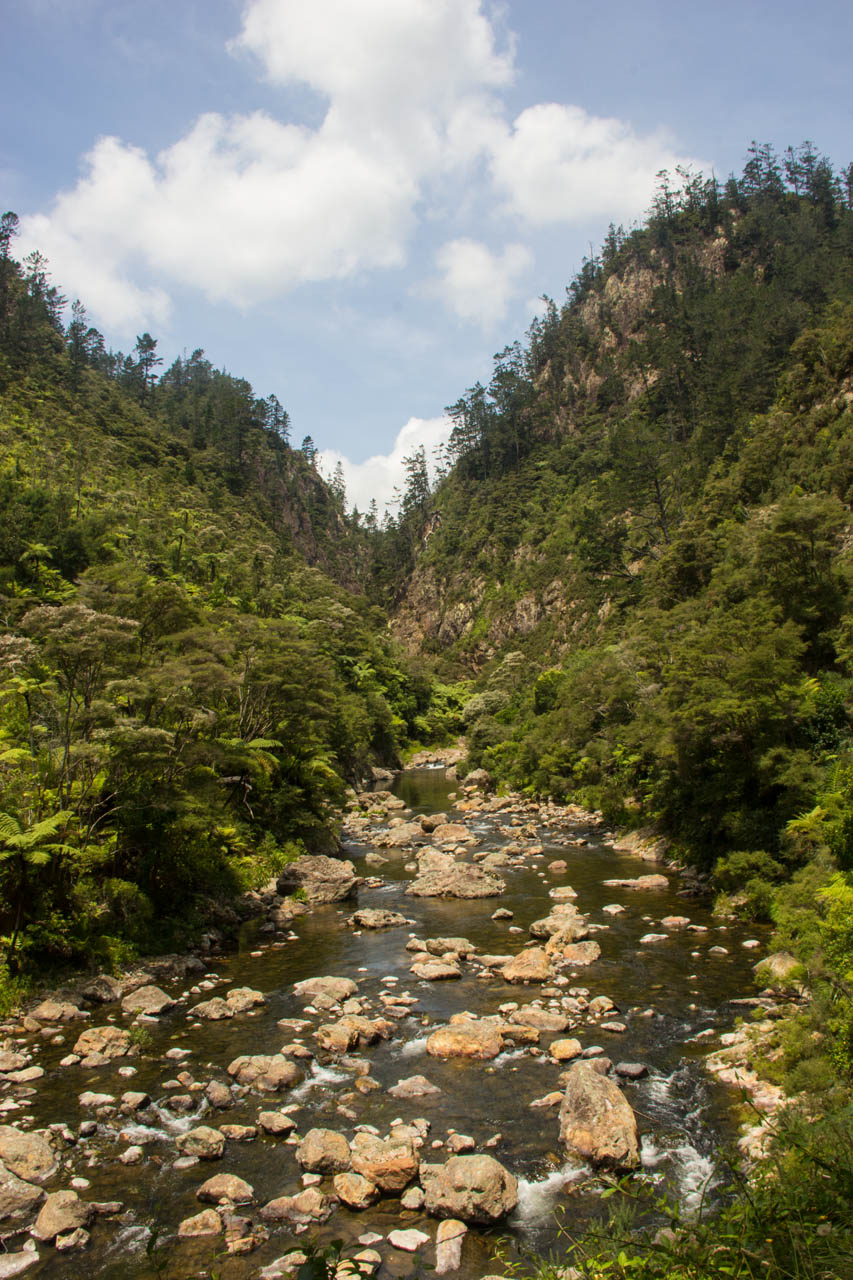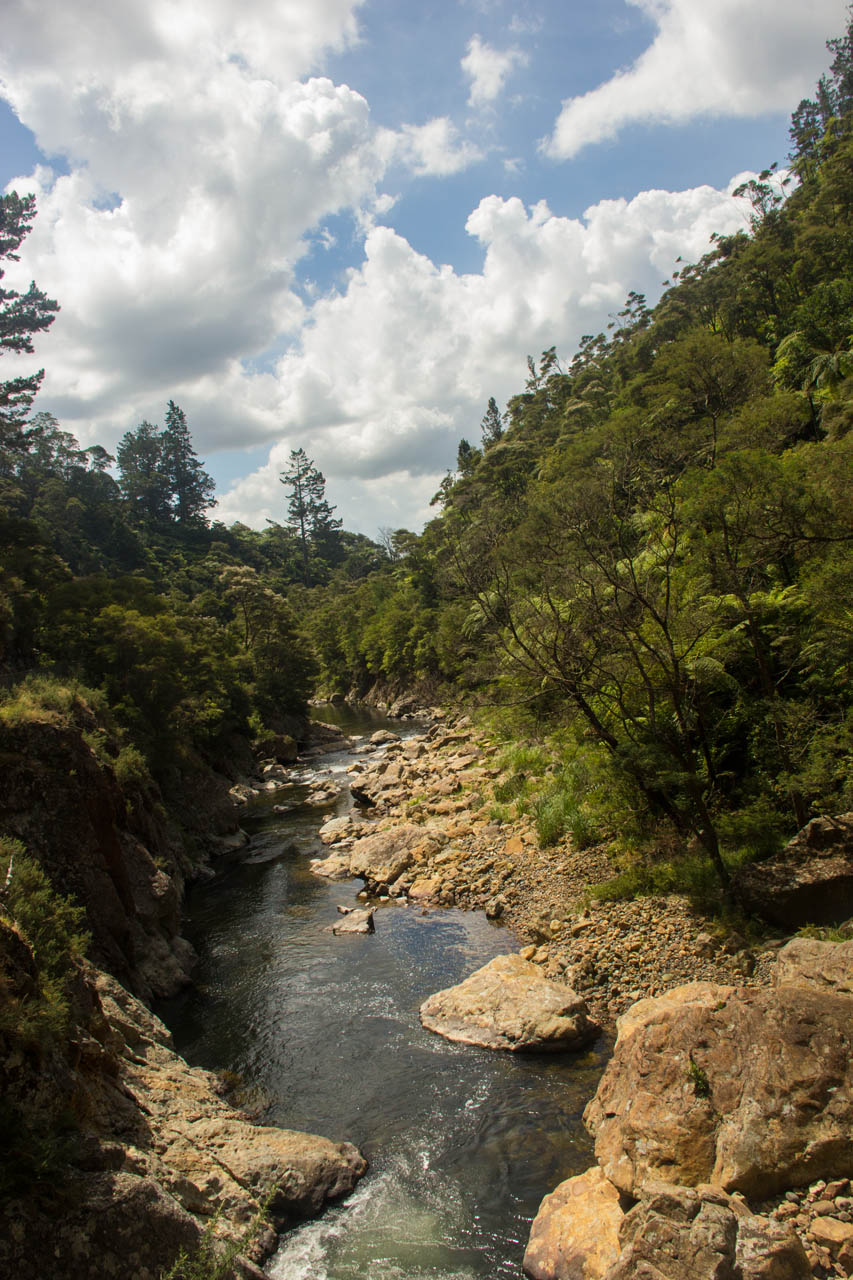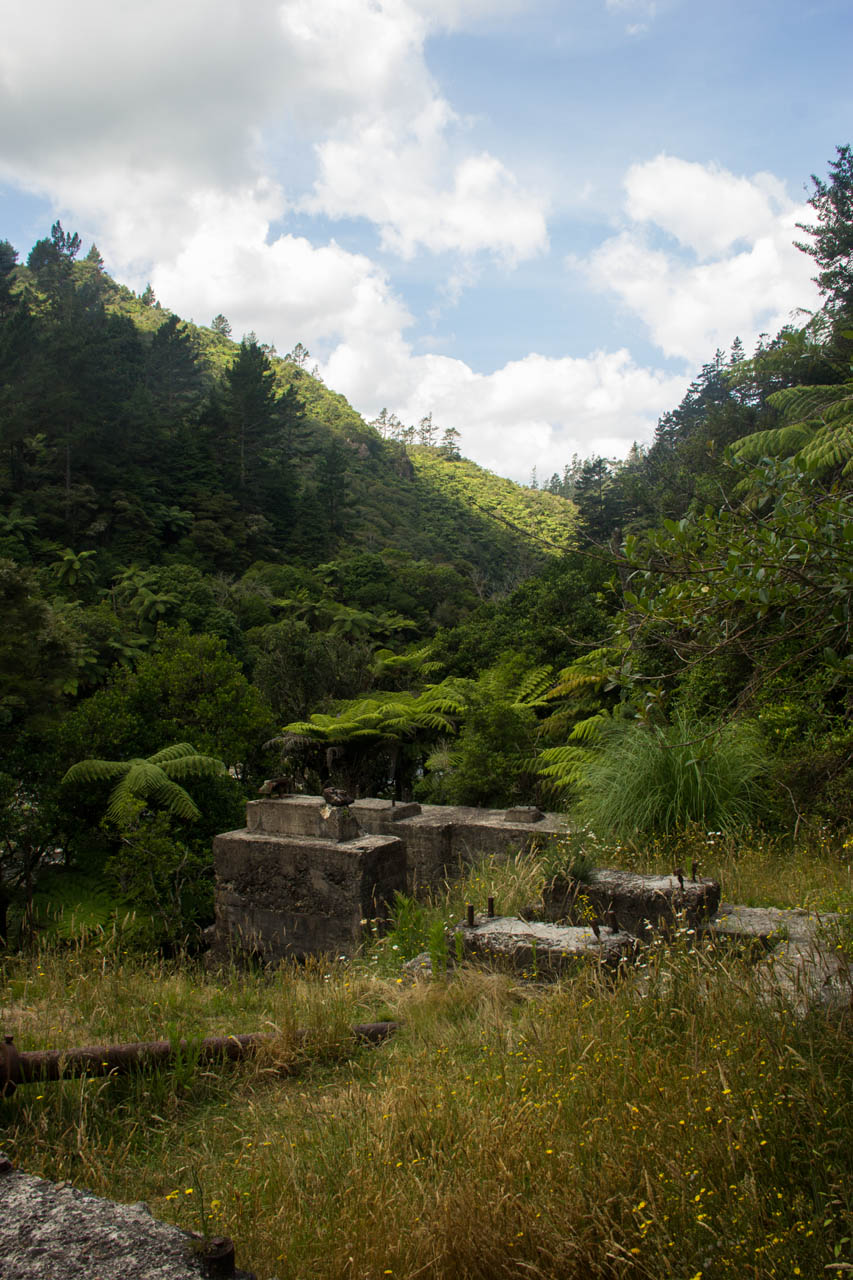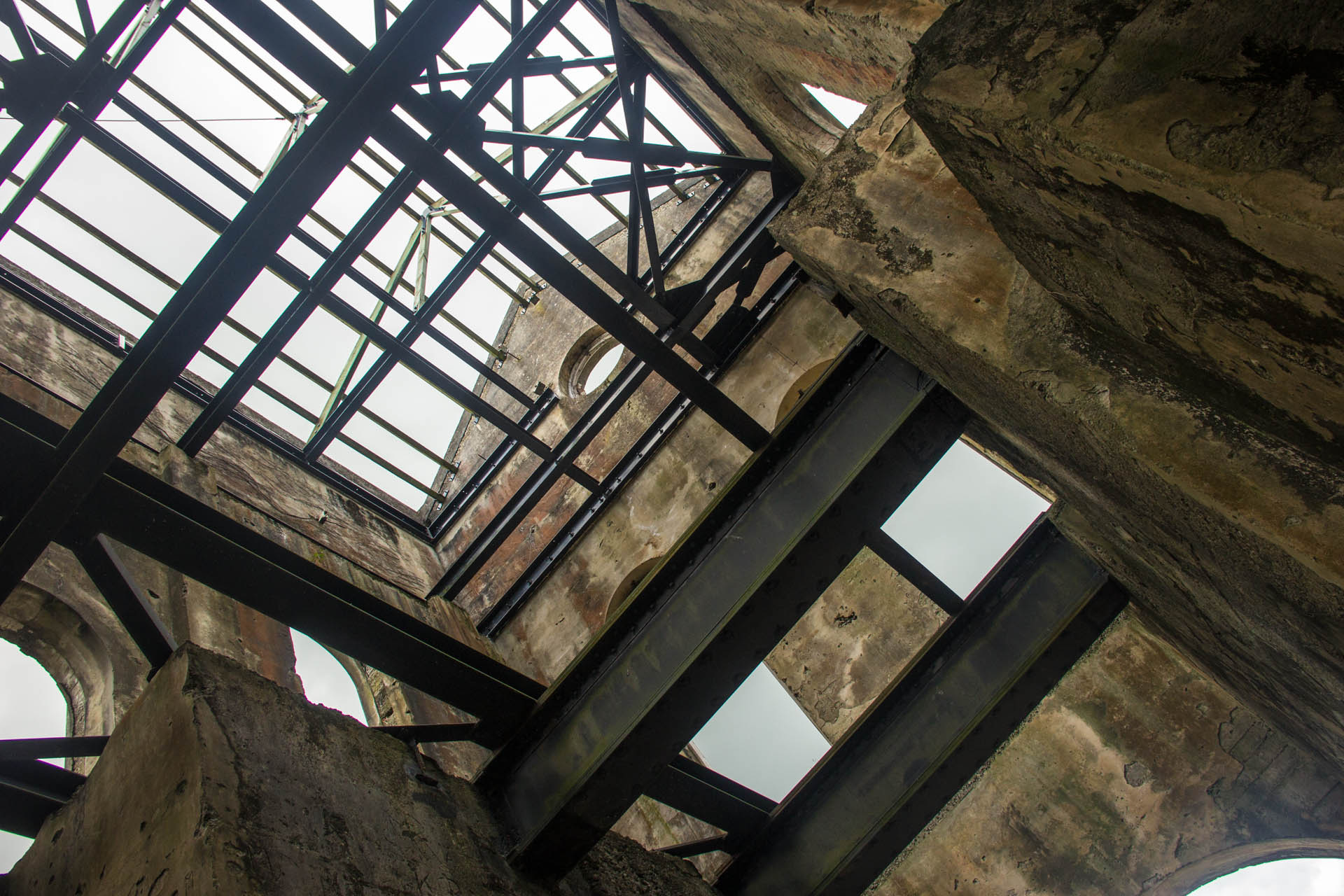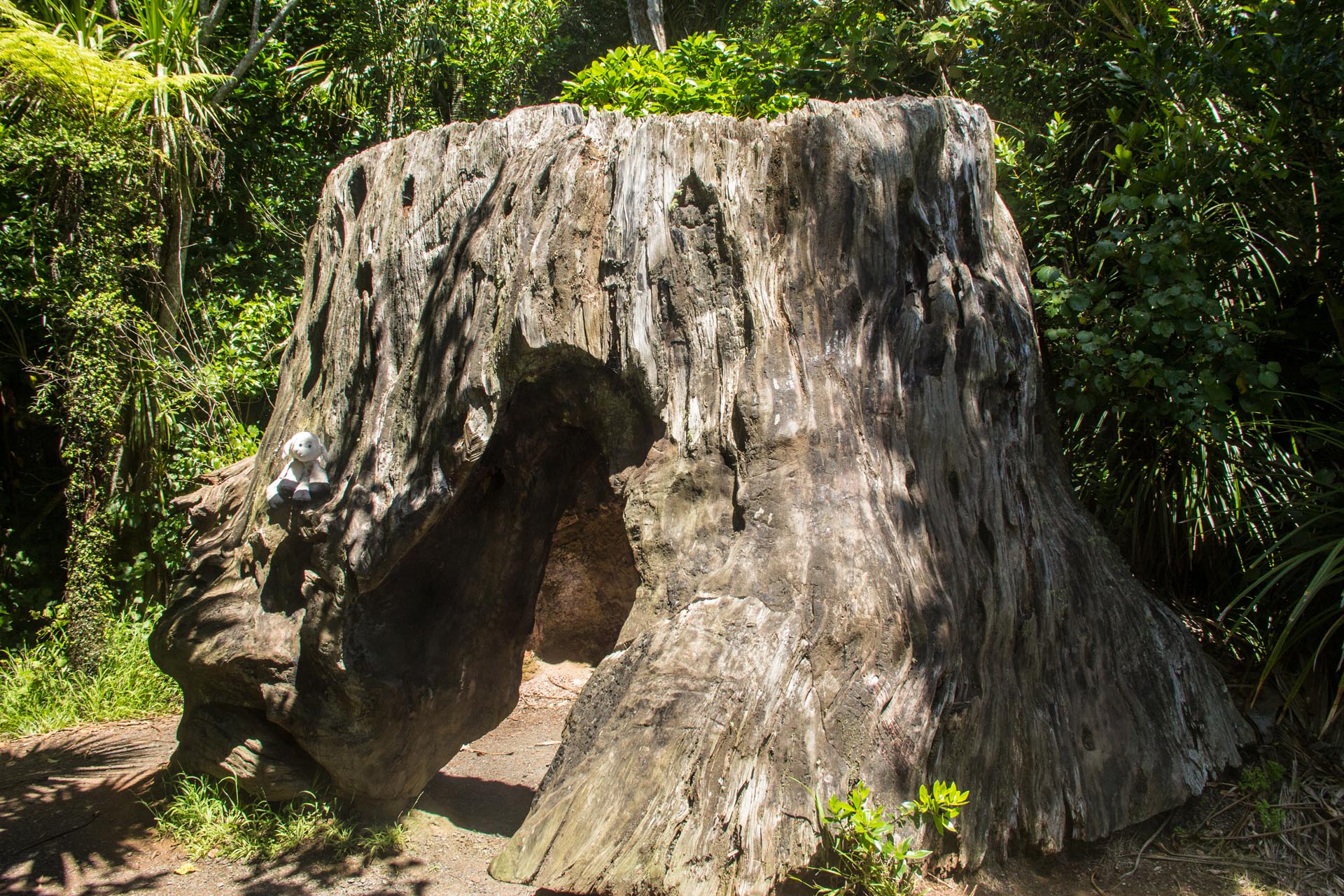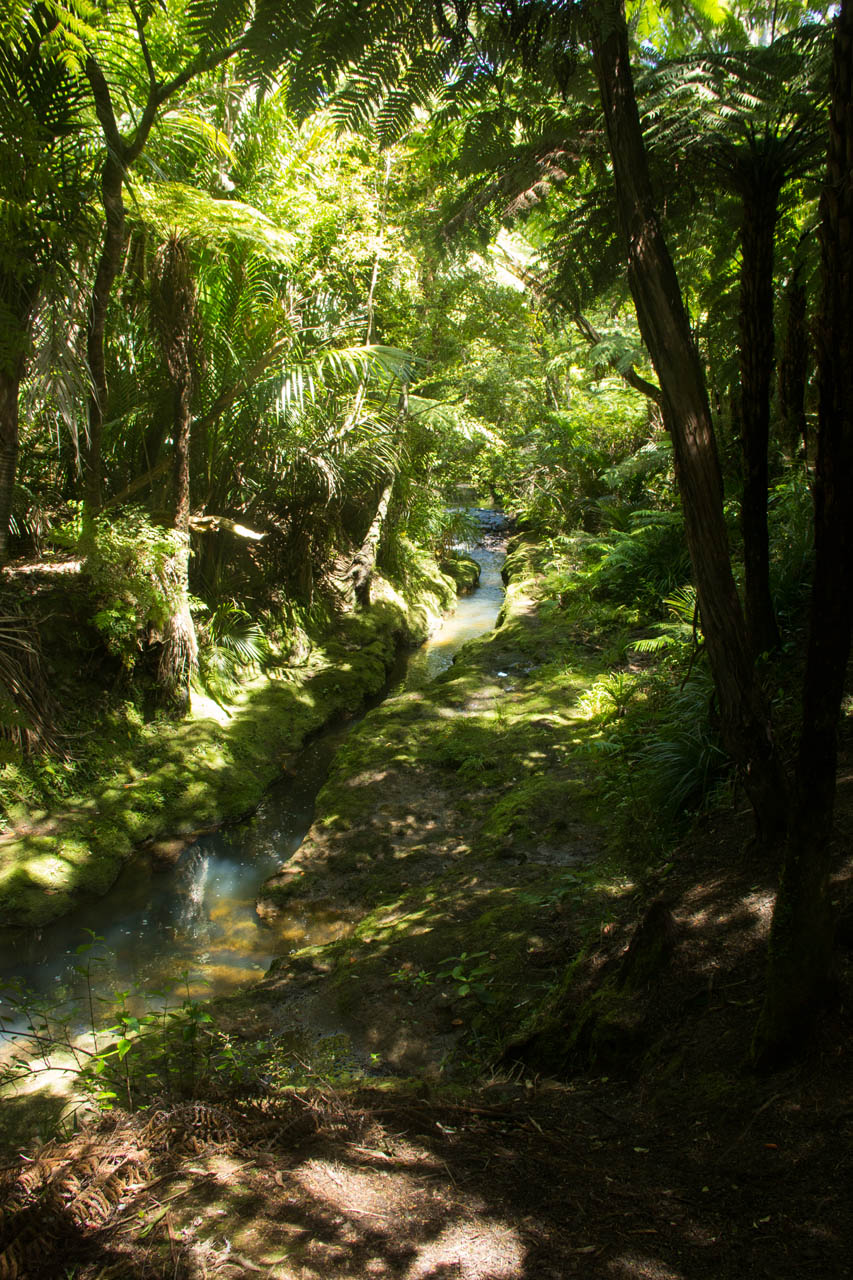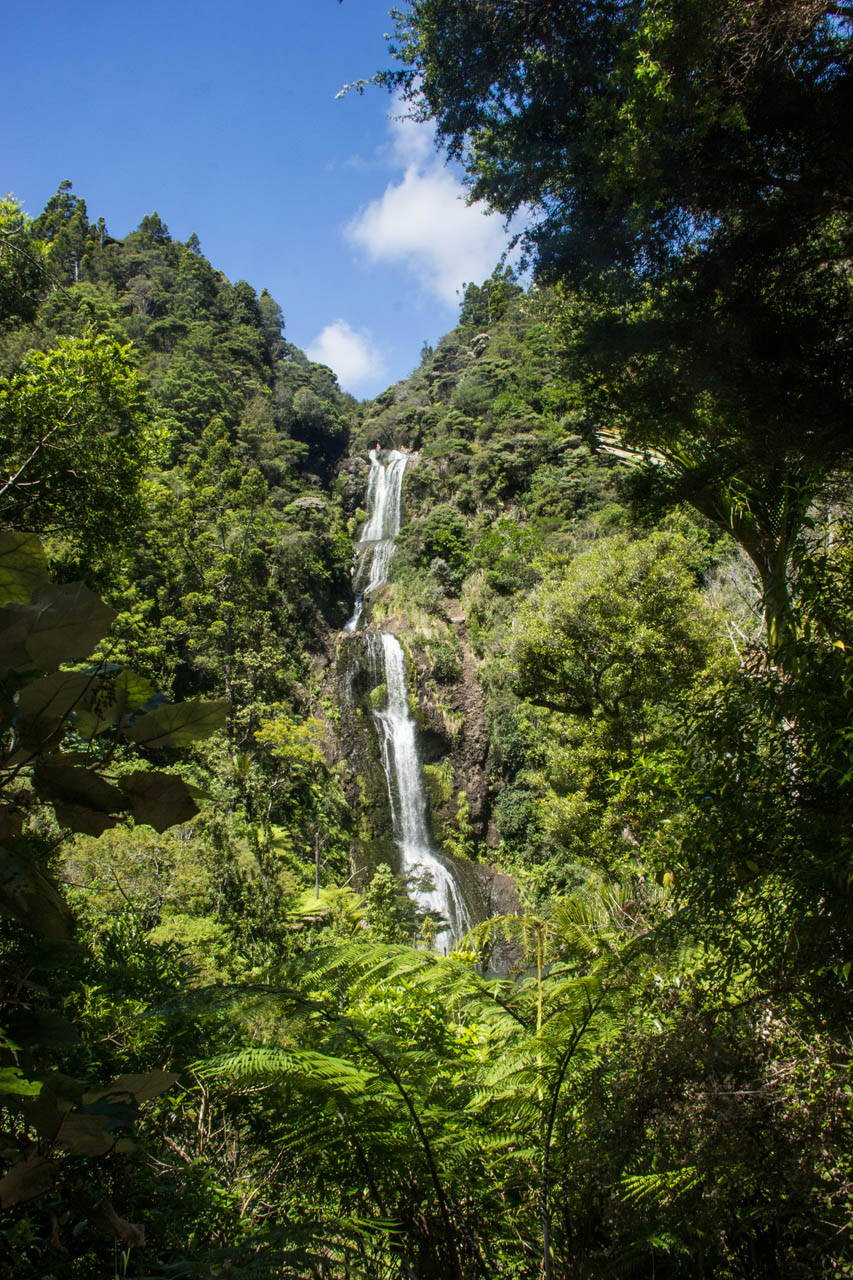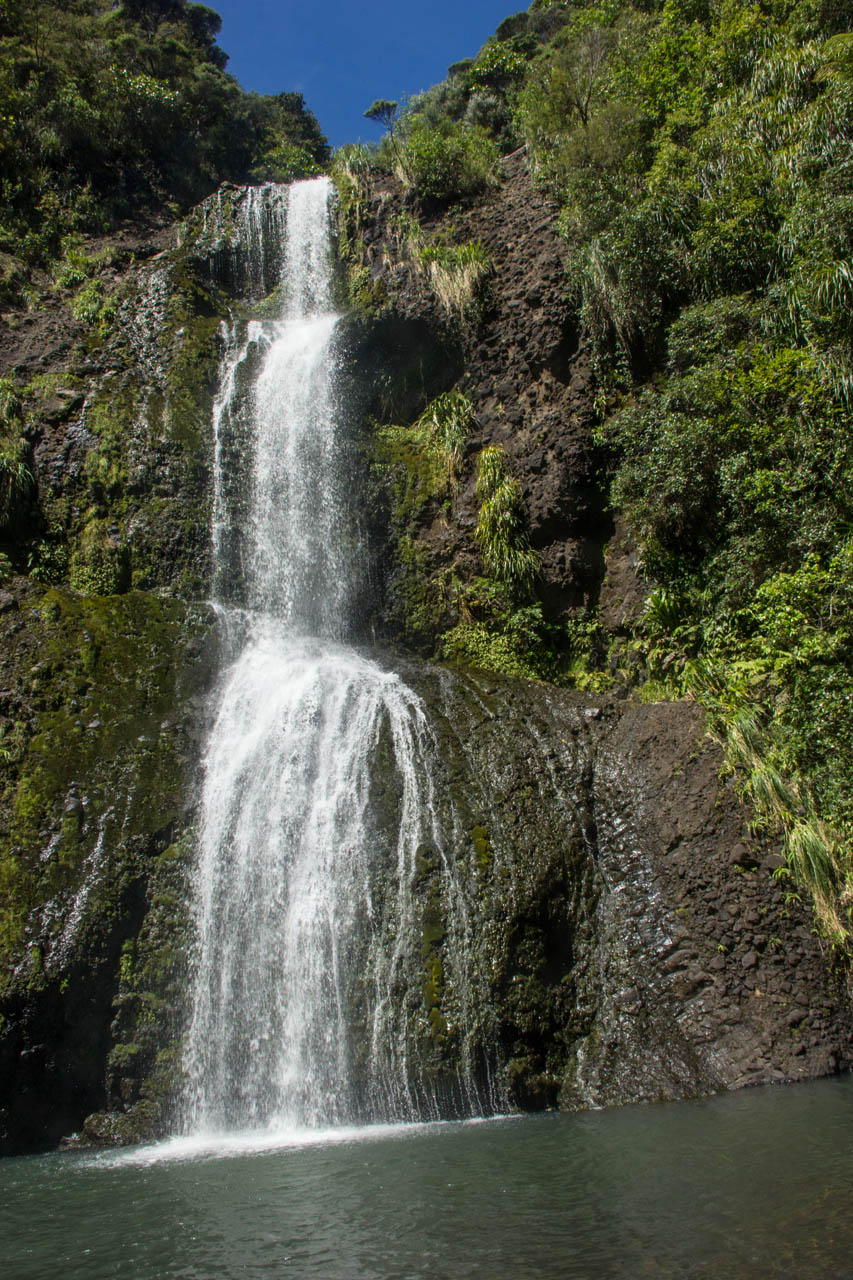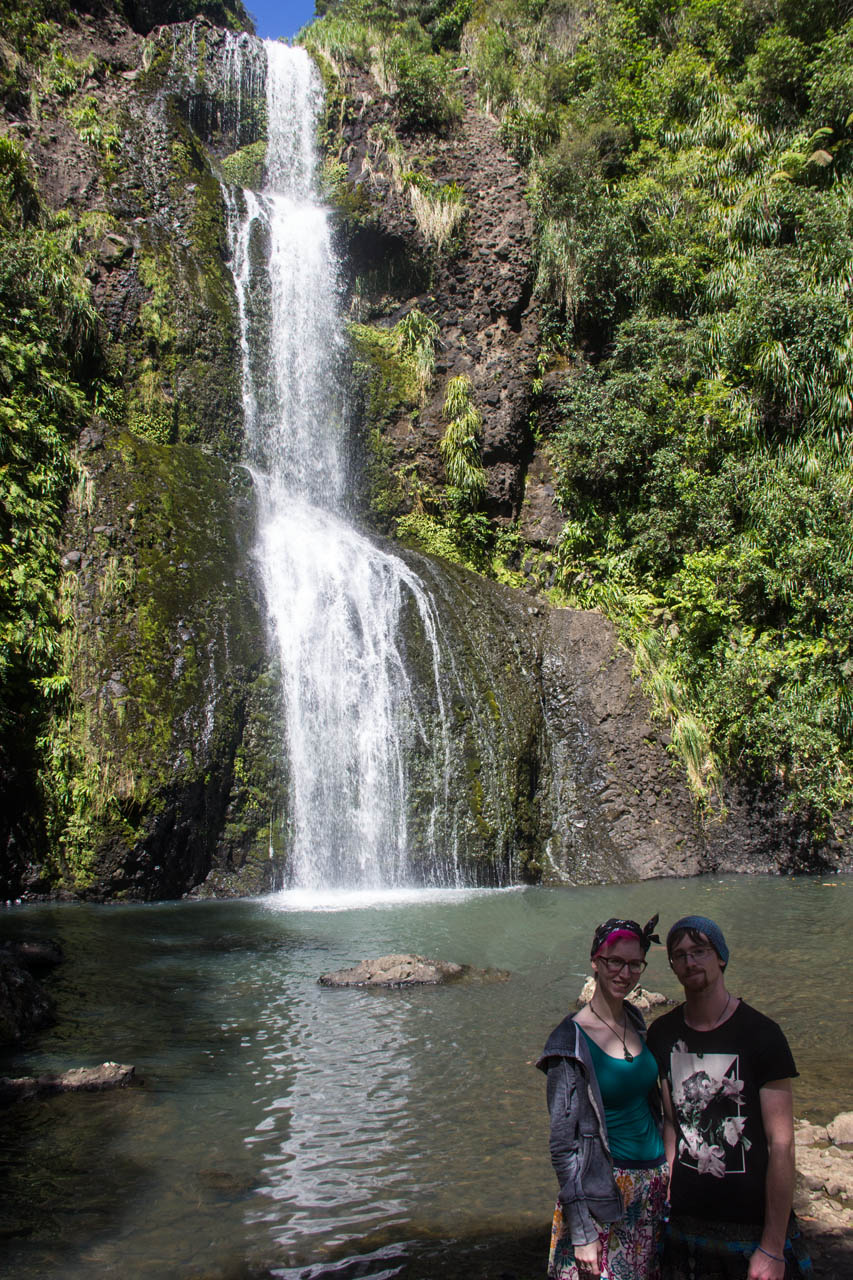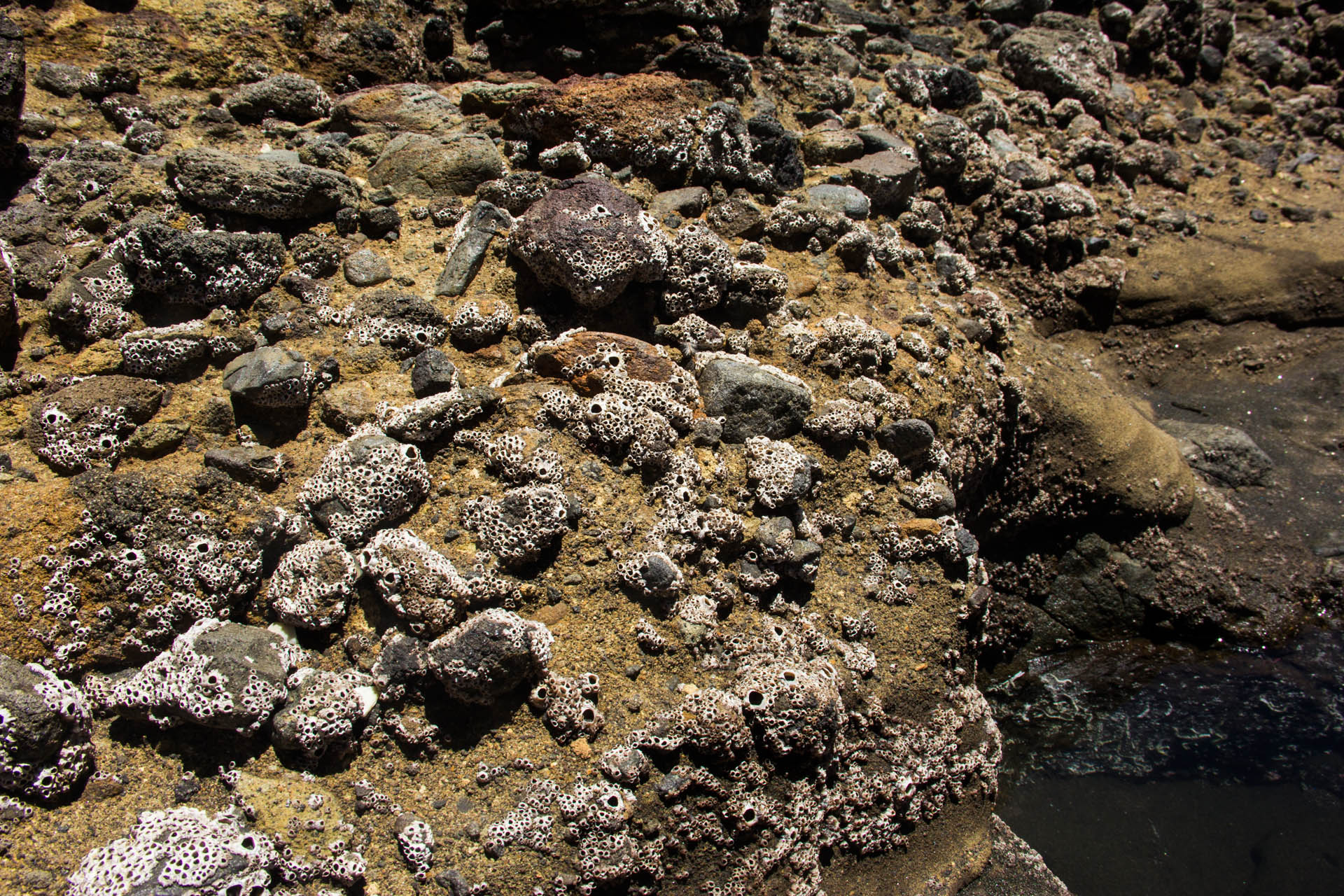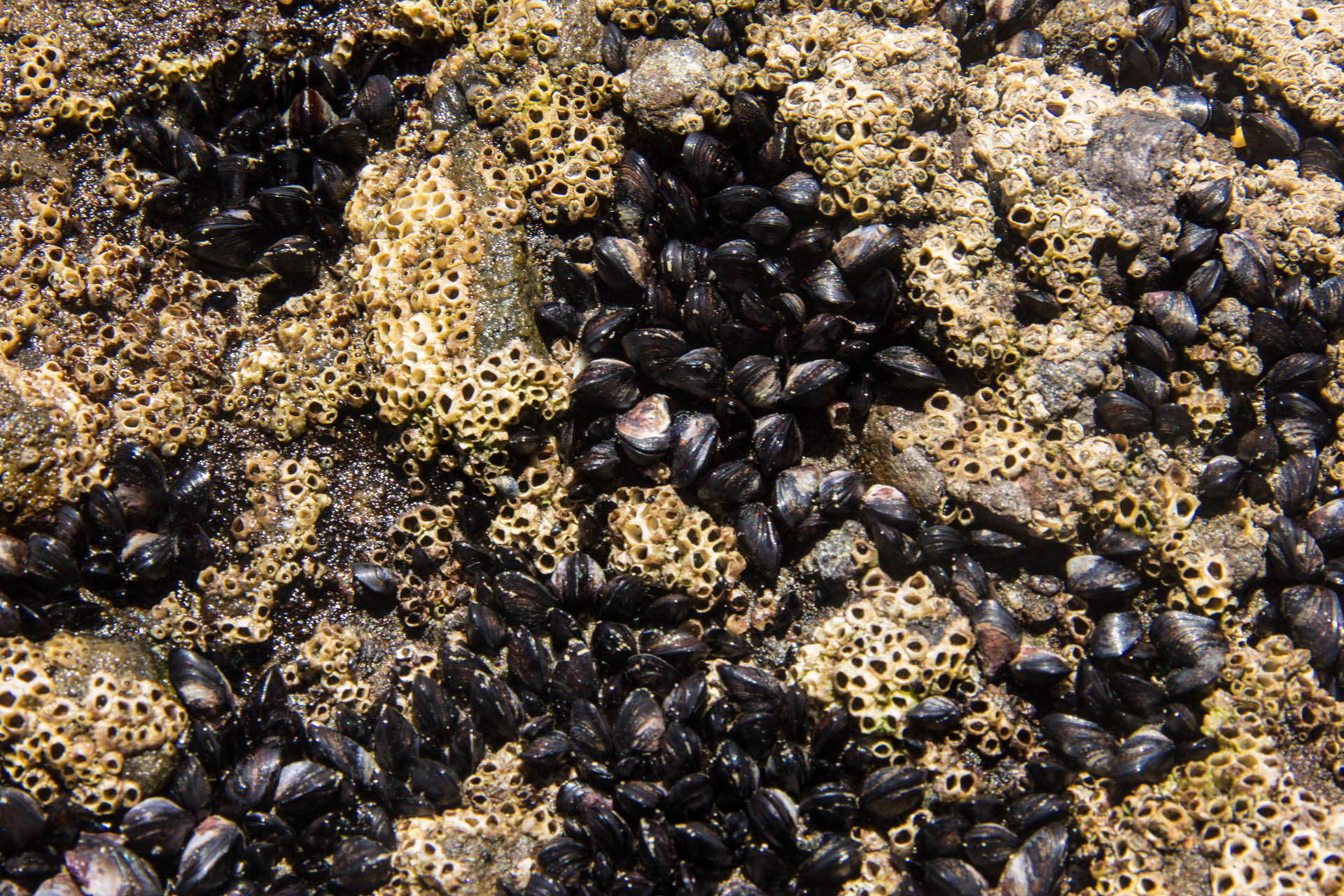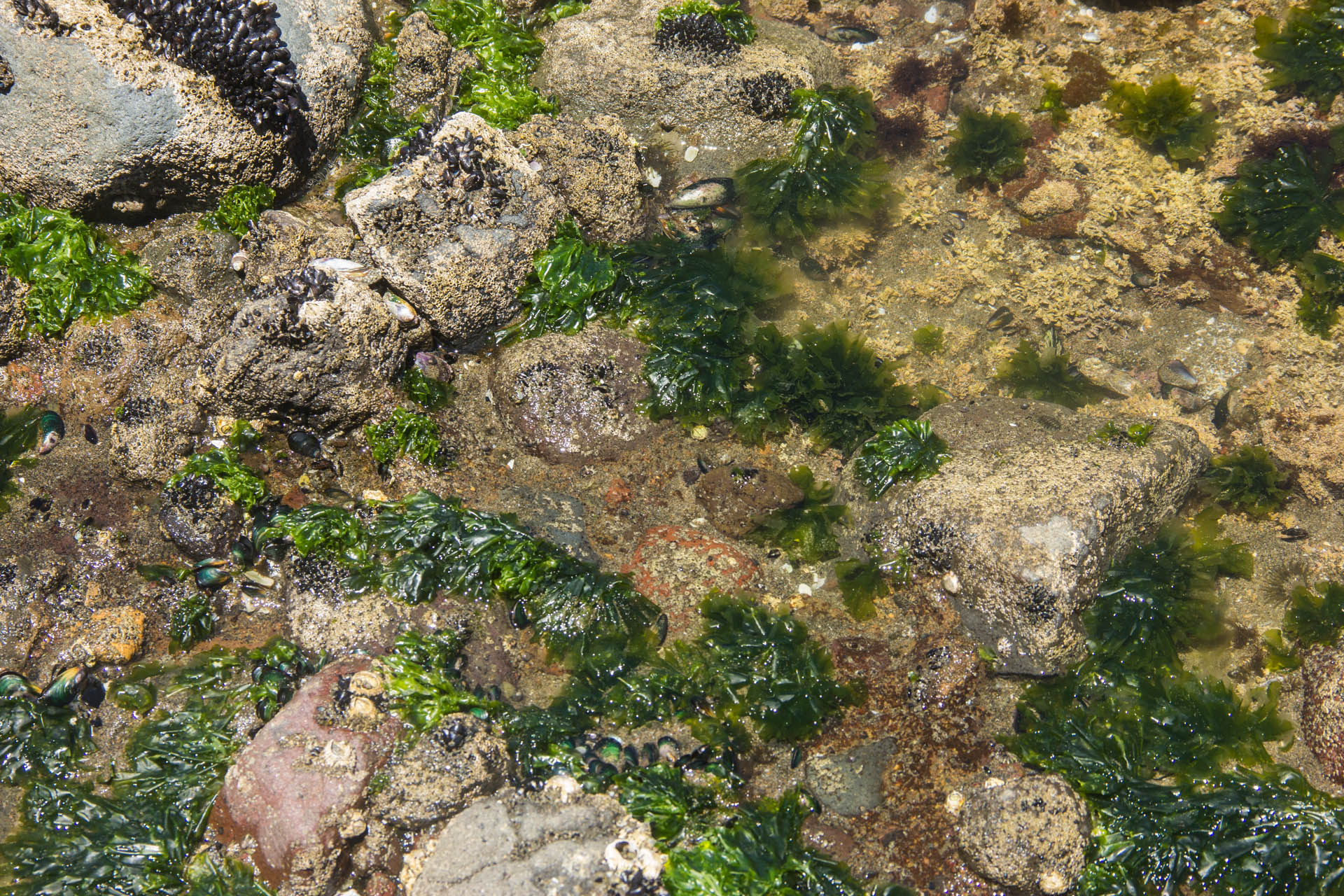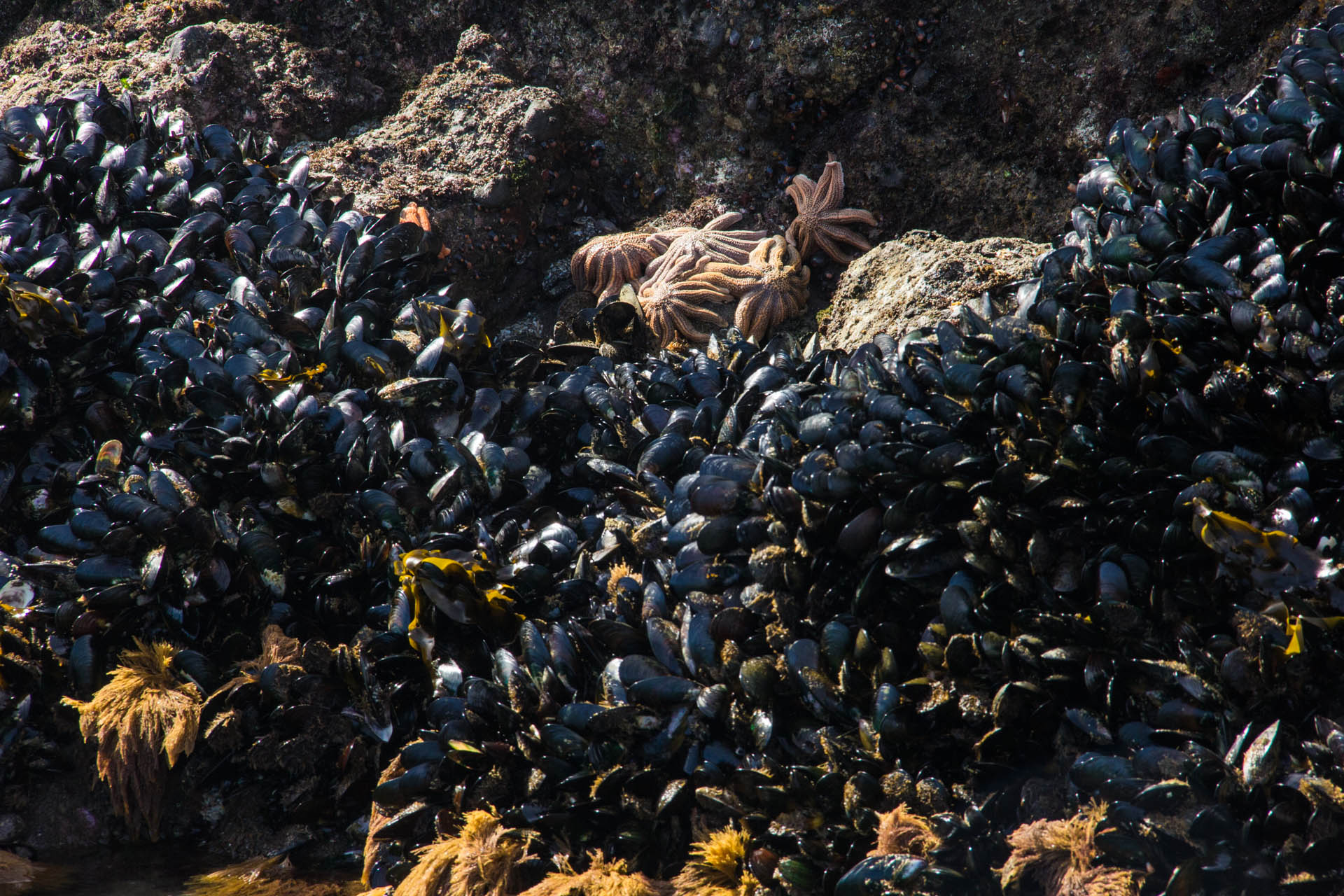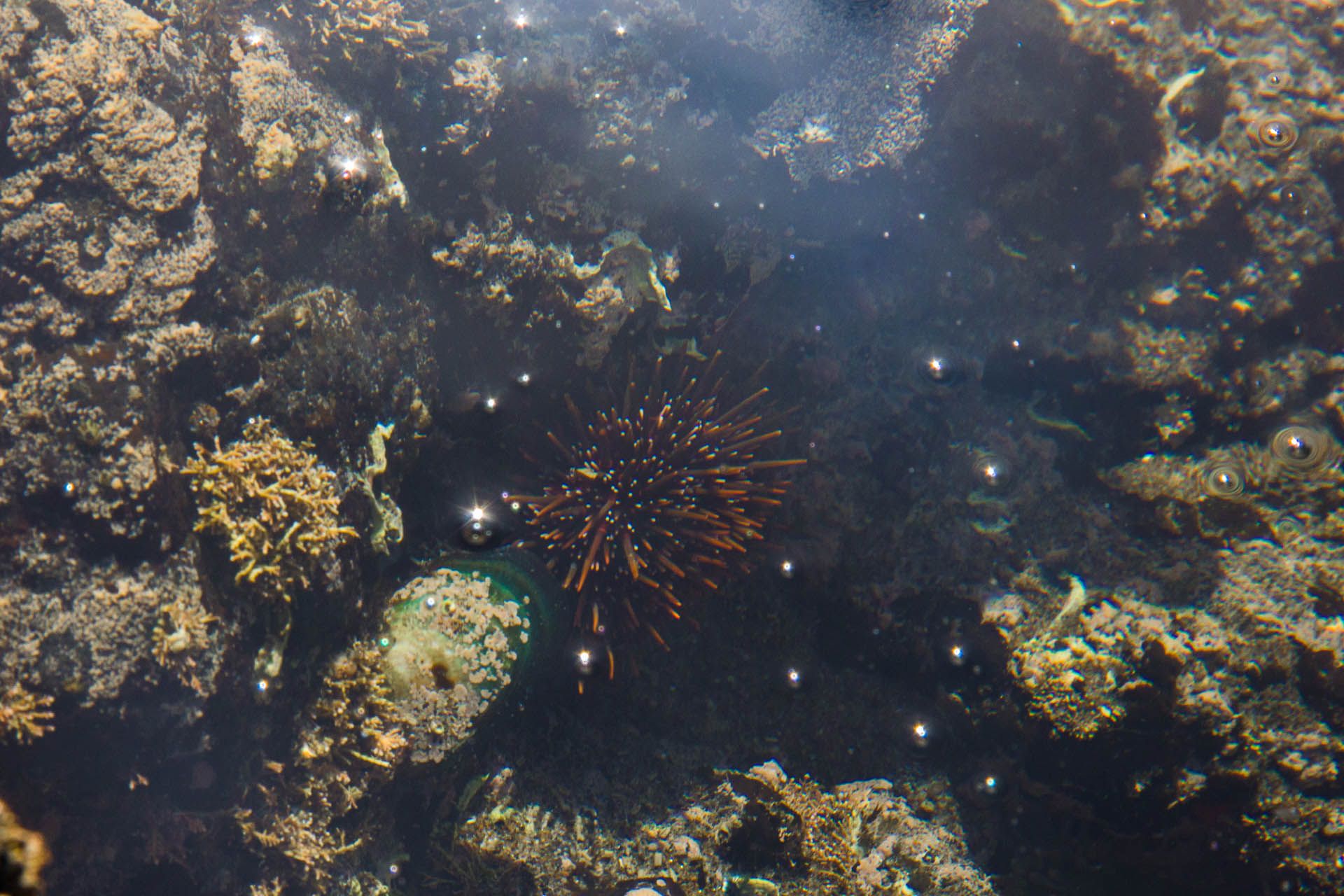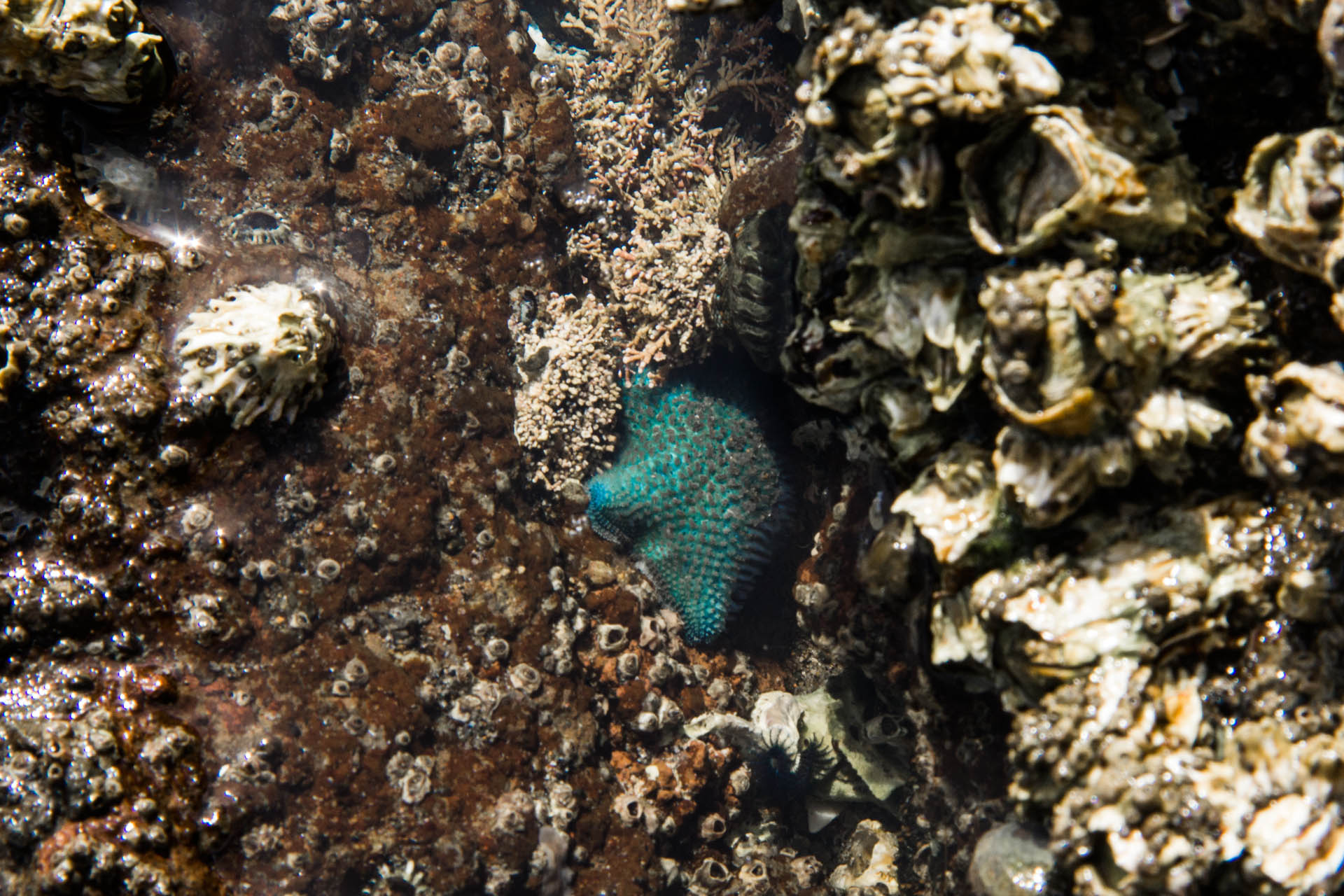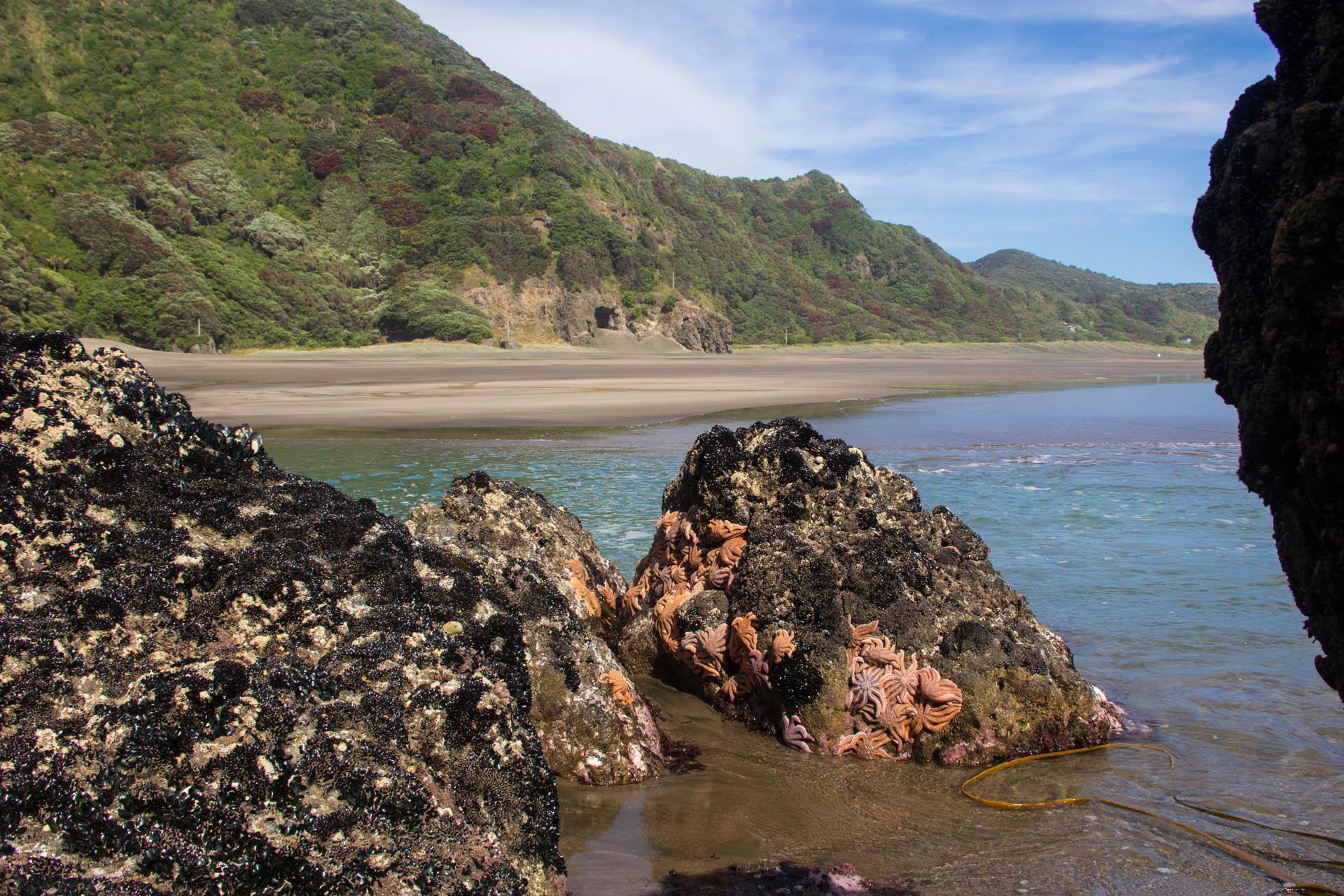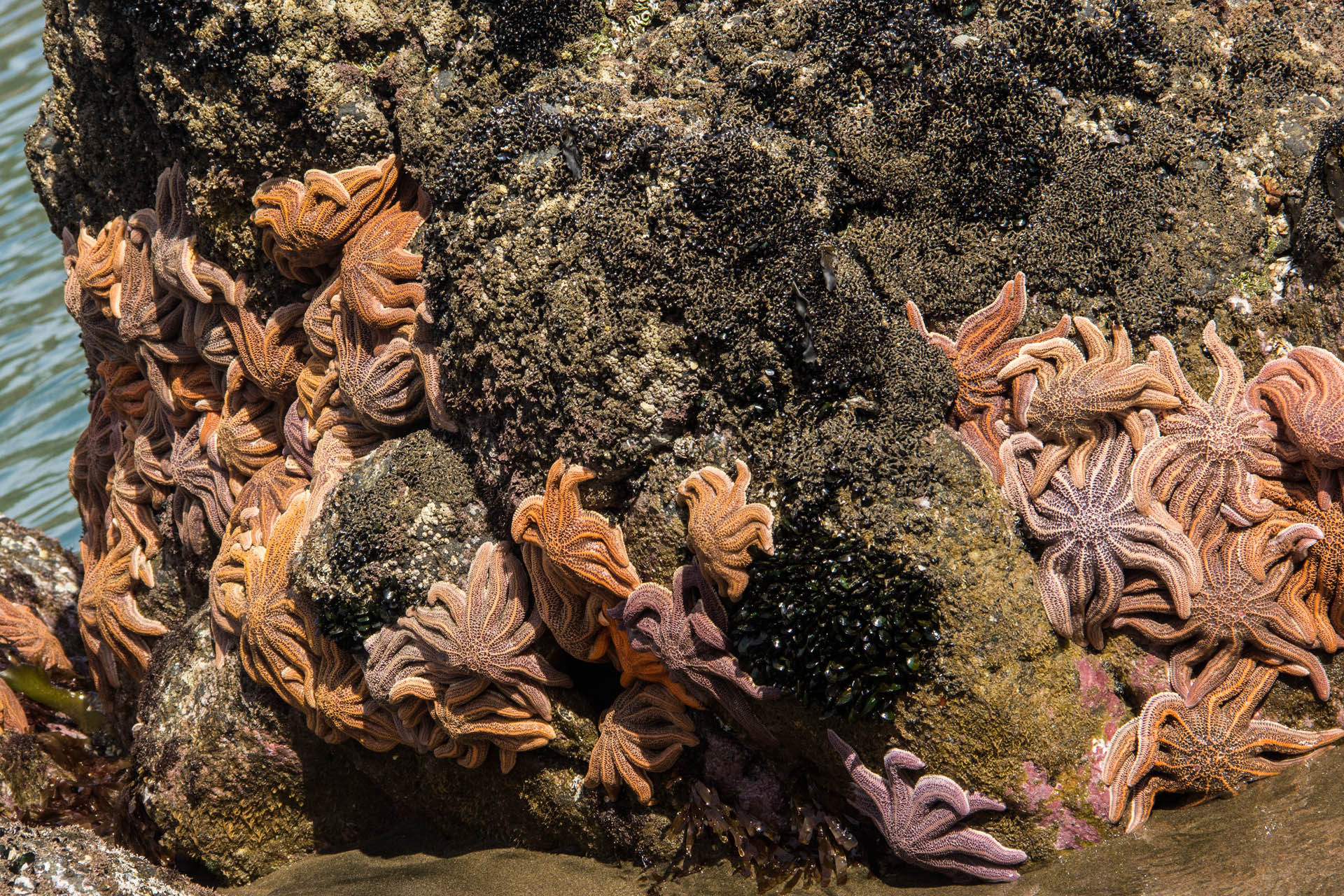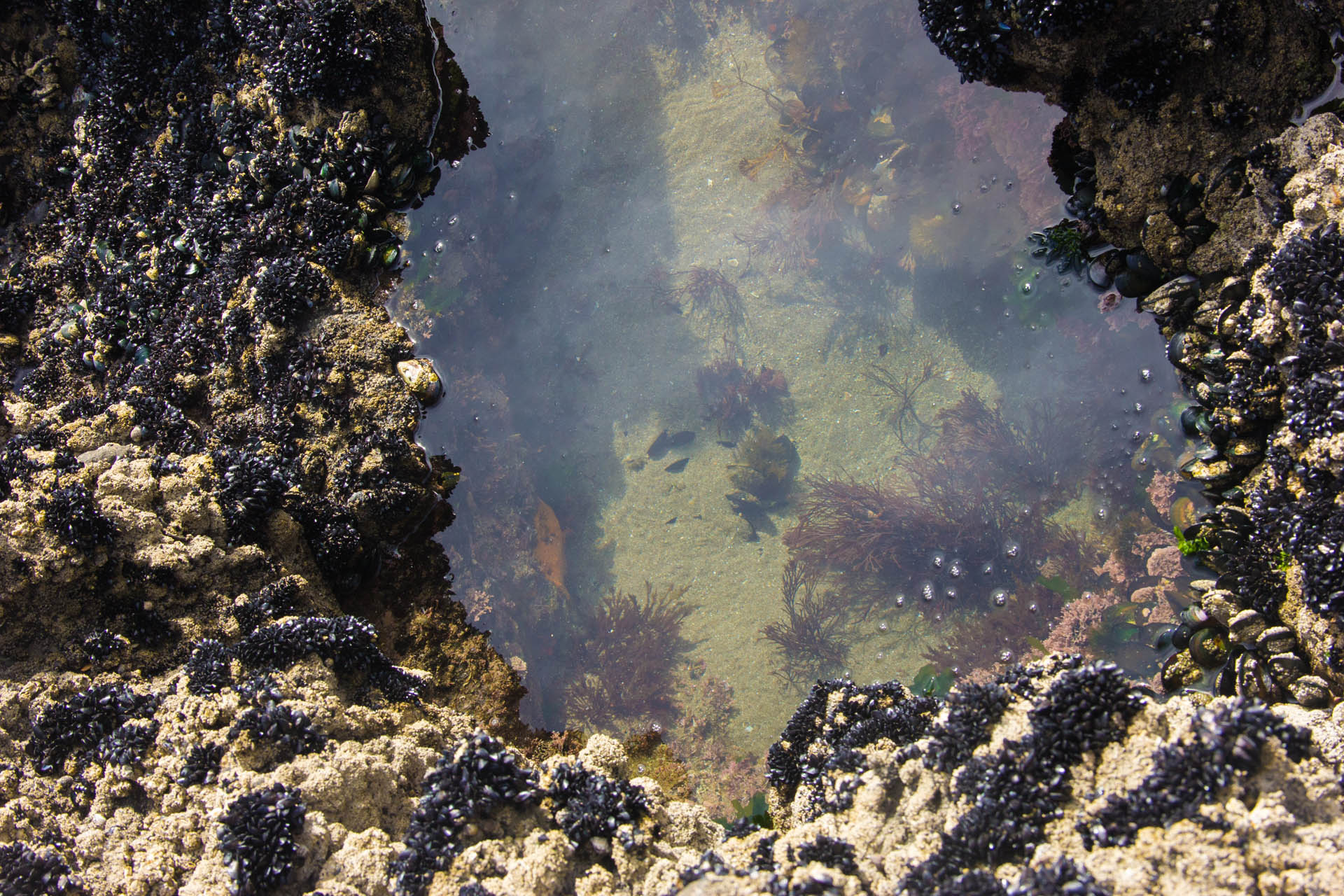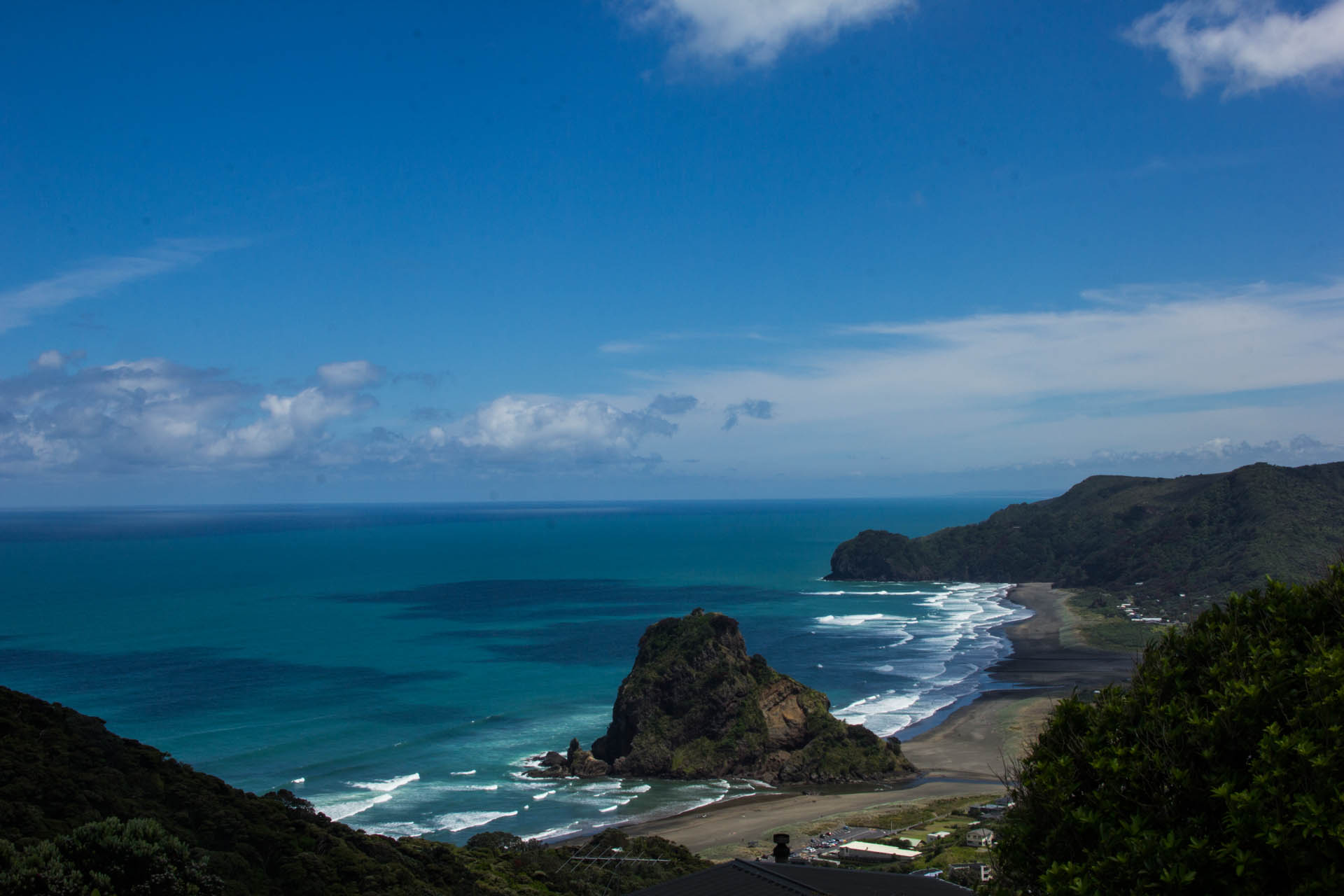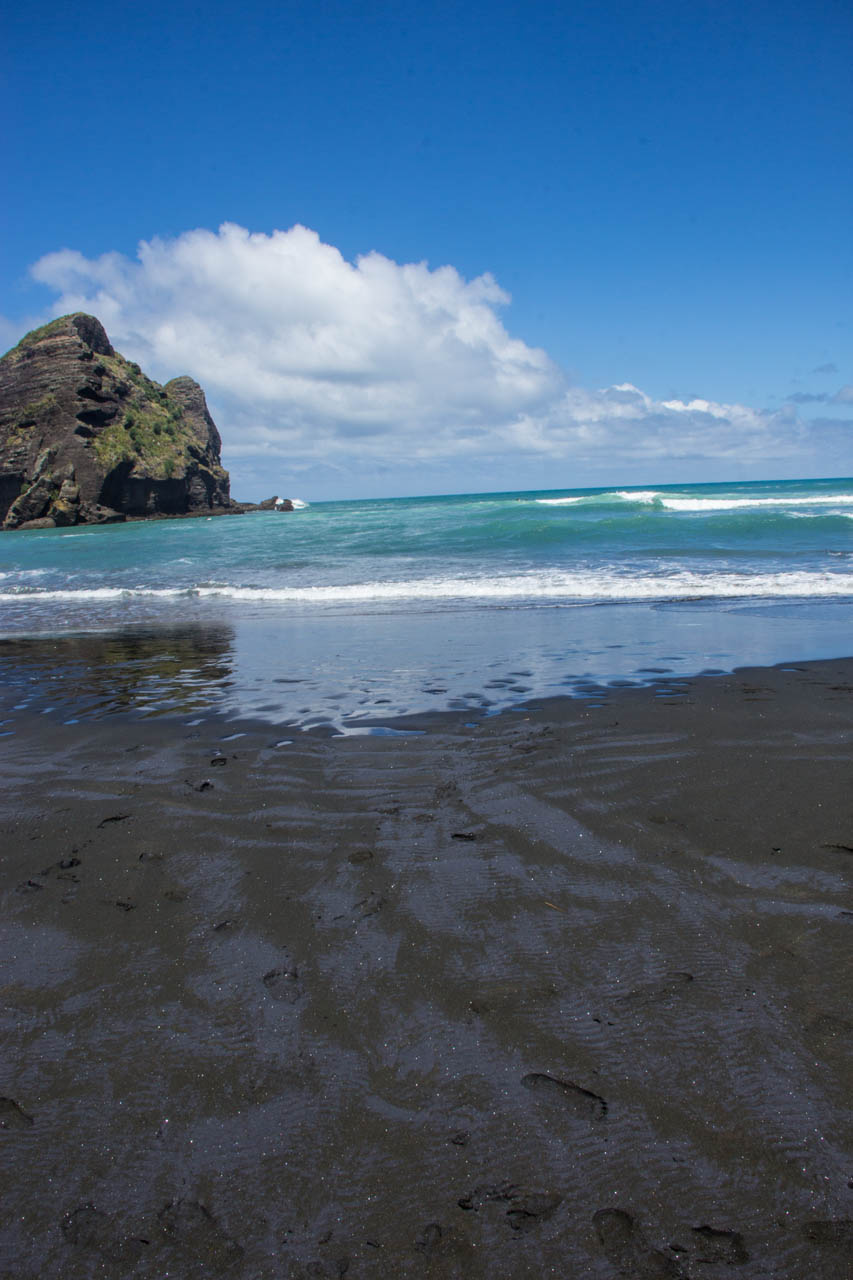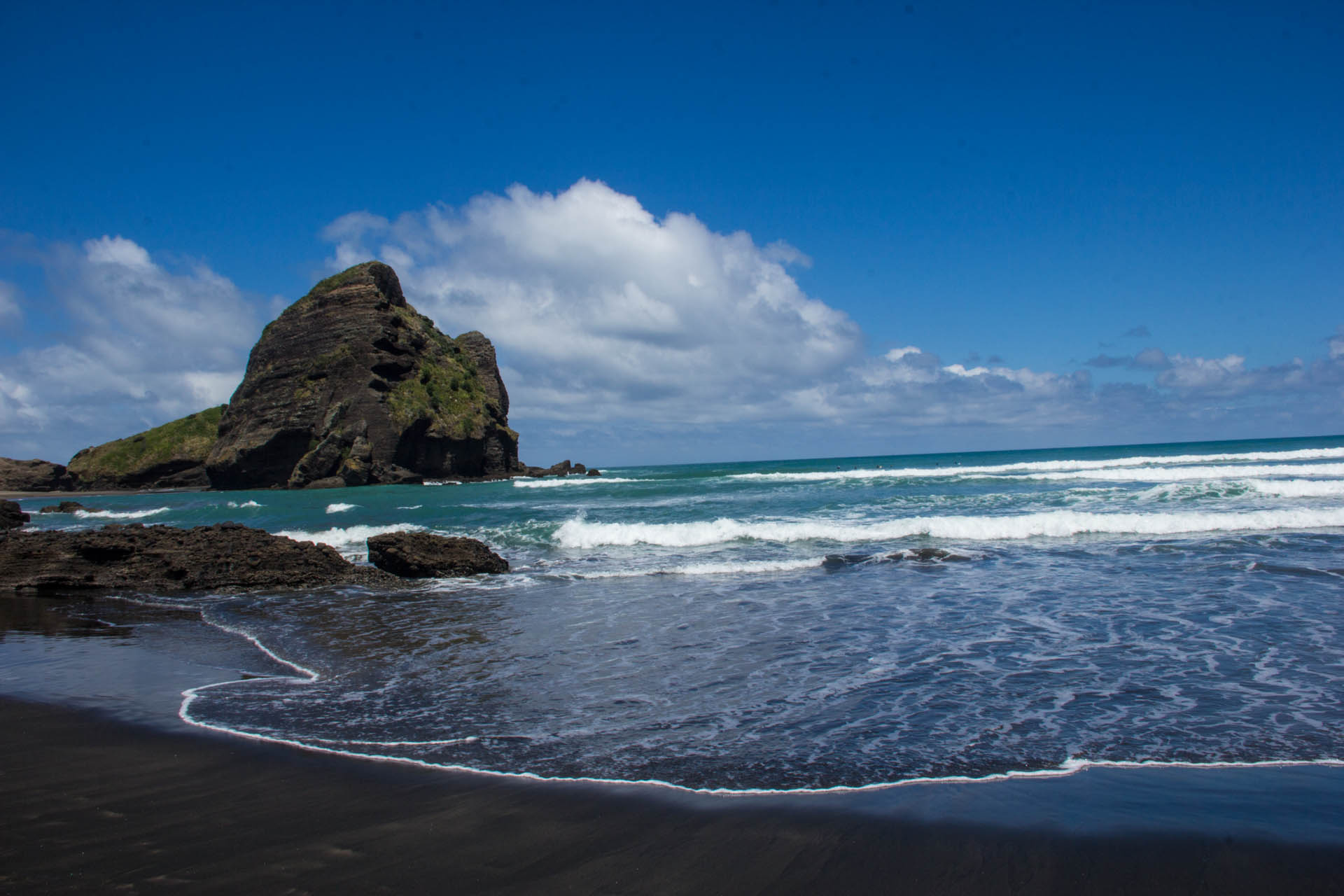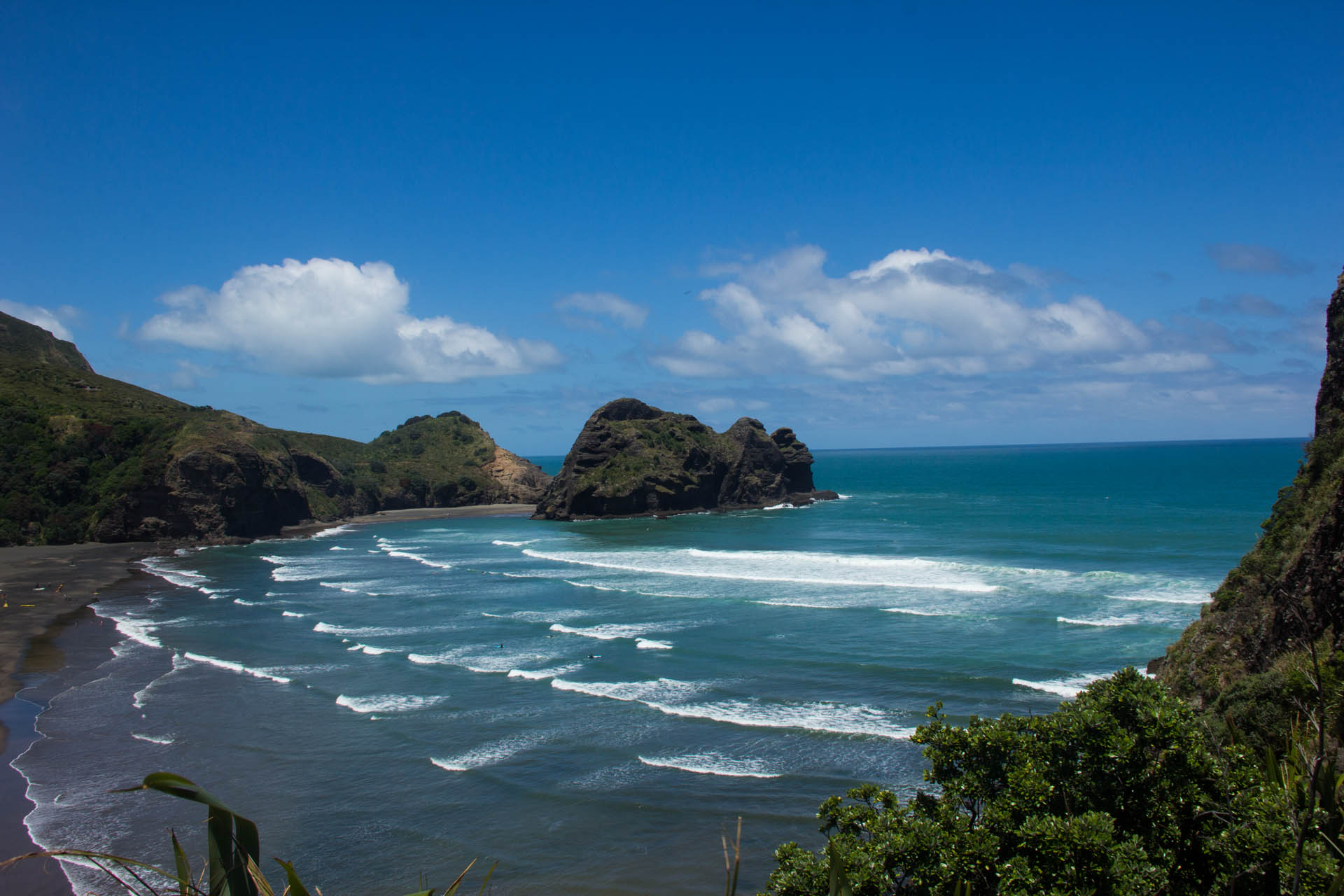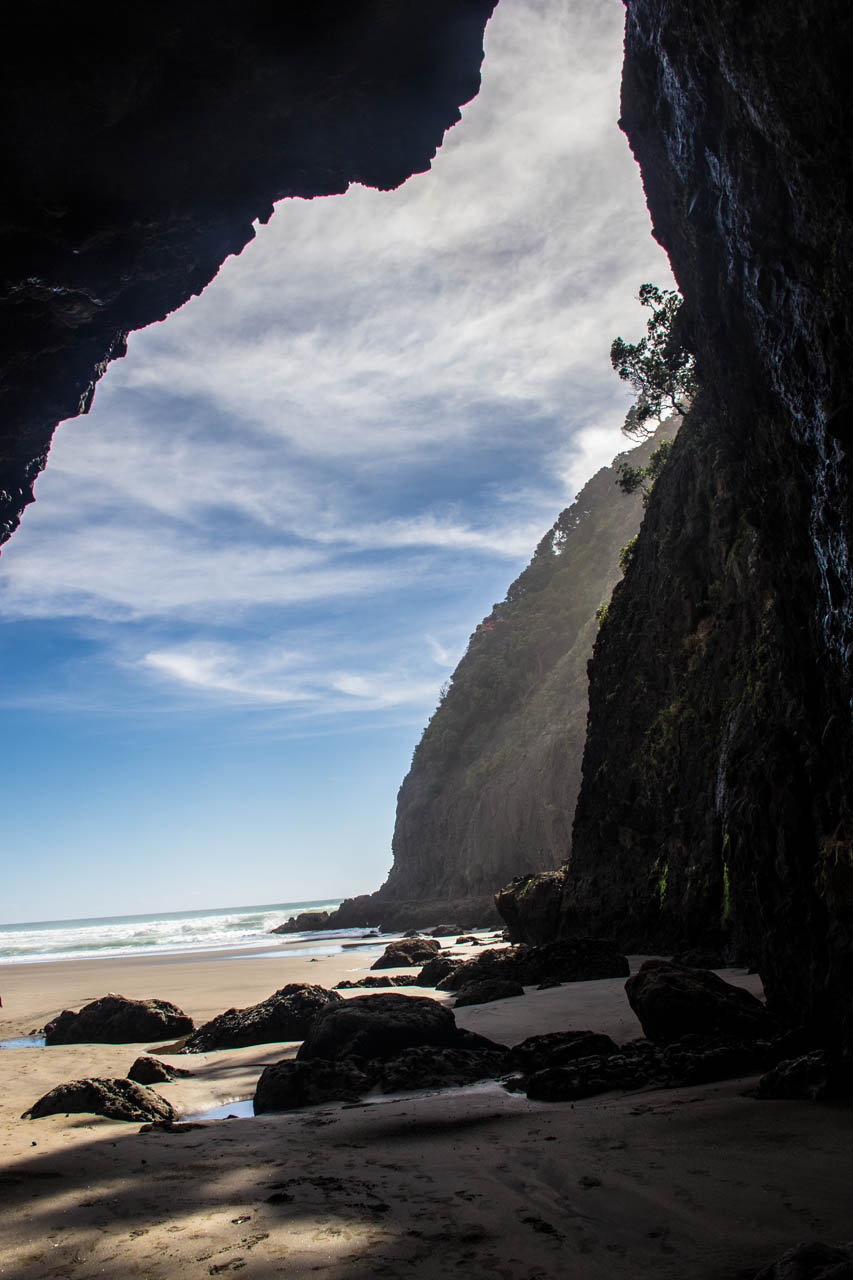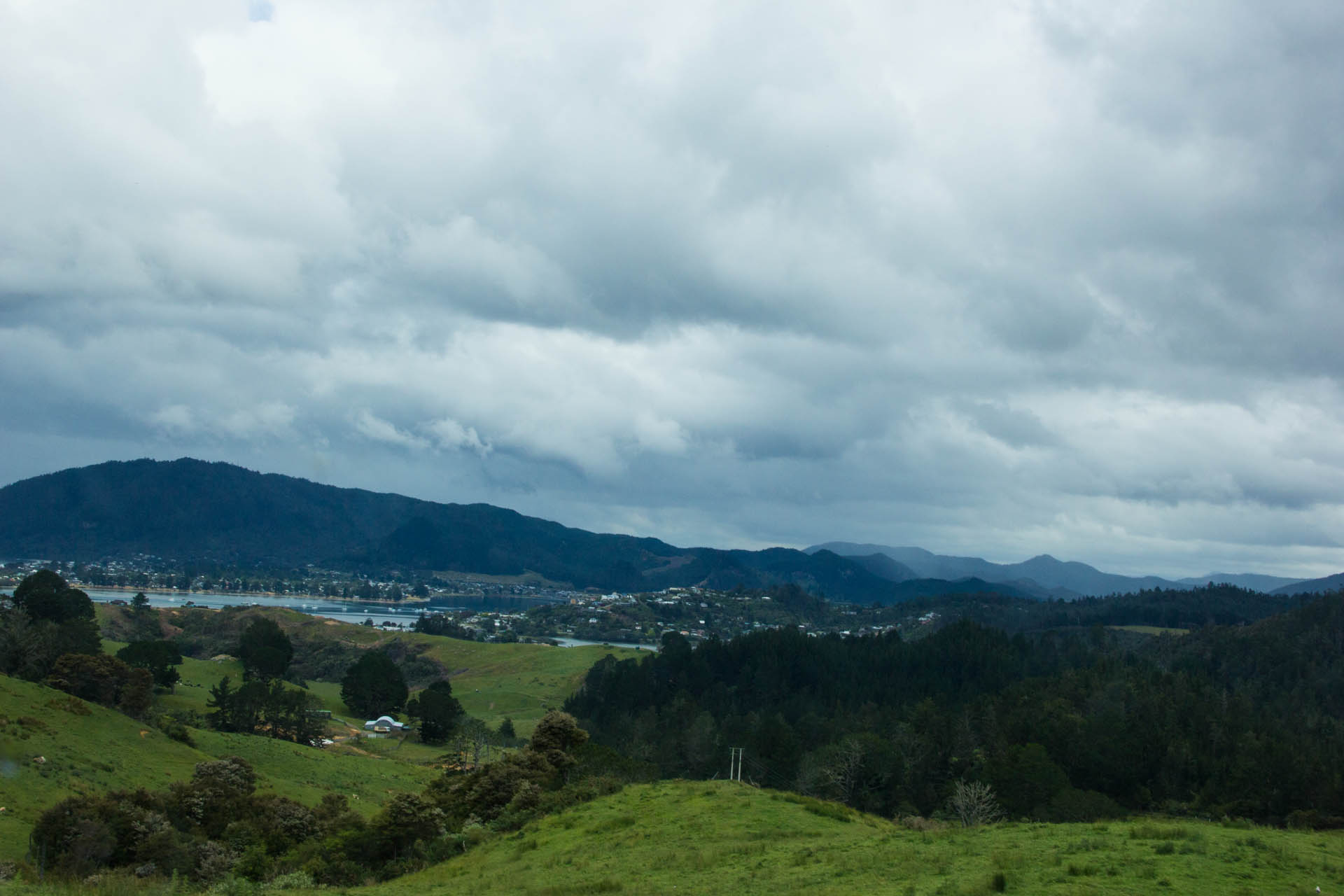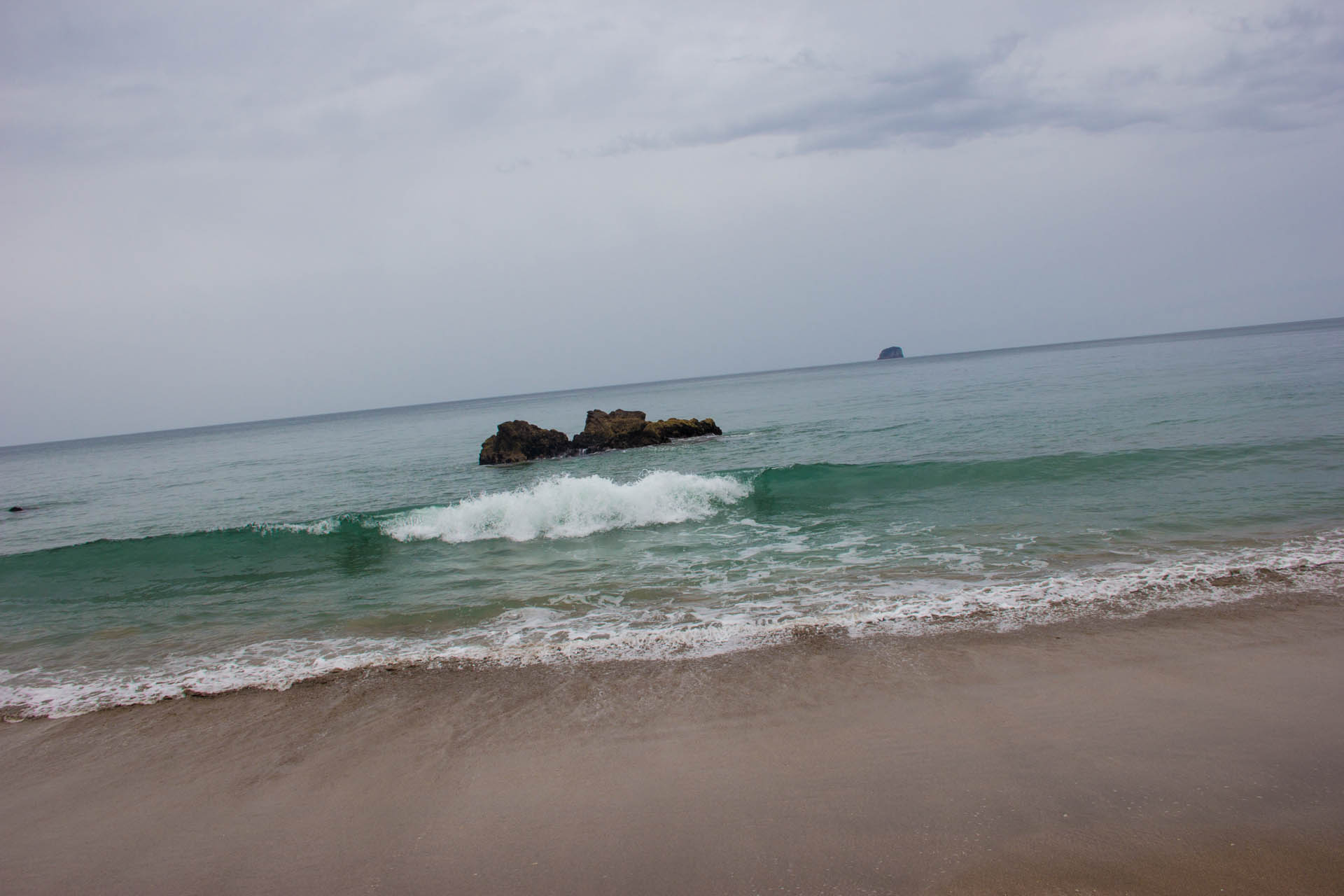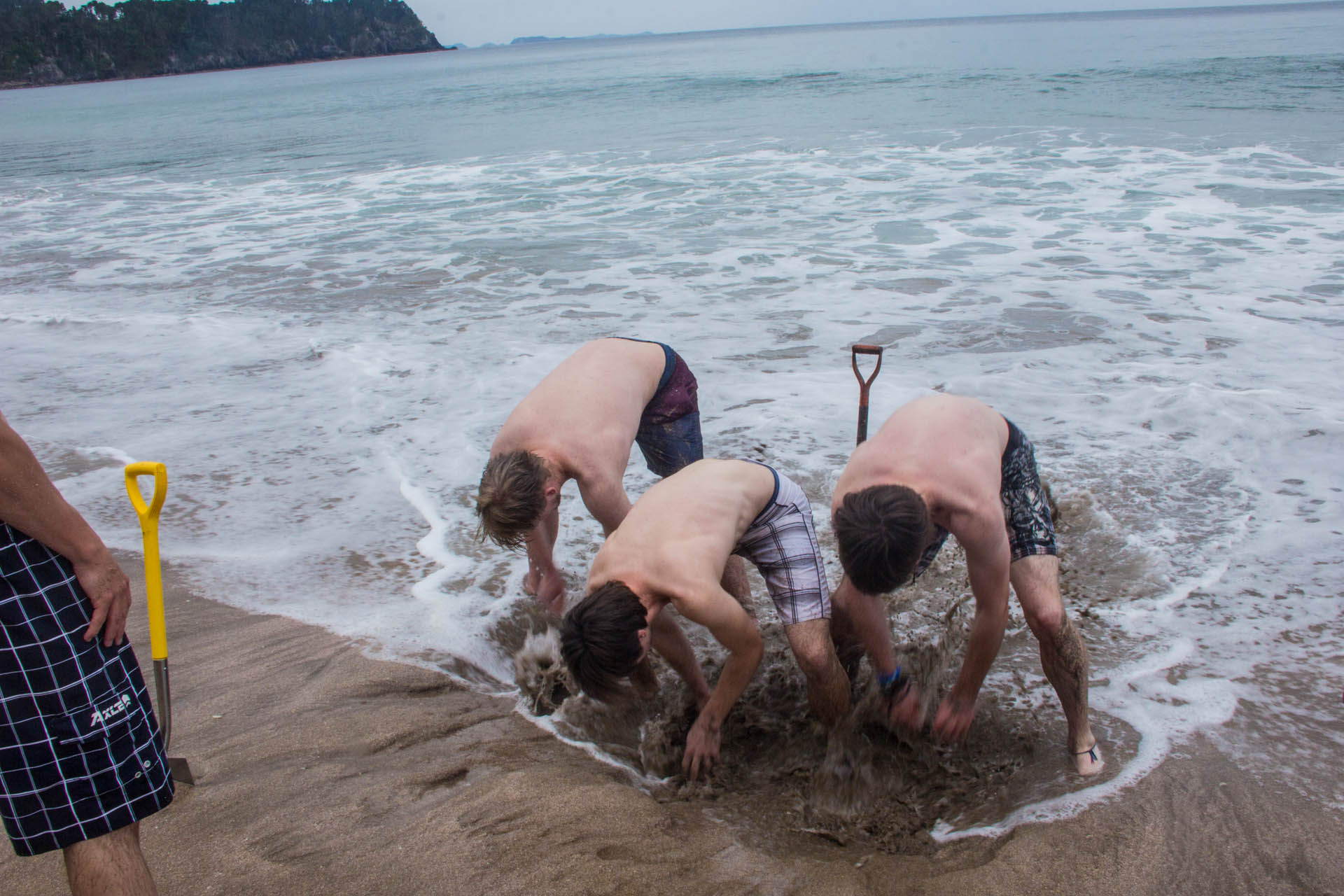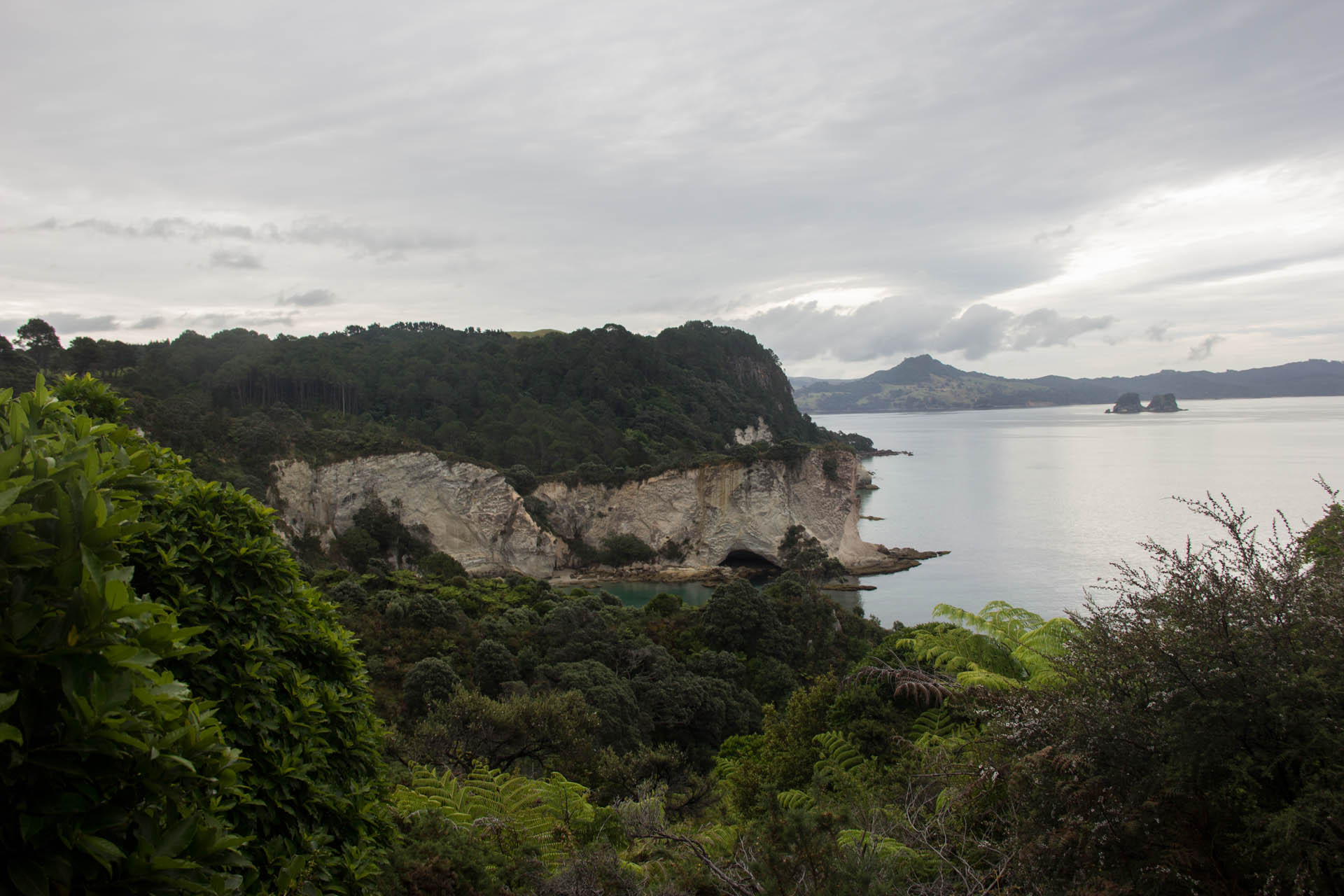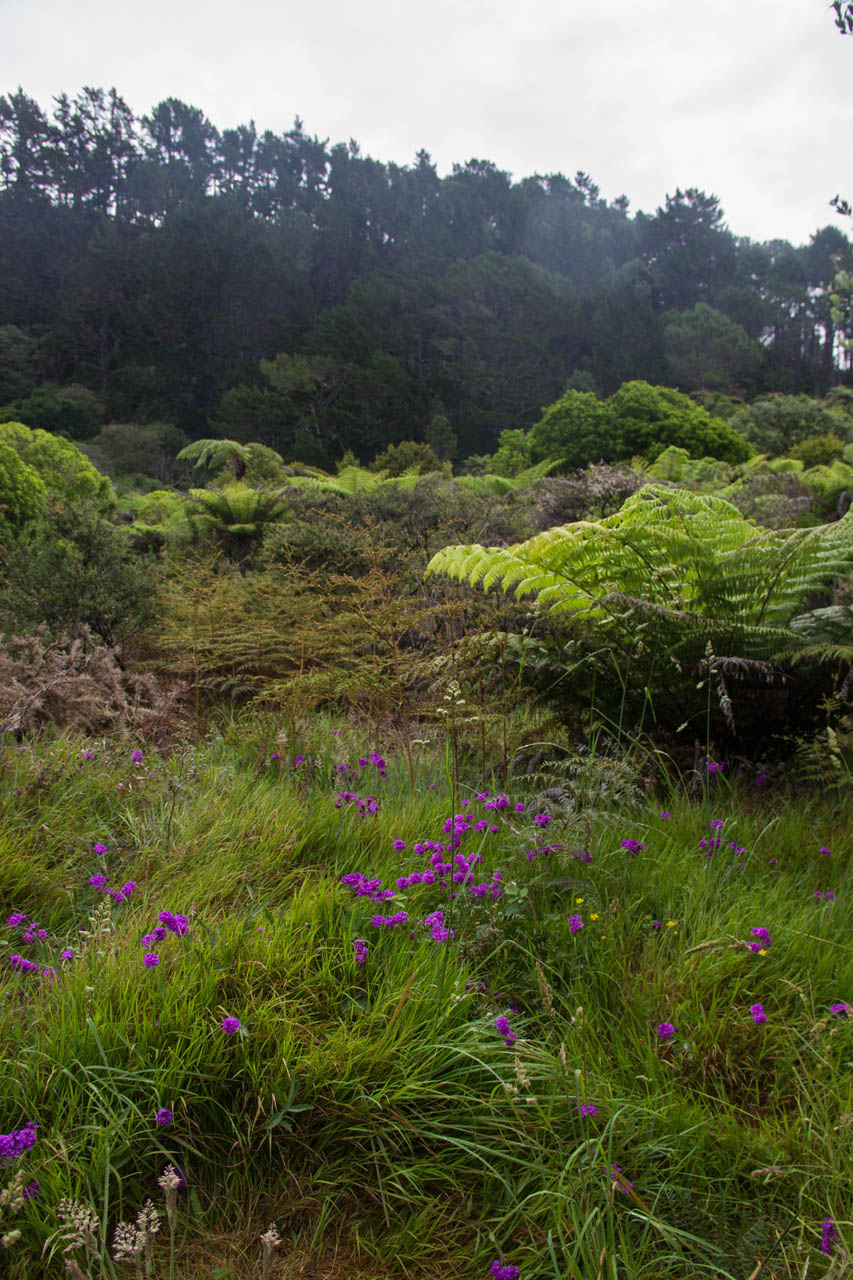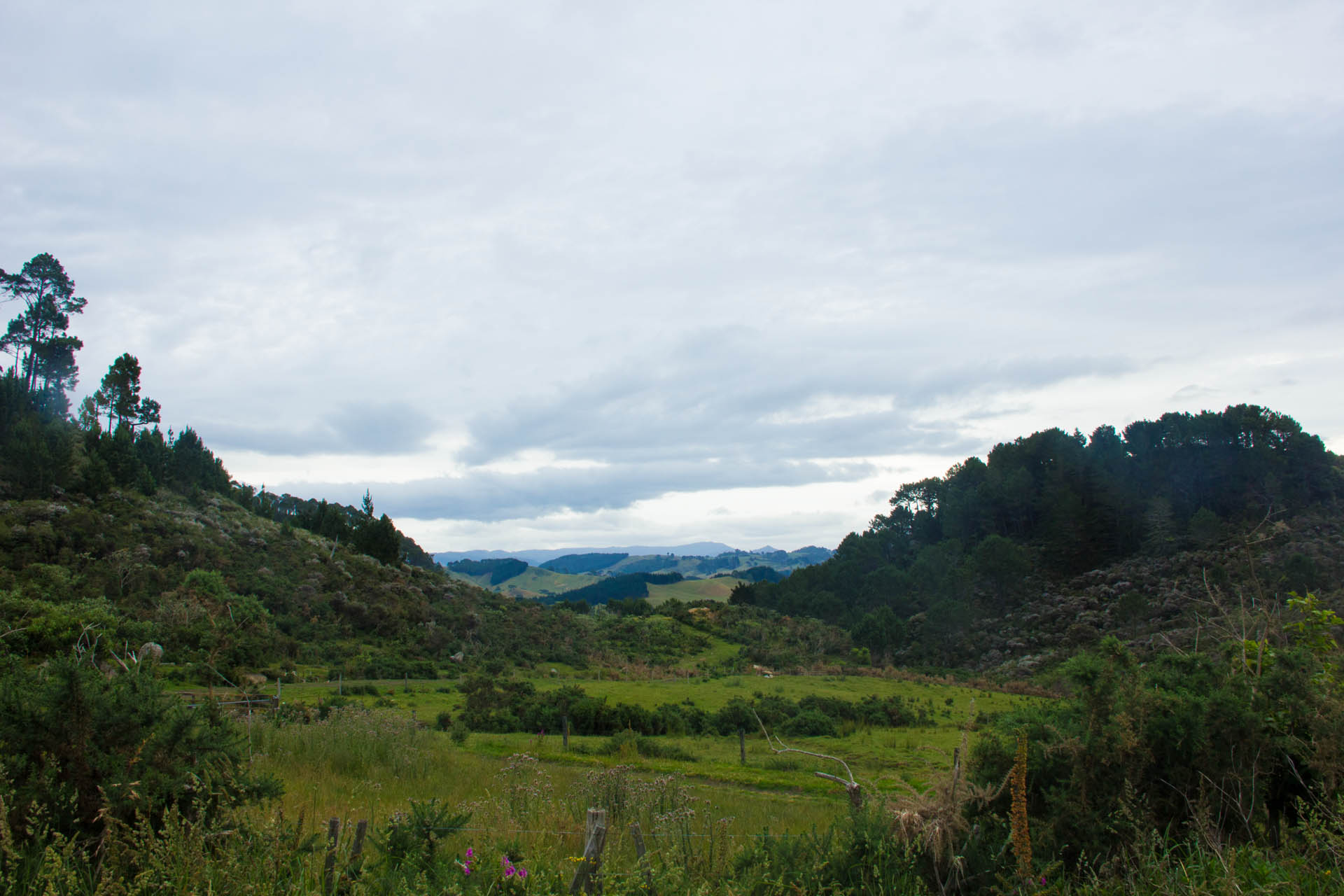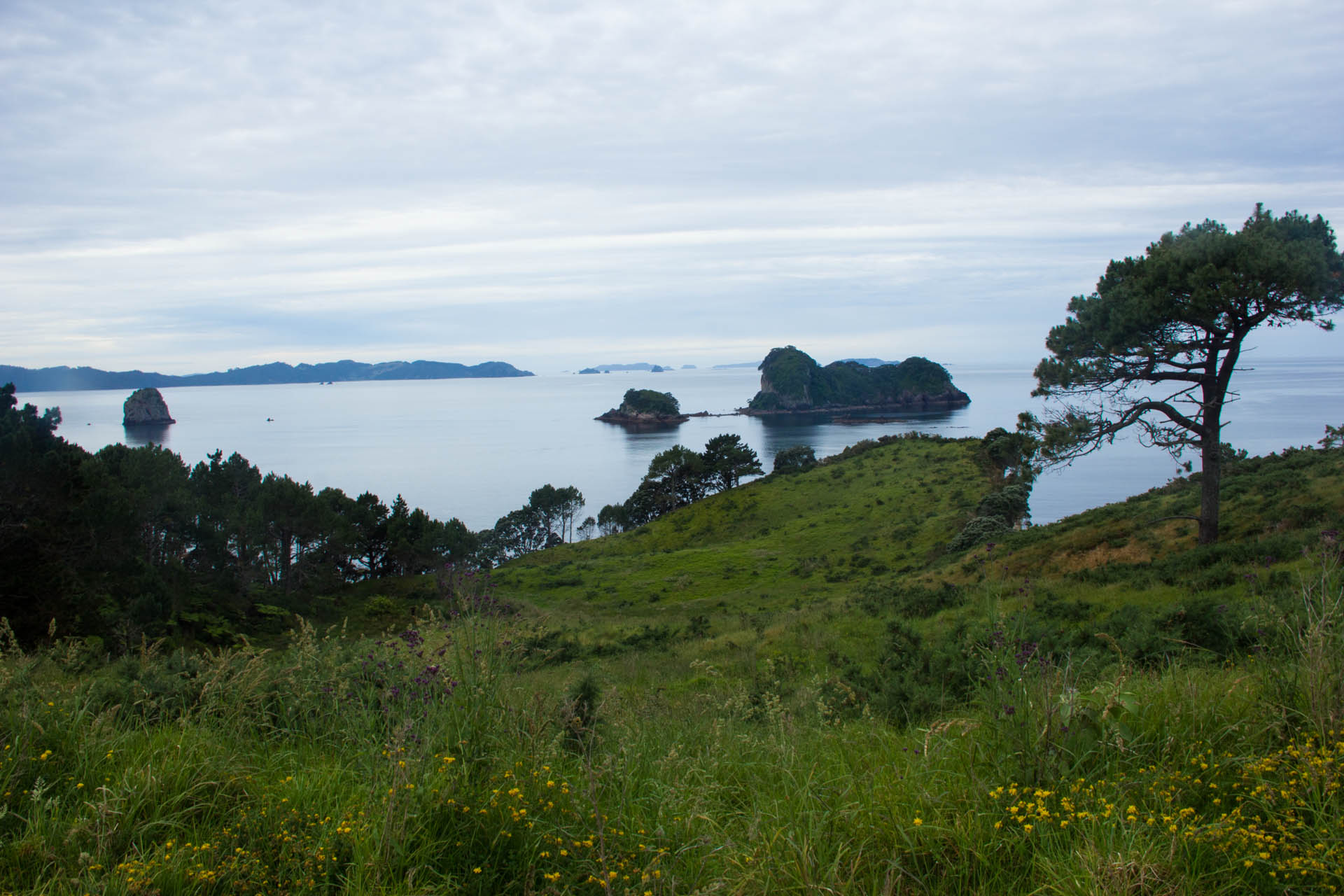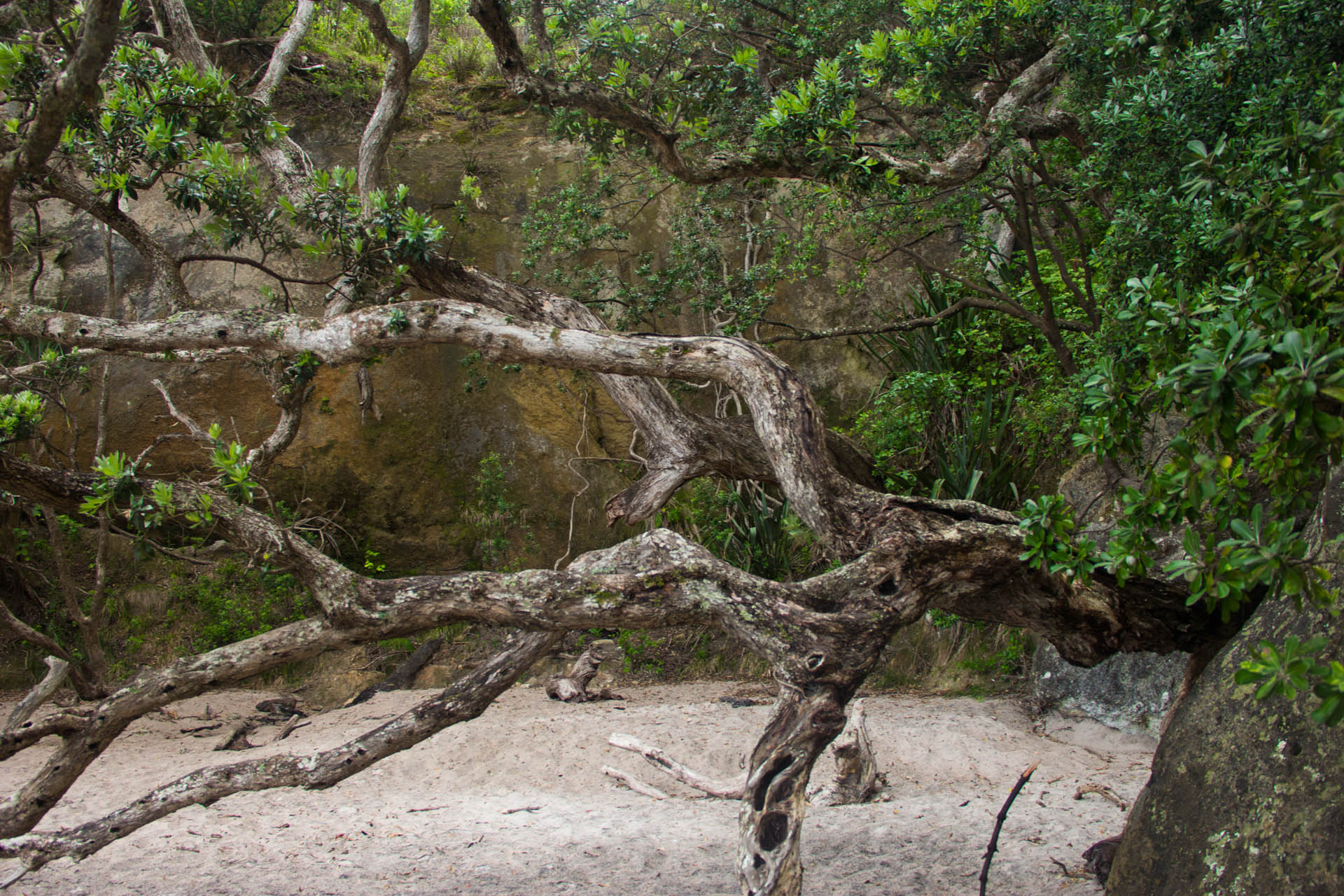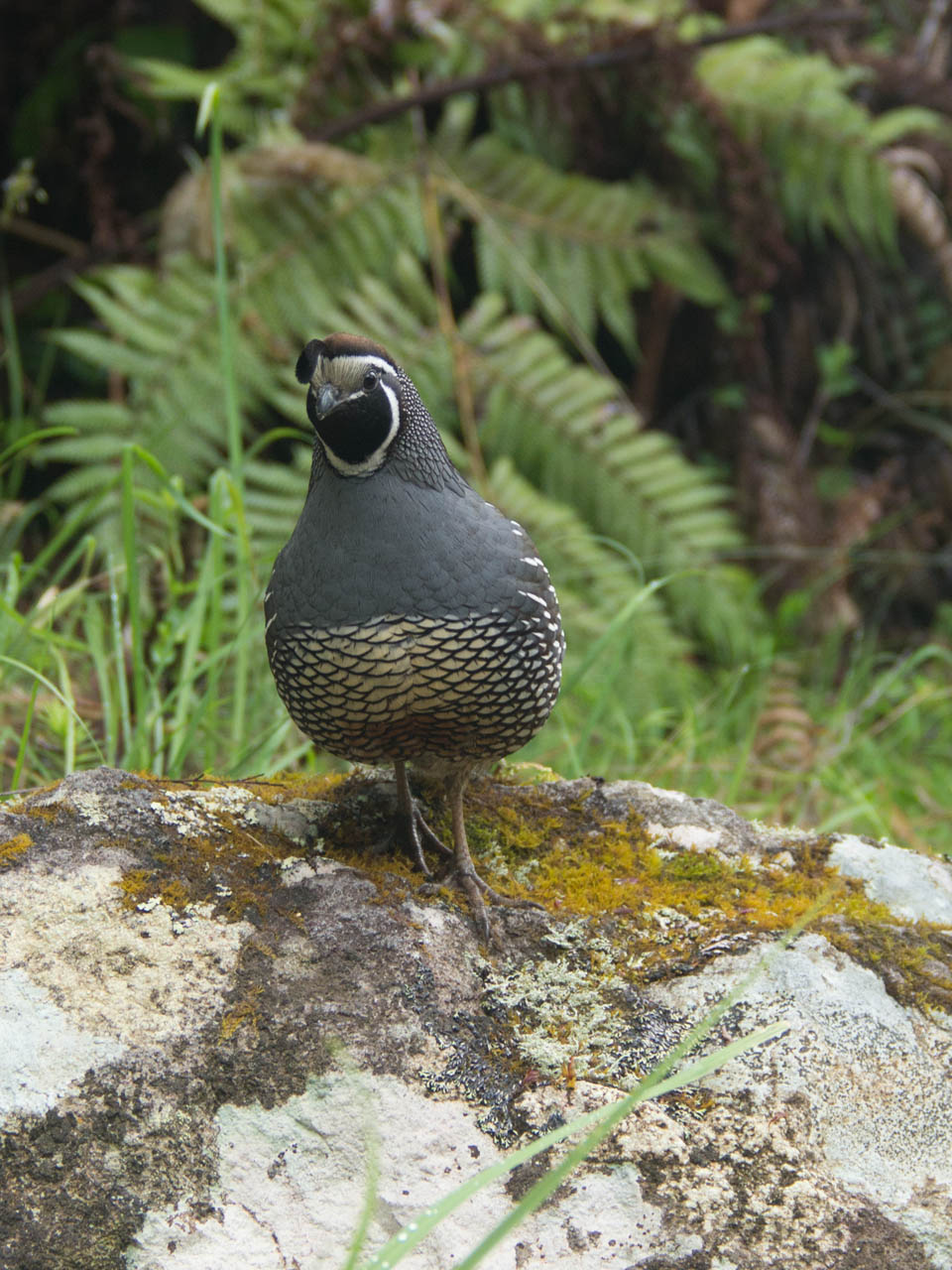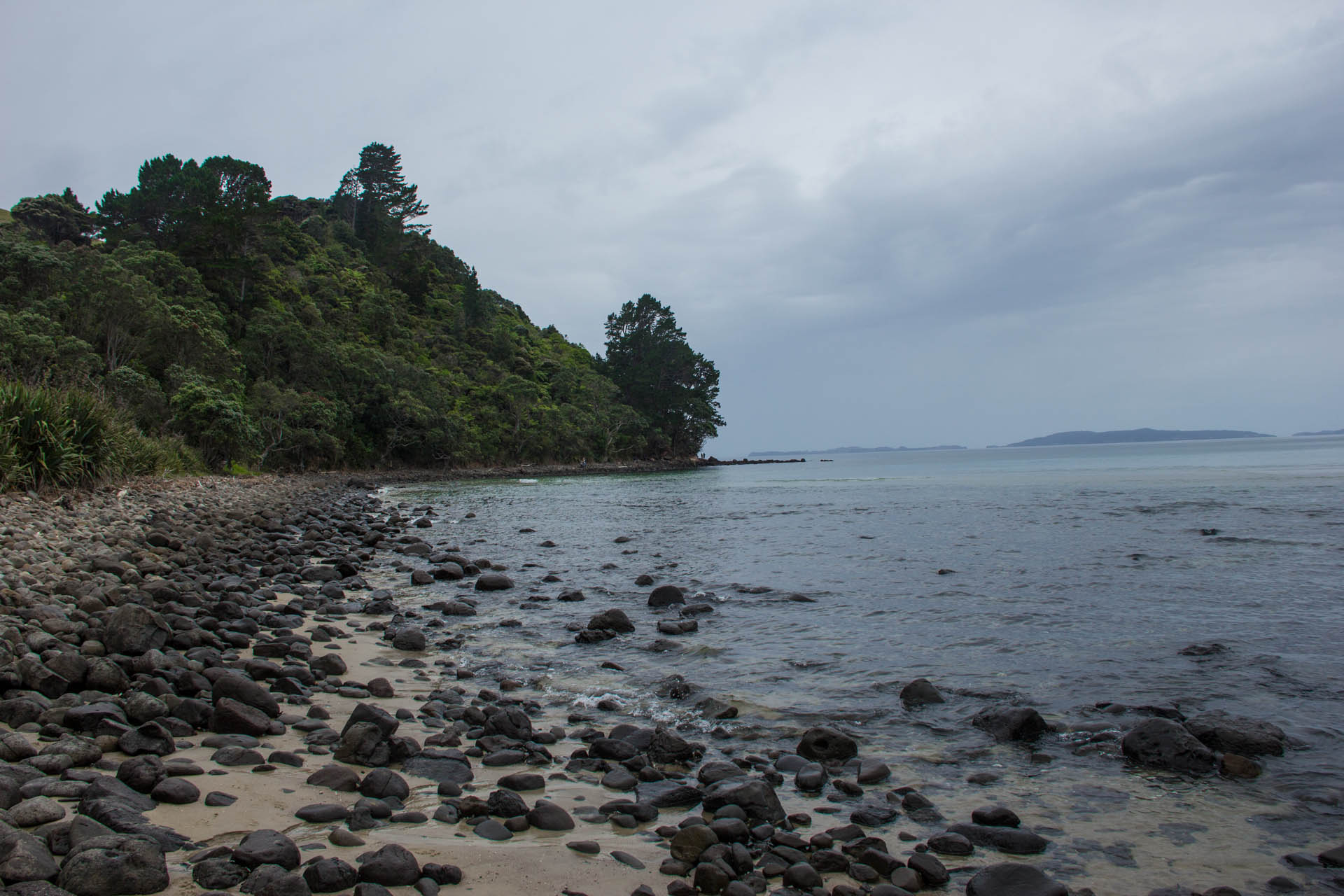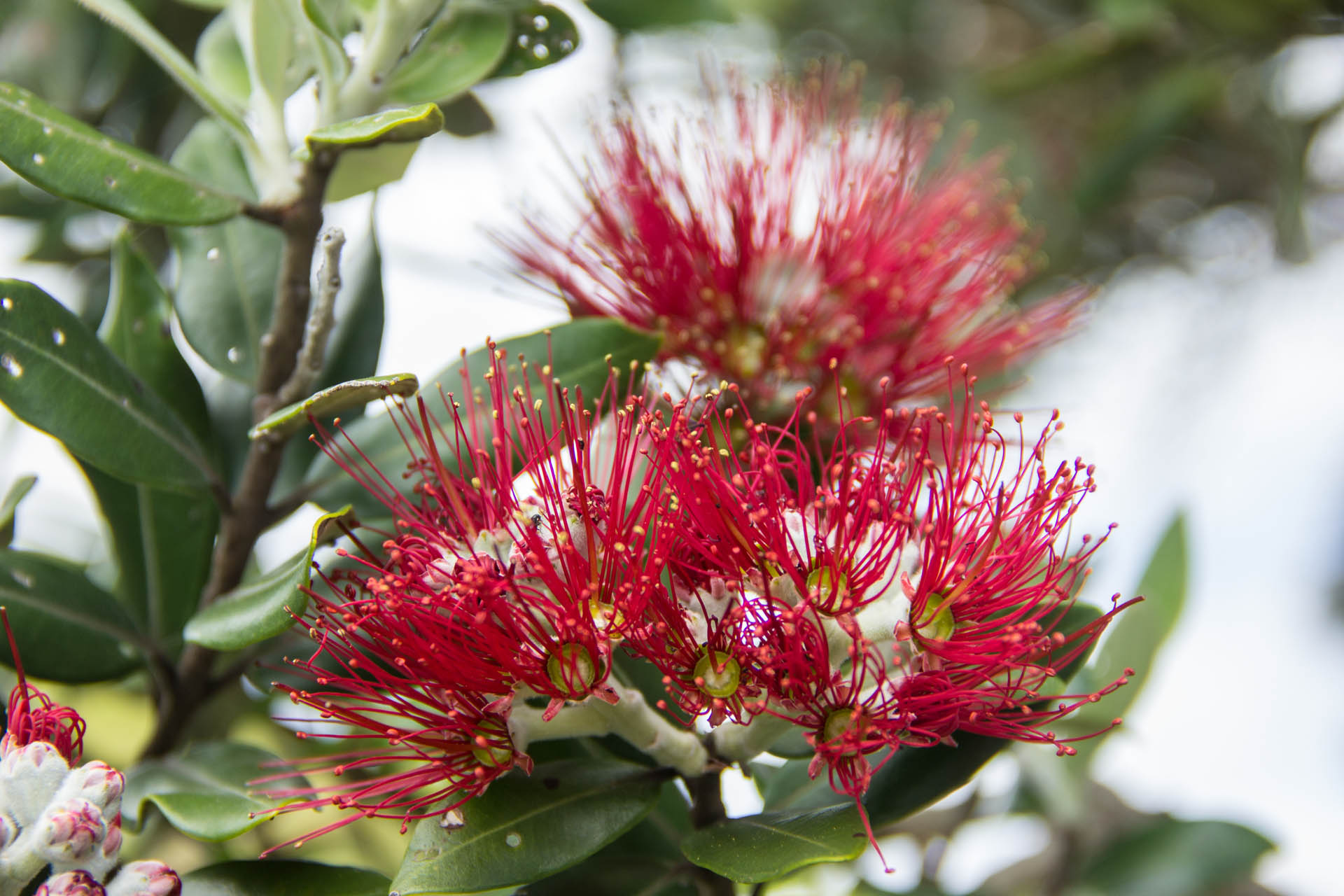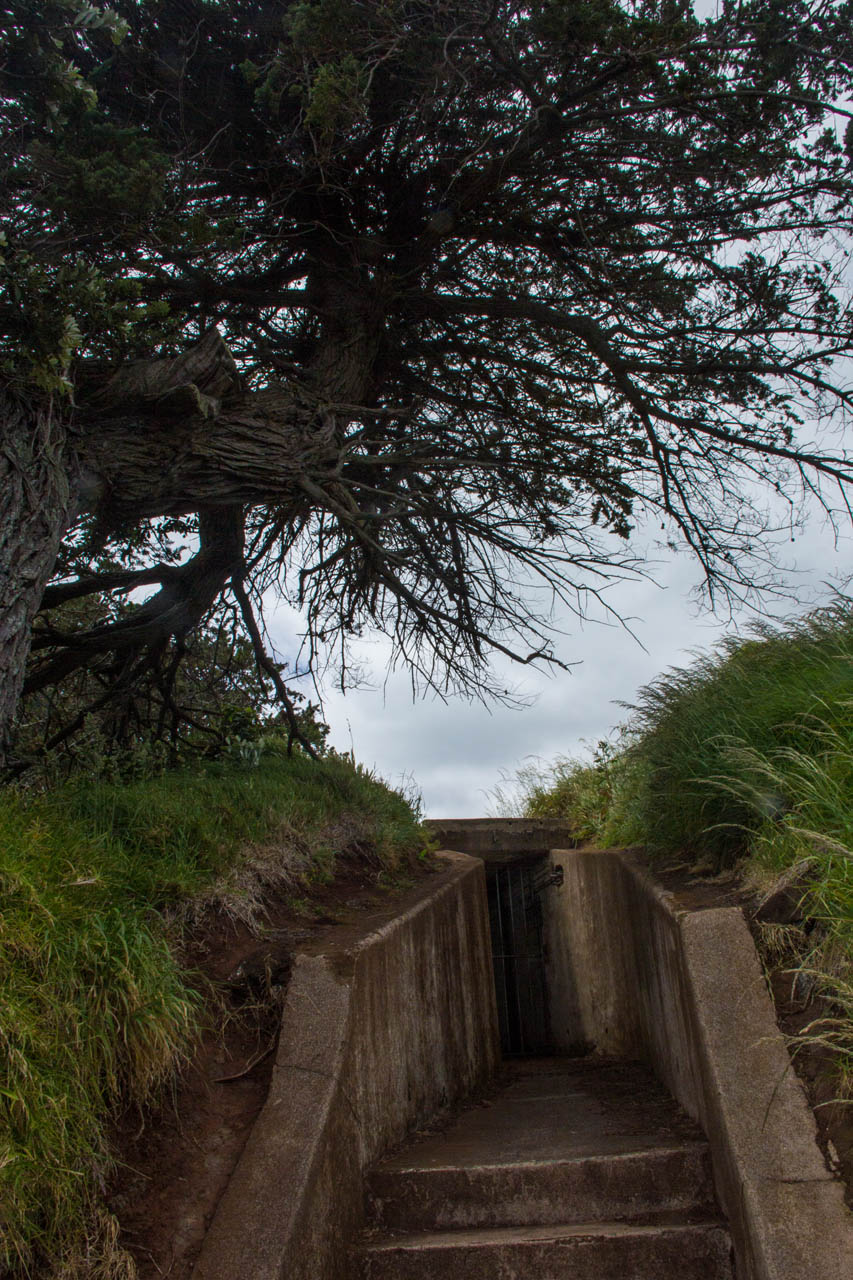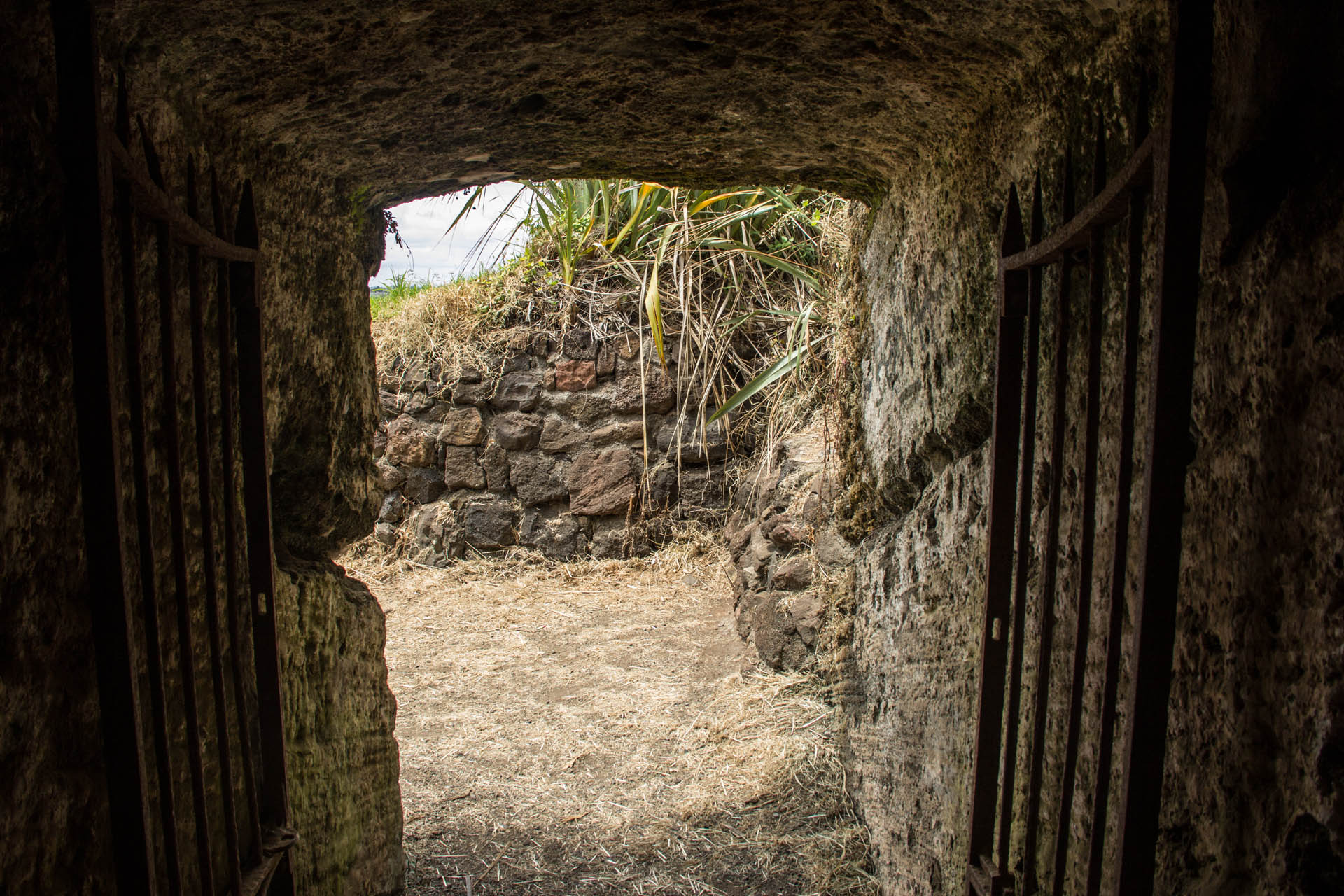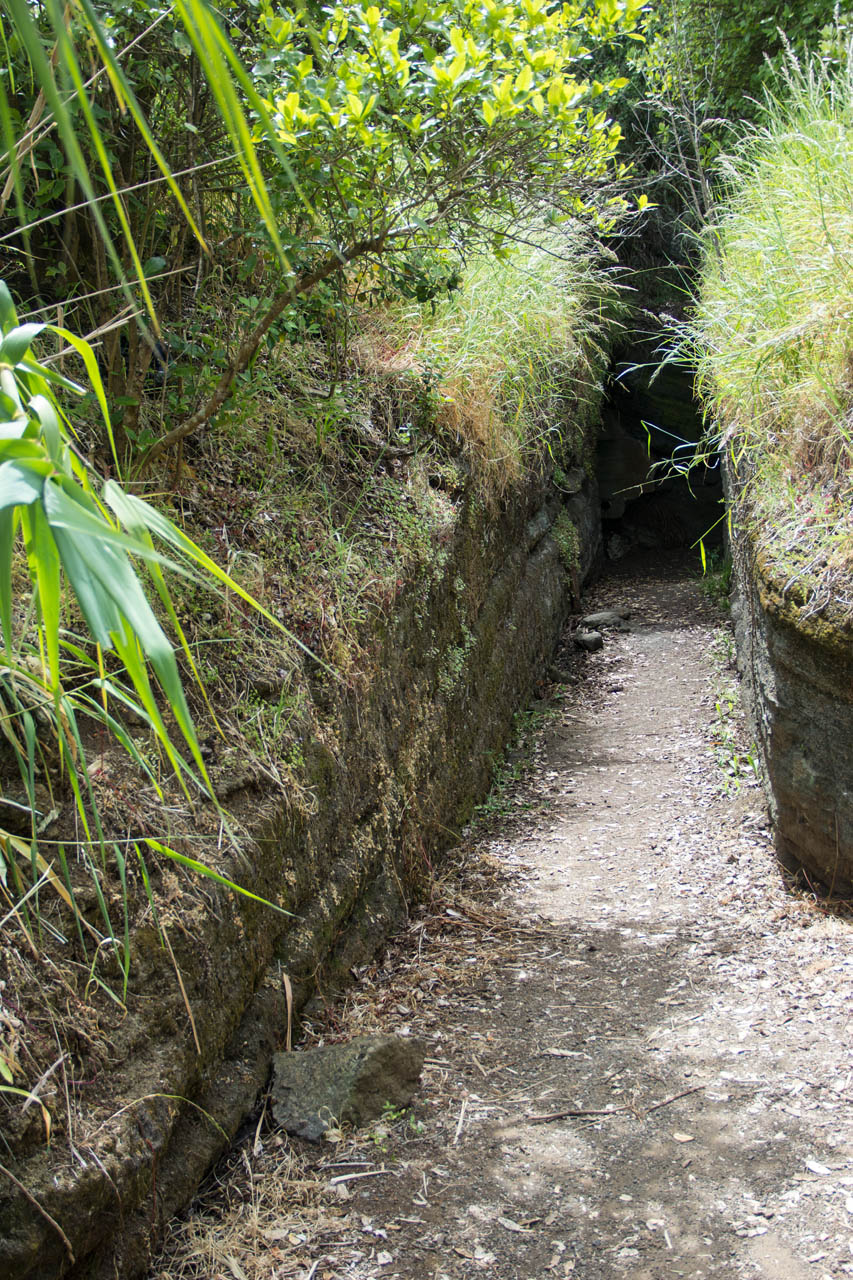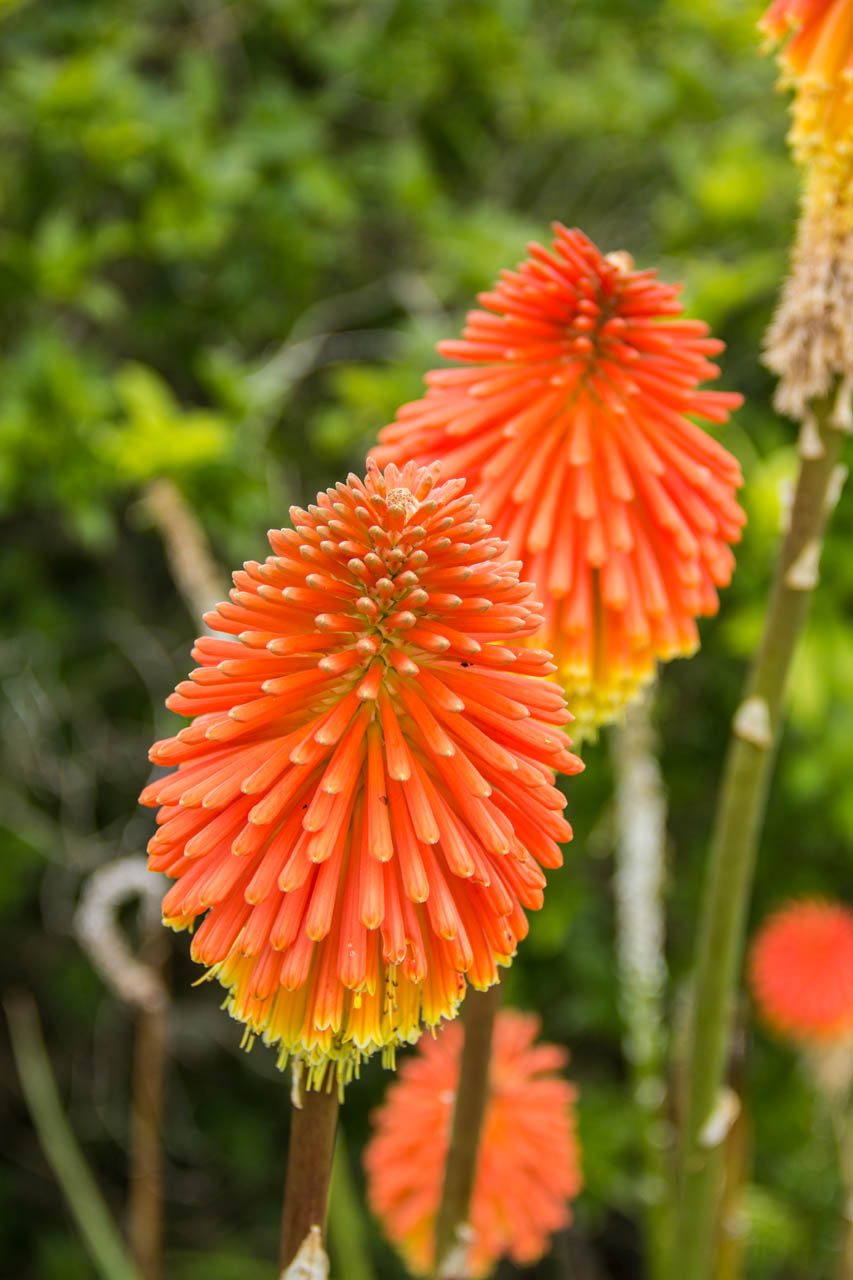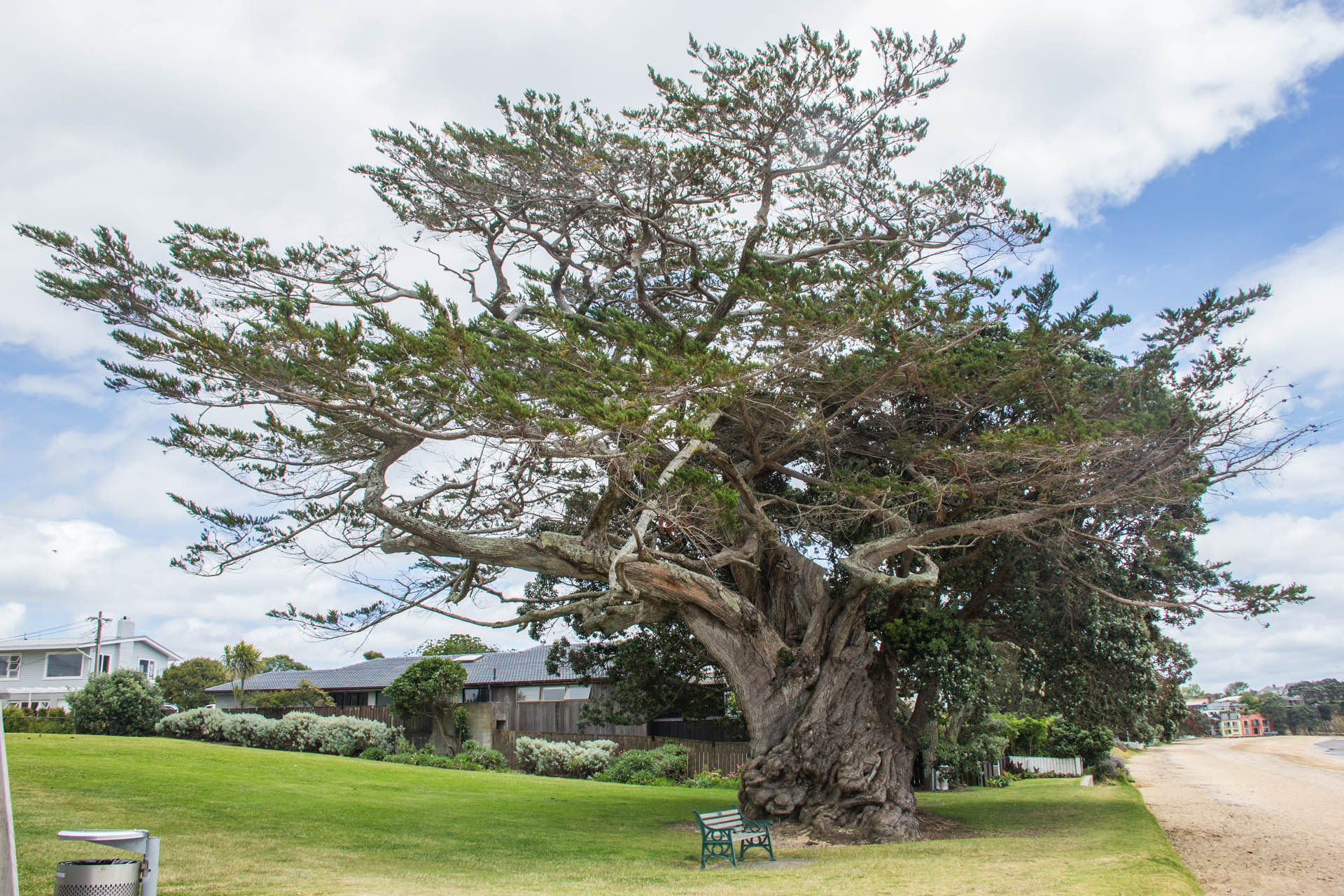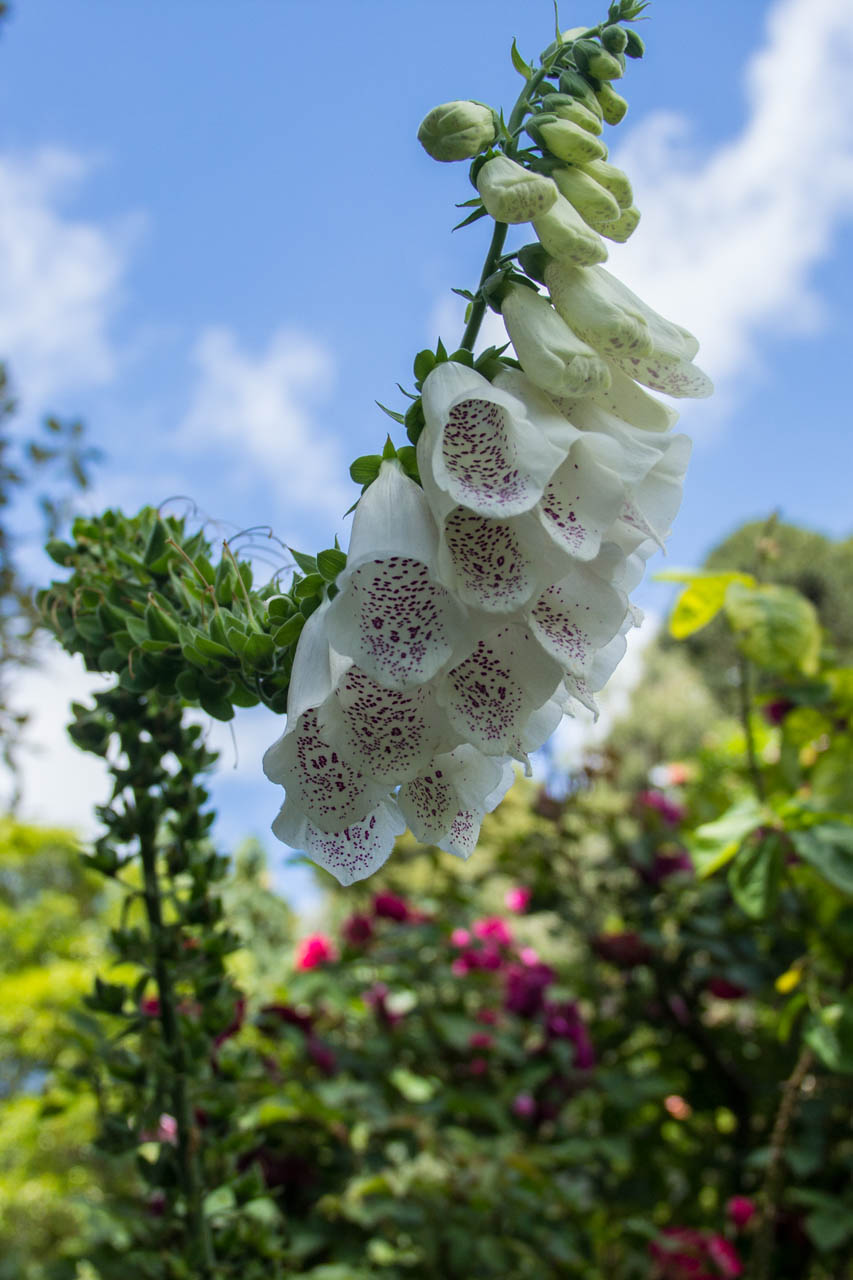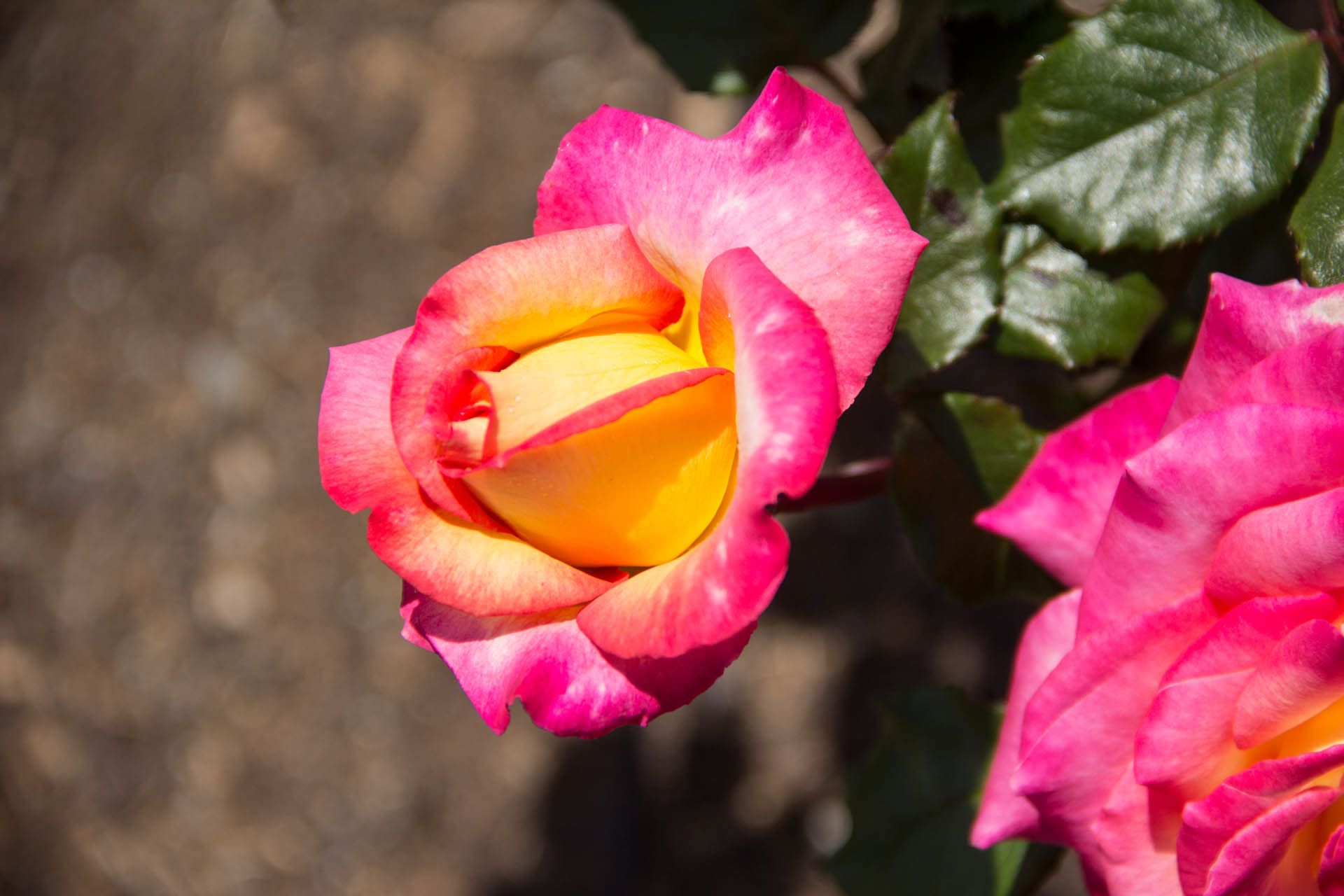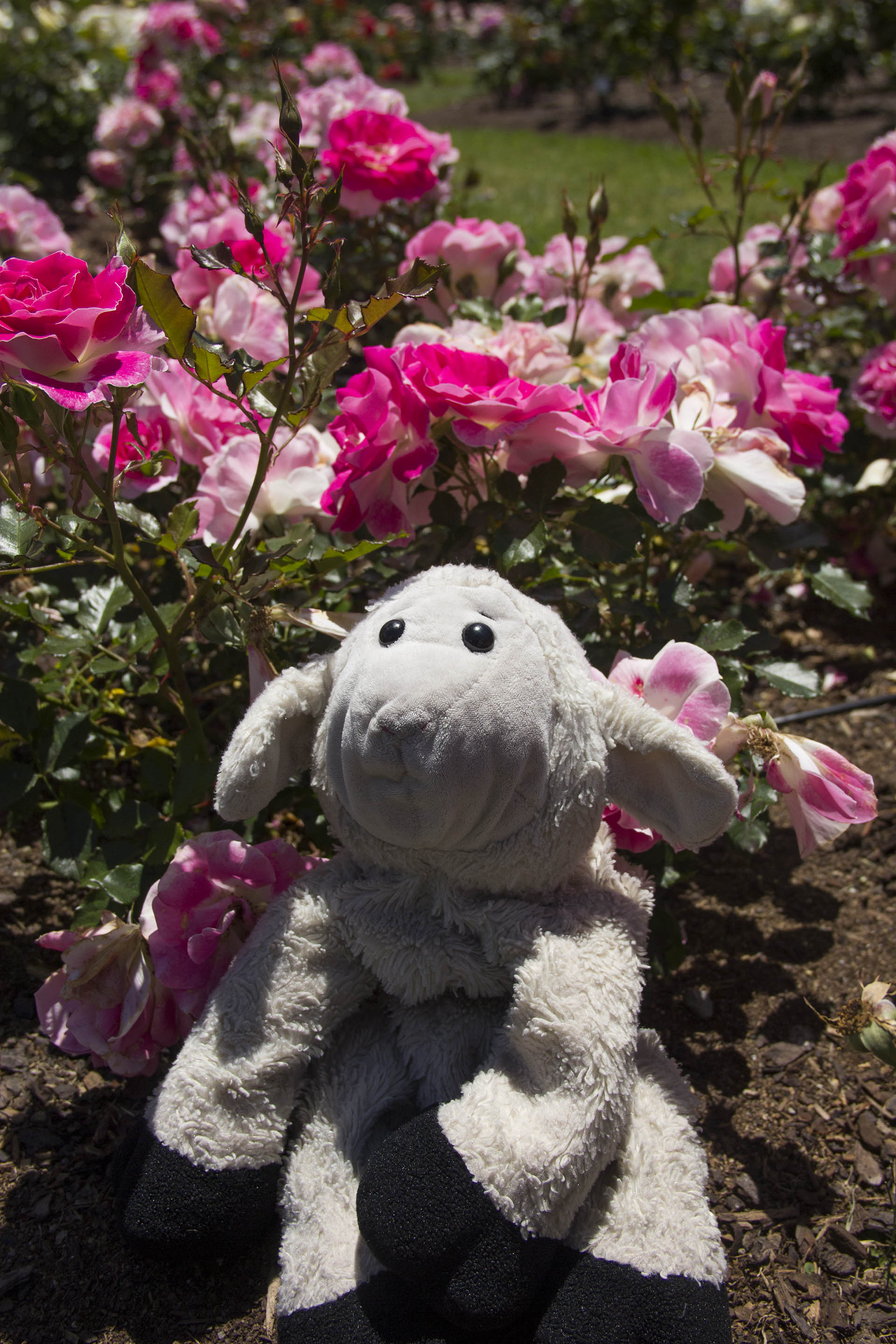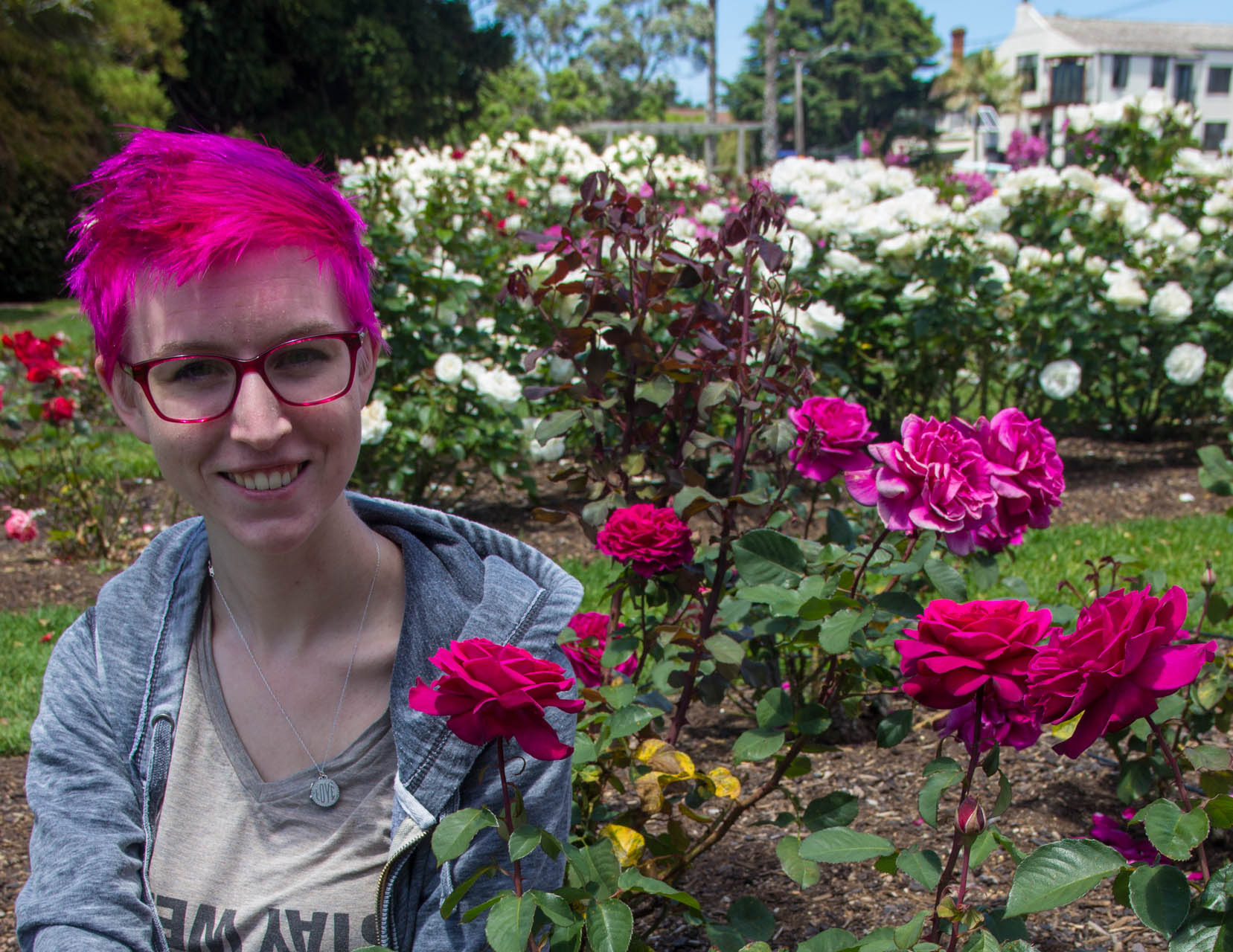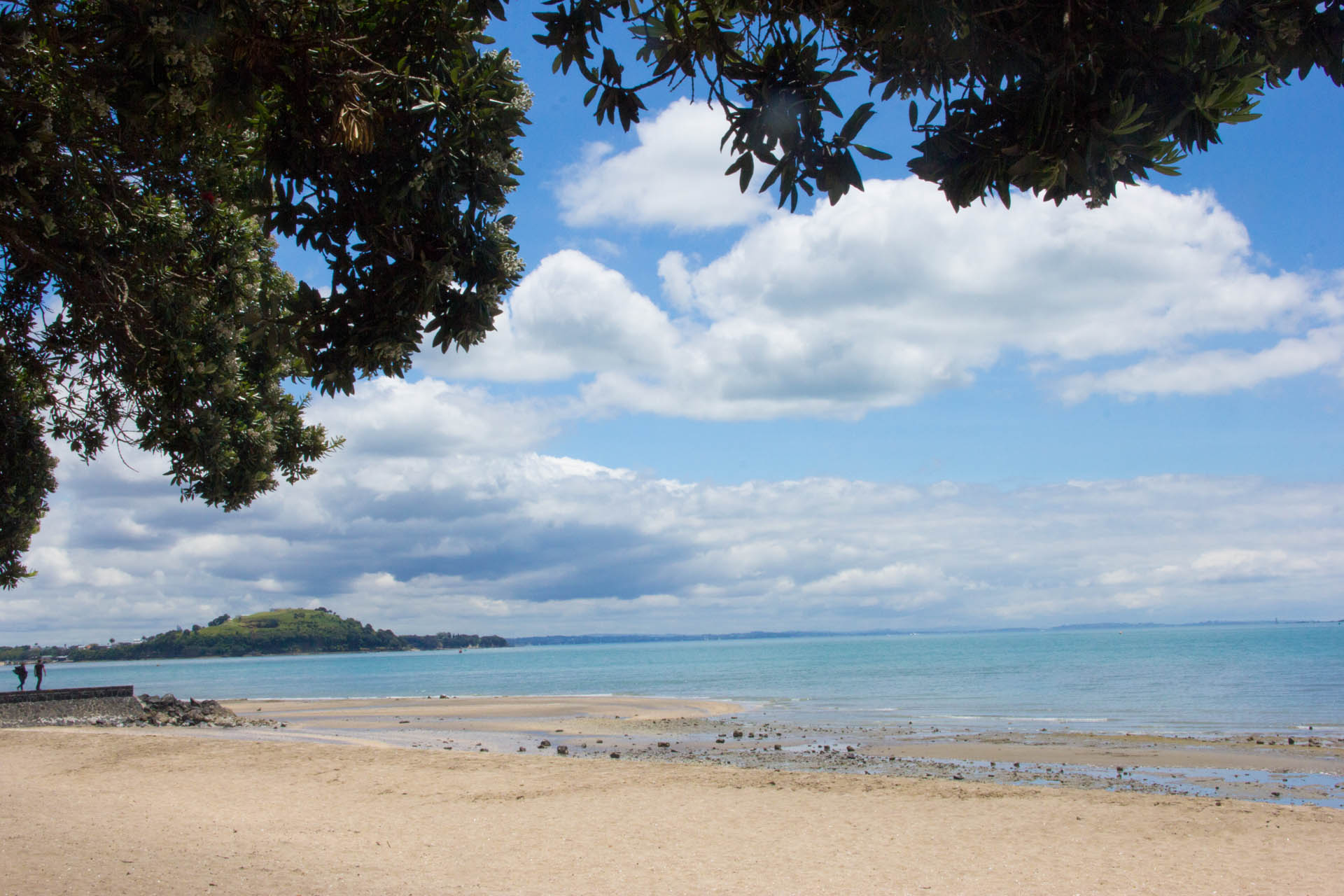In which our intrepid adventurers gets engaged, and has a unique encounter with the local wildlife.
Read MoreGrowing Roots (and moving in)
I keep doing this. I'll work up a blogging routine- once or twice a week has always been the goal, and then something happens and it all falls apart. My last blog post was 9 months ago because I am a terrible person. I'm not actually a terrible person. What I actually am is a person with terrible personal project management skills, but that doesn't really roll off the tongue quite so nicely, does it?
What I also am, is a person Easily Distracted By Adventures. Of these, there have been a few.
Since we last spoke, I re-started (and left) an old job, spent another summer at camp, road tripped in two countries, thirteen states, and three provinces, got a working holiday visa for a year in New Zealand, got (and left) another job, started another job, and moved in to a new house (in New Zealand!)!
Obviously, if I tried to update you on all these things at once we'd end up with something resembling a Lord of the Rings-esque multi-part novel series, with prequels and sequels to rival Star Wars, so we'll just have to nibble off small bits at a time. There's an argument to be made that the very beginning is a very good place to start, but there's no hope for any sort of chronological order at this point so I won't bother to try.
Besides, I want to tell you about now first. Now is the first time in about three years that I'll be living in the same place for more than three months. It may not be permanent by any definition of the word, but it is more permanent than anything's been in a while. Now is my chance to grow some roots.
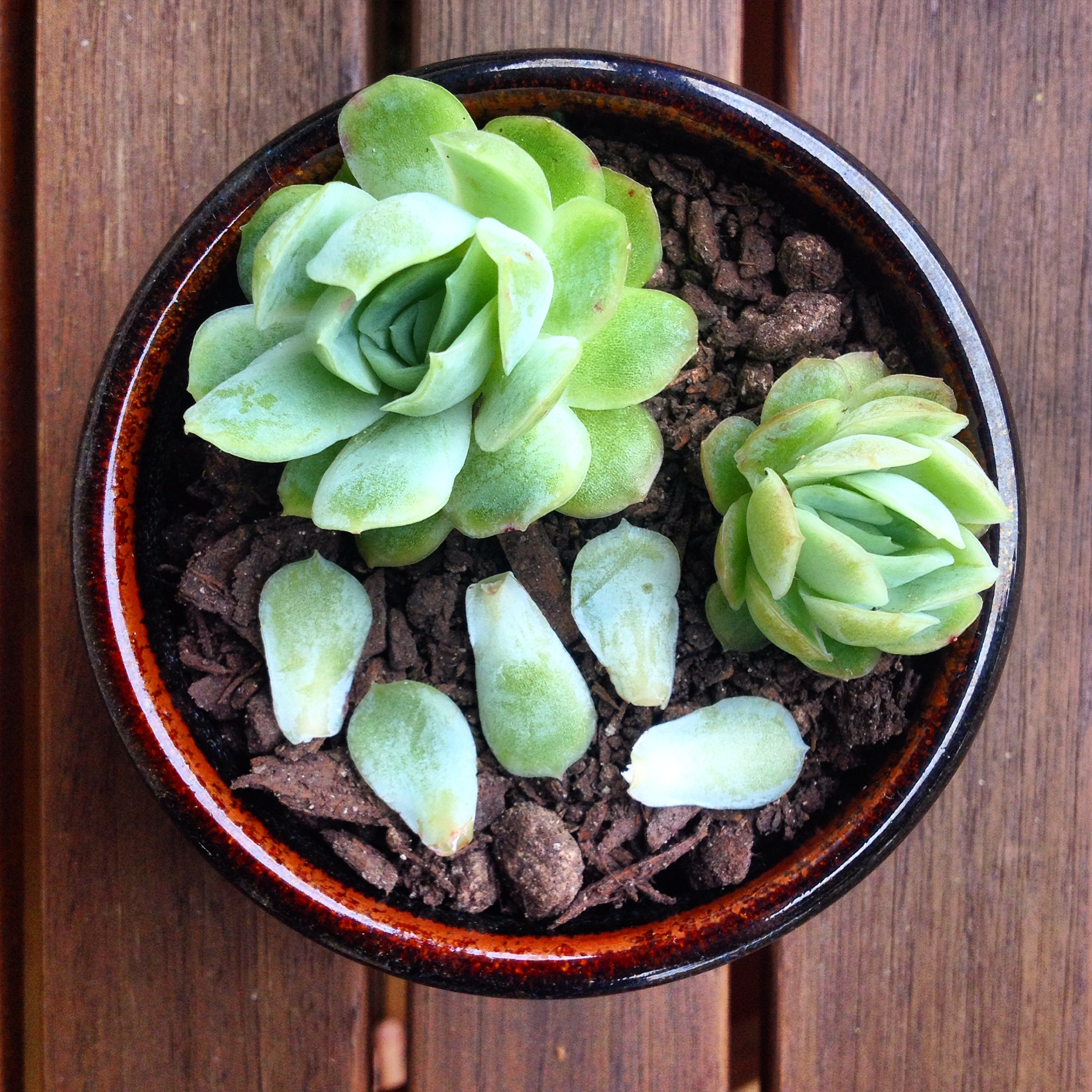
Those little fellas are Steve and Phil. They're cuttings from a larger plant and they've been growing nicely! I was also trying to propagate the leaves, but they've gone a bit shrively since I took this photo. My plant-mom skills still need a bit of work. Steve and Phil are Echeveria. They, like me, were rootless little nomads when they started off in this new pot, but have since grown some roots to give them a bit of stability in life.
My ability to care for potted plants apparently rivals my ability to do entry level chemistry: which is to say I'm astoundingly (even spectacularly) bad at both. Steve and Phil were touch and go for a while due to some bad pot-placement and overwatering (Did you know it's possible to love a succulent too much? It is. Pay it too much attention and it will die. Ignoring it is apparently healthy. Also apparently plants can get sunburned too. My entire life is a lie.) but it seems both the fellas and I are both on the road to plant care recovery.
My own roots have grown in a slightly less soil-based environment. I've technically already gone through that whole 'baby's first apartment' phase of my life, but living somewhere as a job-having human is fundamentally different than student housing. Choosing an apartment based on its proximity to the highways and transportation hubs, and secondarily how close it is to things like a grocery store and a good fish n' chips shop is definitely something I've never done.
I have, however, had to set up internet in a place before and let me tell you young things- It's worse than pulling teeth. Every. Single. Time. It does not get better. The only saving grace will be when you bribe your neighbors for their wifi password with a large box of fresh produce so that you can drown your anger in dealing with your own internet provider in hours of Pinterest and Spotify.
I mean.
It also helps that the house we're growing these roots in is as singularly adorable as it is. I mean, come on:
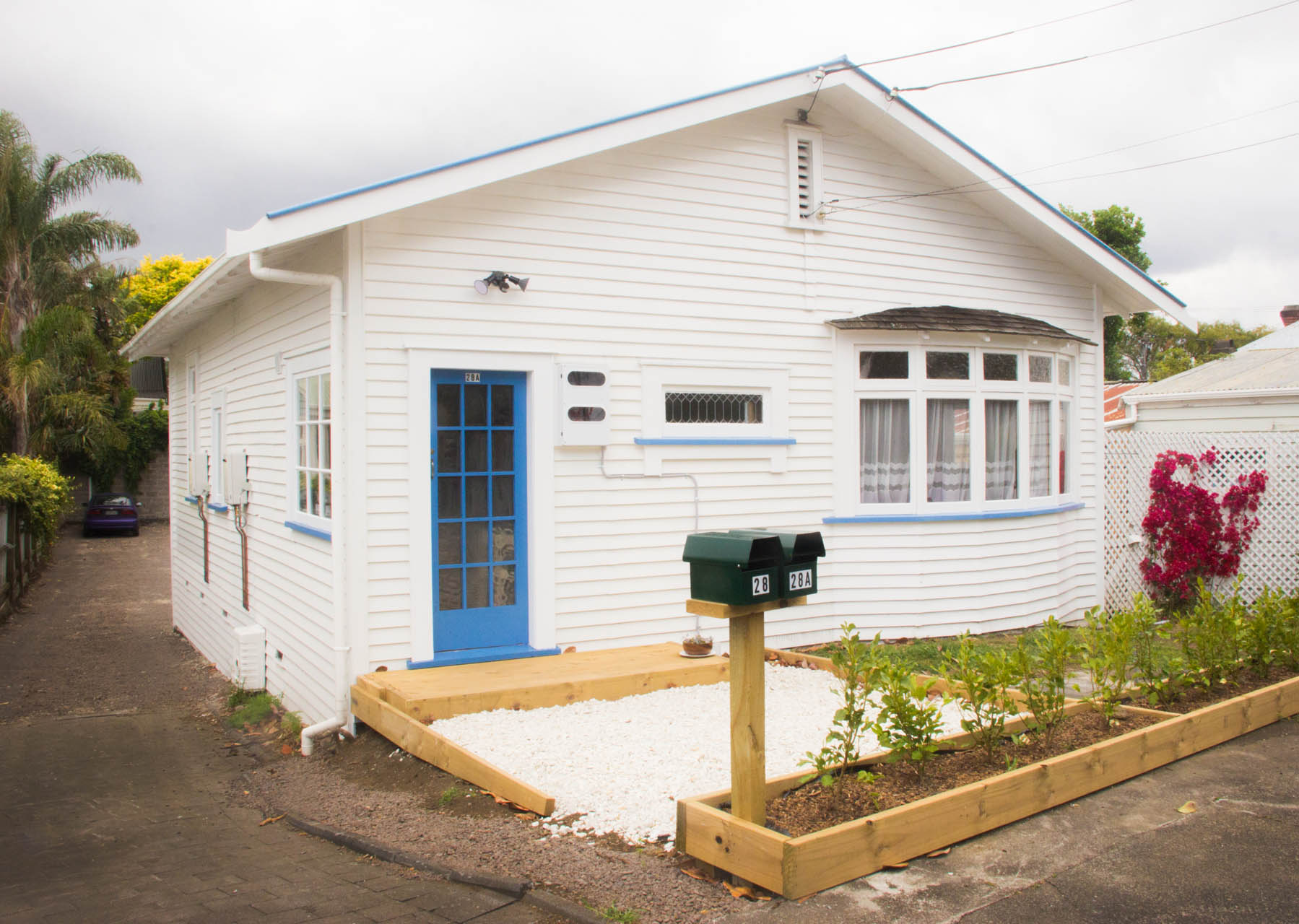
It even has a future hedge! It's not a hedge now, but it will be. Jon waters it with a pot from the kitchen because we don't have a watering can or a hose. I've got some photoshoot plans that involve that red Bougainvillea in the corner as the most delightful backdrop ever.
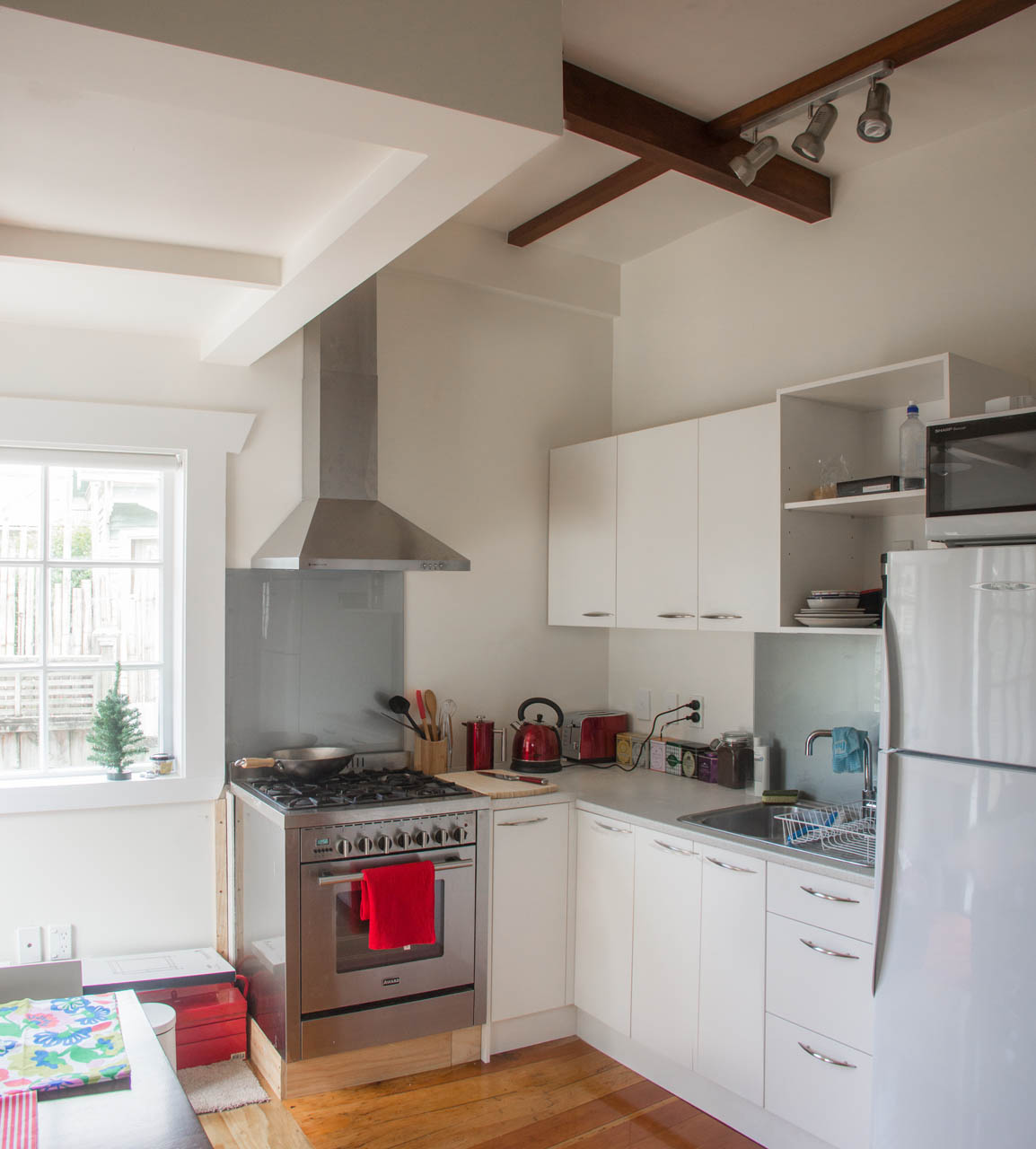
Excuse me while I bake All The Things.
This window is nestled in a deep sill above our future lounge area. Currently it's our cardboard box storage area, but we're working on it. It's a process.
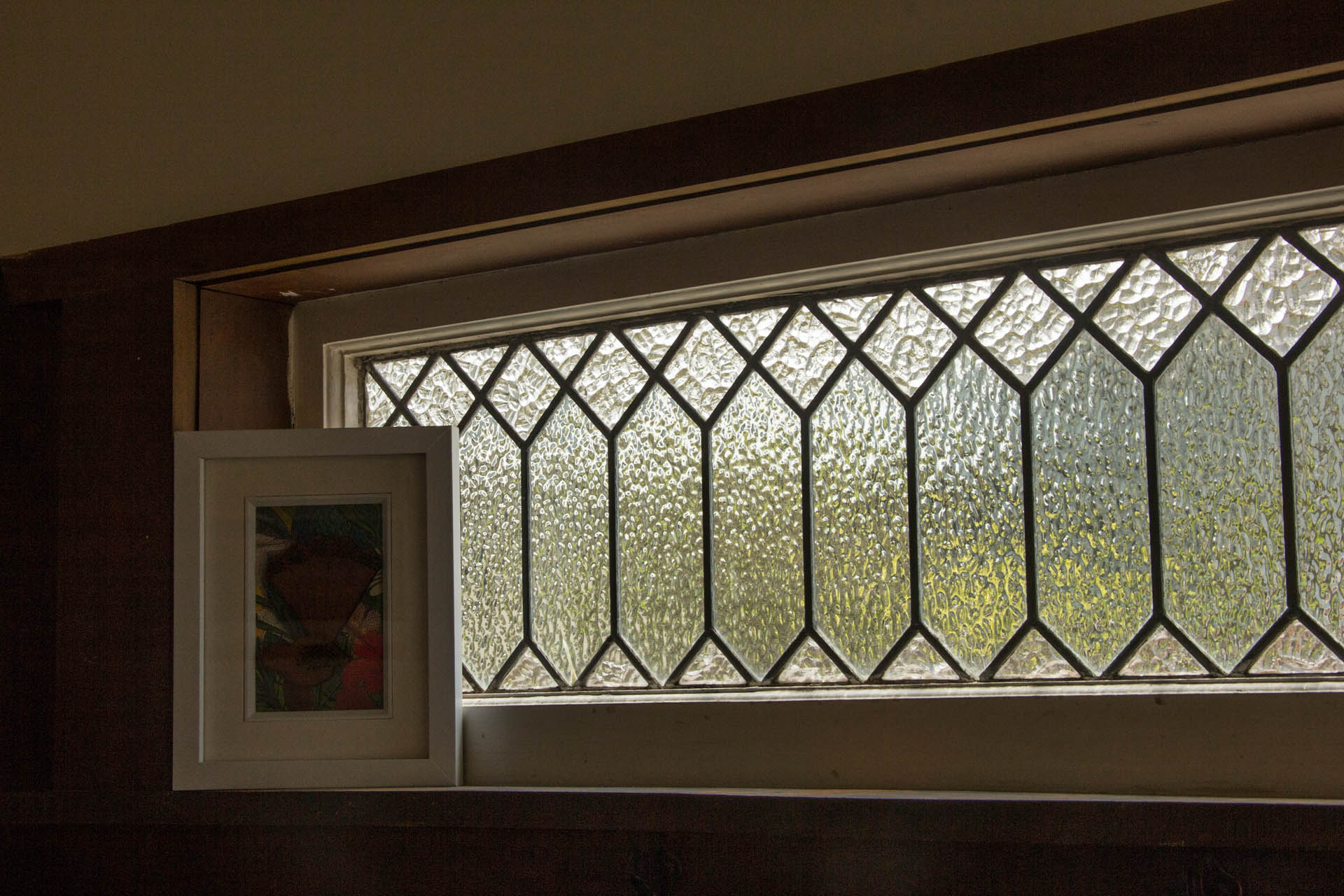
But wait- I'm saving the best for last...
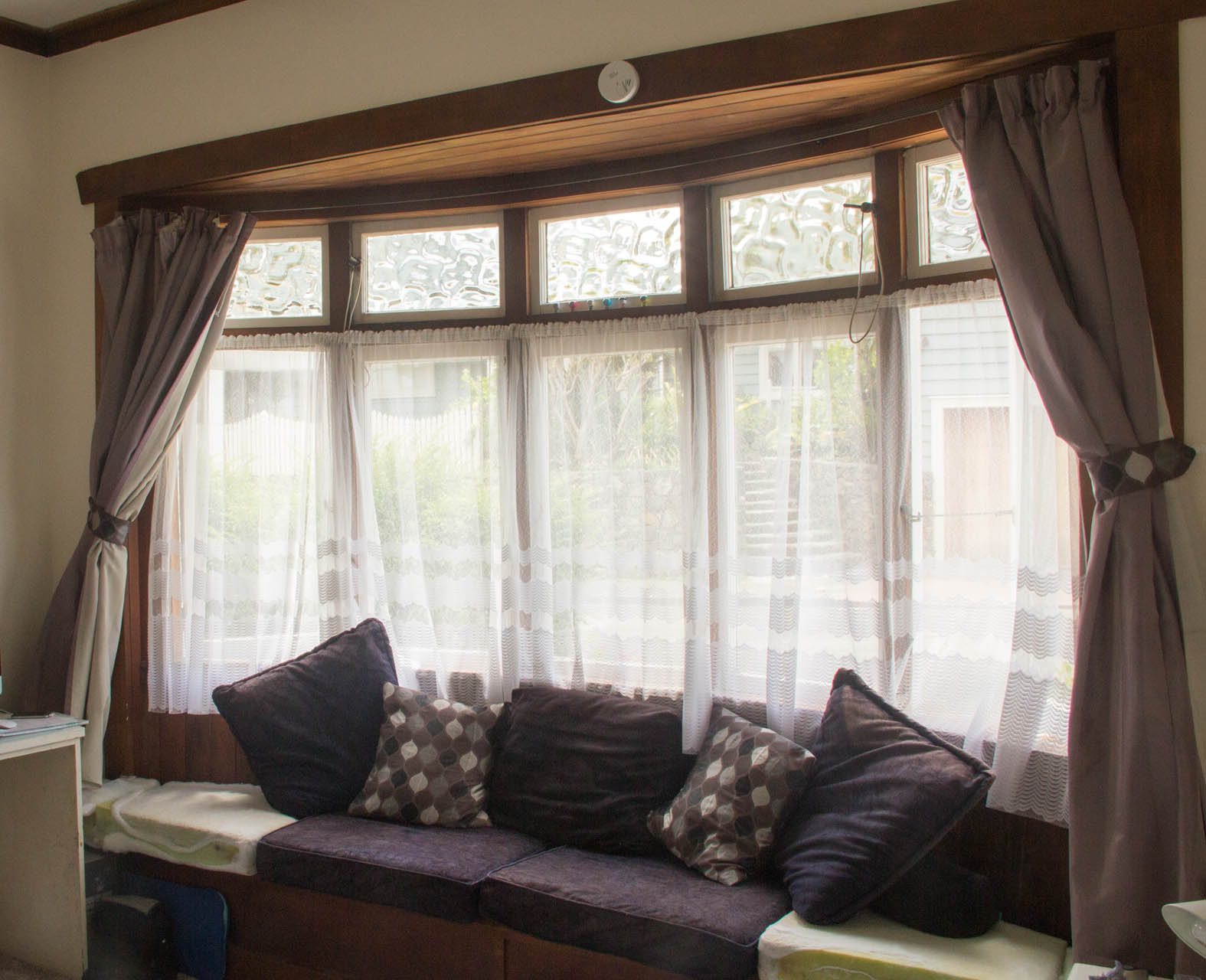
Let me tell you about this window seat. It's huge! It takes up nearly the whole wall in this room. The cushions, as you can surely tell, are a work in progress. When we moved in, I measured the window seat and priced out upholstery foam. It's just a touch under two and a half square meters, and at $126 per SqM, it was hugely out of our price range. Sure, three hundred dollars is pretty reasonable if you've just moved in to your forever-home and you're committed to the level of Pinterest-worthy window seat perfection we all secretly strive for, but our roots aren't extending quite that deep just yet.
I was just about to give up this battle and buy a couple of cheap throw pillows to sit my butt down on, when a Festivus Miracle occurred: two days before Christmas, Jon's mom heroically rescued a pair of lovely foam couch cushions, and an equally lovely pair of oversized throw pillows from a dumpster-destined couch. They didn't even smell like cat or anything! They're pretty intensely sun-faded, and by all accounts they came from a pretty dated old couch, but fortunately I know a thing or two about repurposing (and re-upholstering!). That's them wearing their original navy blue covers in the photos.
A few days later, we rescued another pair of cushions from another dumpster couch, and suddenly we've got three hundred dollars worth of foam for exactly no dollars.
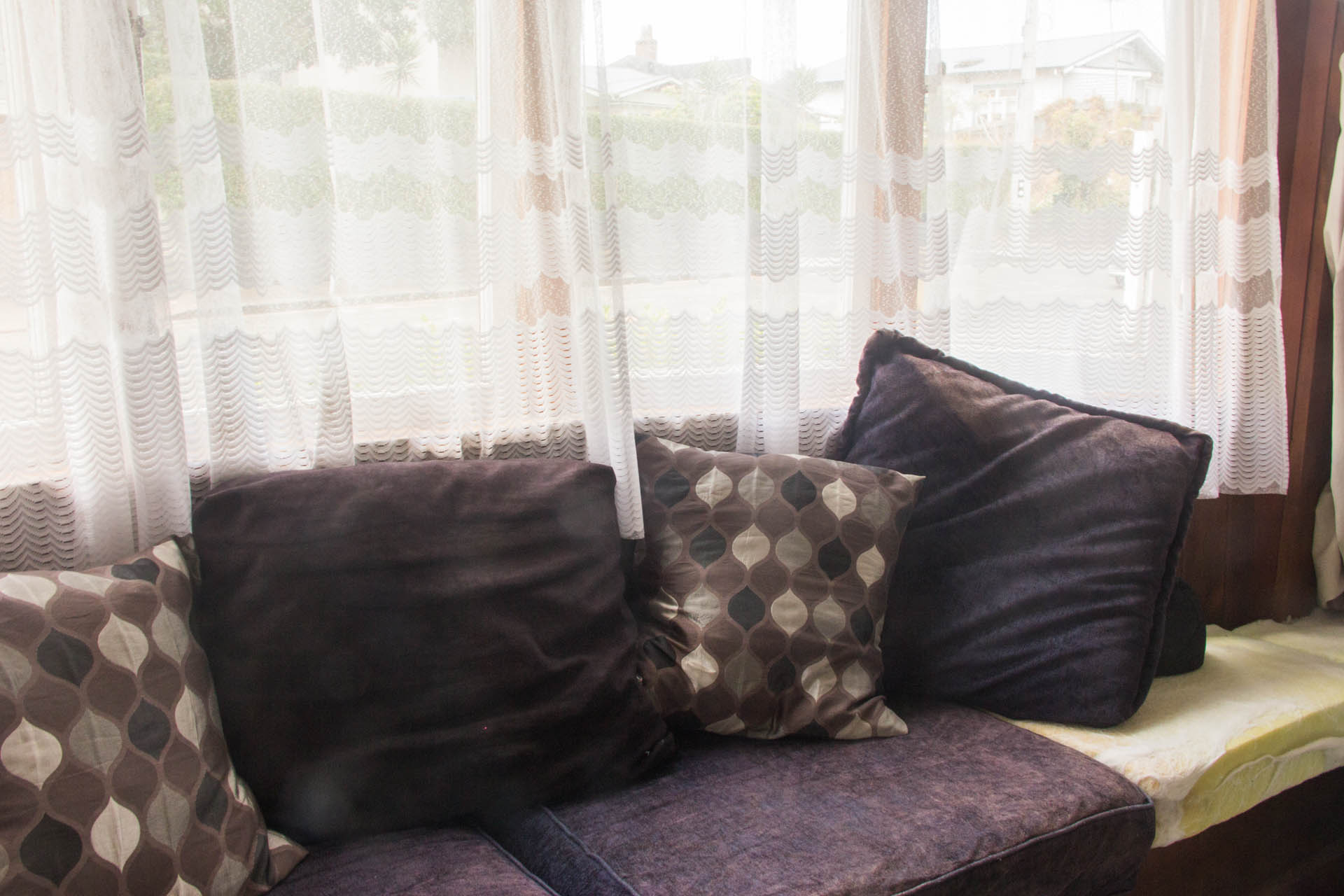
The two throw pillows with the teardrop pattern have a story of their own to tell: A second Festivus Miracle. On a shopping trip to get polymer clay (for a project which I will tell you about next week), we happened across a sign for a fabric sale. I am an obvious sucker for these things, so although the place looked about as out of our price range as the foam was, we wandered in to investigate. As it turns out, the lovely lady behind the counter was the owner of the shop, and she explained to us that the warehouse needed a new roof so she was selling everything she could as quickly as possible. Jon spotted a beautiful roll of fabric that happened to match the house's existing curtains perfectly, and she sold the whole roll to us for $30- a spectacular deal considering its original price was $90 per meter, and there are 7.5 meters on the roll. That's just over 8.2 yards if you're stateside ;)
We also picked up a pair of duck-down and feather throw pillows from her for a similar deal- and I've already made cushion covers for them out of the new fabric (that's them between the navy cushions in the photo above), and let me tell you- they are delightfully plush.
My next big project will be upholstering the cushions, but it looks like I'm going to need one more miracle to get the piping at the same deal as the rest of the pieces. I'm reusing the zippers from the old cushion covers, but the piping is a different story. It would be a shame to pay full price for it this late into the adventure! I'll let you know how that story progresses.
For now, I'm going to continue my efforts to not kill Steve and Phil, and work on some little projects of my own; it's about time we got some art up on these walls. Plus, next week I'm going to tell you about the new brush lettering skills I've been working on! Be prepared for that post to be peppered with photos of my Adventures in Baked Goods though. Is there a limit to the daily pastry intake I can achieve without detriment to my sanity? We'll find out.
Land of the Sun, Home of the Sheep (and Occasional Possum)
We're going to take a short break from our regularly scheduled adventure-programming to talk about the things that happened during my 3 months in New Zealand when I wasn't busy climbing mountains and romping on beaches- I'll give you a hint... There was a lot of knitting. This little corner of the internet was originally created for the purpose of blogging about all the projects I get up to, and it seems that regardless of the mountains in my immediate vicinity, I still find myself needing to do something with my hands.
First things first. I met this pretty lady at Jon's parent's house: I did a little research and it turns out that Wheeler & Wilson, the manufacturer of this machine, was bought out by Singer in 1905, which means this machine was probably made in the late 1800s. It's not particularly rare, but it is a very lovely machine, and it's an interesting combination of things I'm used to on old machines. It has the modern upper threading path, which has changed very little since its original design, but the bobbin mechanism is a different story. The first successful sewing machine was designed in 1830, and this machine used a shuttle bobbin- a long, narrow piece which slips into as bullet-shaped device. The whole mechanism moves in a curved forwards-backwards motion under the machine when it's sewing. My treadle machine at home has a shuttle bobbin.
The shuttle bobbin was eventually replaced with a stationary bobbin, which continues to be the standard for modern machines because it's less prone to jamming, mechanical issues, and being generally finicky. This machine was obviously made during the transition period, because it has a modern style bobbin and casing, but the mechanism still moves under the machine like a shuttle. Very weird, but very cool and clever. She hadn't been used for a good couple of decades, but she was in great condition regardless. All she needed was a bit of cleaning and oiling, and a new belt. (ebay for 3 dollars, if you're curious.) The most difficult part was coming up with a project for her once she was ready. That didn't turn out to be so hard either, though- It's unreasonably sunny in New Zealand (40% more intense UV rays than the US), so I chose to make a super simple shoulder-covering Sun Protection Device- complete with fringe!
I used about 2 yards of printed rayon fabric, and a couple of yards of satin fringe in two different lengths. I think it's supposed to be upholstery fringe for pillows and stuff, but it matched my fabric too perfectly to pass up. If you're curious, and because nobody in the world deserves sunburnt shoulders- I've made a diagram:
This way I don't have to write the whole thing out, you see. It's very simple. You attach the sleeves to the cut slits, and then sew the tops of the sleeves and the shoulder seam all in one go. The only not-pictured step is the binding to finish the front and neck- that's just a 4" wide strip that runs up one front, around the neck, (which I trimmed into a slight curve) and down the other side. The shoulders and armholes are french seamed to add stability and hide raw edges, and the fringe is also encased by the fabric, so nothing unsavory is showing anywhere.
See? Easy as pie. And these things sell at markets and such for something like 60 dollars. Really, you could use whatever kind of fabric you wanted- I've even seen some with lace. This one happens to match my swimsuit though- and my hair, apparently- which is always a nice touch.
Including the fixing up of the sewing machine, that project was completed in the span of two afternoons. These next two basically occupied the rest of my down-time between adventures, given one took significantly longer than the other.
This pattern is Sparrow Song by Anne Hanson, made with some Possum-Merino yarn I got in New Zealand. Possum is a pretty uniquely New Zealand thing, and it's very very soft, and very warm- even if the concept is a little weird. Possums in New Zealand are a totally different thing than US possums, though. As for the yarn, it's a bit hairy and sheds at first, but only a little. Still totally worth it. In other news, I really love this cowl pattern. It's knit top down, and then the bottom edging is a knitted-on border completed last. It's a bit ridiculously warm.
In a problematic and cruel twist of fate, however, I have only been able to wear it about twice because it is very warm and, because New Zealand's seasons are opposite from ours, I've essentially had two summers in a row with about 3 weeks of winter in between. By the time my next trip is completed, I will have had four consecutive summers without a full winter in between. I probably won't get much use out of this cowl in that span of time, but I'm certainly going to try.
Here's the next (and significantly larger) project:
Leaves of Grass by Jared Flood. The pertinent information for both of these projects can be found in more detail on my Ravelry page, if you're interested in making them. This is a circular shawl knit from the center out, and has yet another knitted on border. I think knitted on borders are my favorite technique in knitting. The only other thing that comes close is gusset heels...
The other particularly exciting thing about this shawl is that it's an Elizabeth Zimmerman Pi Shawl. There are only four increase rows in the whole project- in between each lace pattern. This allows you to substitute in any other lace stitch if you're not feeling whatever's written in the pattern, since you aren't limited by needing to match increases. I didn't make any changes to this one- maybe next time.
I cast on for this shawl a day or two before I left for New Zealand, and I finished it in the Los Angeles International airport on my way back home. Not that I was working on it constantly, but it took basically the whole three months. It was actually pretty great travel knitting. The only awkward part was when I dropped my ball of yarn behind my seat on the return flight, and had to employ the gentleman sitting behind me to retrieve it. He was a good sport, though.
The last part of this crafty little side note is more of an in-progress sneak peek, because it's getting a blog post all to itself later on. One of my favorite things to do on warm summer evenings (in December, I'm actually still not over that weirdness)- was hunting for sea glass on the beach. We'd drive to the beach after dinner, stop for ice cream, and walk along the beach looking for pieces of sea glass.
This is a photo of what we gathered after the first ice-cream laden evening. I wanted to make myself a necklace, but ended up finding enough pieces on the trip that I decided to share the love a little bit more than originally intended. We found so many pieces that I had to leave most of them behind, but the others- well, you can find some of them here if you're curious, but the details will come later.
You've probably noticed that not everything in the picture is sea glass- there are also ceramic shards, although they're a much rarer occurrence. According to the all-knowing interwebs, they're called 'beach pottery'- and I will let you know as soon as I figure out what I'm going to do with them.
I'm a material person. I like stuff, I like projects, and I am the kind of person who needs to have something to do with my hands, pretty much all the time. I may have been in New Zealand to see the sights and climb the mountains, but I had just as much fun with my projects and I'm especially happy knowing that I can still get my materials and work on things there, since I'll be going back for a whole year in a few months. In the meantime, I'm going to continue to wear my knitting around even though summer's almost here...
(next time, mountain-adventures. I promise)
In Which Hell Bubbles its Greetings, and the Trees Say Hello.
Hi again! I've got lots of excitement coming up, and I want to make sure I tell all of you about it, so I'm holding myself accountable to you guys: If I don't post twice this week, you have permission to bop me on the nose. That is all. New Zealand turned out to be beautiful in a lot of different ways- and this little adventure proved to be beautiful in the sort-of-scary, definitely-stay-on-the-path sort of way.
Meet Hell's Gate:
The first thing most people notice when they drive into Rotorua is the smell of sulfur. I have some interesting scent-related handicaps, so I could tell that the air was a little different, but I didn't think it smelled too bad. I was, however, very thoroughly educated on just how bad it smelled to all the other humans.
Hell's Gate (it's non-touristy Māori name is Tikitere), was so-named when George Bernard Shaw visited the area in 1934 and declared that, if his colleagues though he was going to hell for his atheism, these would be the gates of said hell.
The science is even cooler, though. We all learned about plate tectonics in middle school, and most islands (especially in the pacific) are volcanic either in their recent past, or in some cases (ahem- this one)- in their present. Tikitere's existence is present-day evidence of ancient volcanic activity, and it is so cool. 10,000 years ago, an eruption caused the water from this ancient lake to drain- forming two other lakes in the area. The absence of water pressure on this now-dried up lake bed caused faults in the ground below, and steam and gases are still slowly escaping 10,000 years later.
Tikitere has a long history of being used by the Māori as a sacred site, and sometimes for medicinal purposes. More presently, it's become a tourist attraction and a spa. You have to pay to get in, but it's worth it to get to see some of these things up close and personal, and to learn about its history. It takes a little over an hour to walk around all the paths (if you take your time and read the informational signage) and it's a great, flat walk but there's no shade so bring your sunblock and reapply frequently or you'll be as toasty-burnt as the bits and pieces of wayward organic matter scattered around the edges of the hot pools.
Apparently, the Māori took a pretty immediate shining to George Bernard Shaw (maybe something to do with his atheism vs. the Christianity and literal come to Jesus talks they were getting from pretty much everyone else at the time?)- so many of the pools and ominously bubbling cracks in the ground were named by him. These names are displayed alongside the Māori names, which makes for a truly unique mesh of Māori and European values and interests. The signage also displays the average temperature of each pool, and what sorts of gasses come out of it. One reaches temperatures of 252 °F, and another has a pH level of 1. One of the pools (don't scroll down yet, but it is down in the pictures) could even cook a pig in two hours.
Apparently, if you feel the need to cook yourself a pig, this is the place to do it:
Amidst low ropes and a very liberal dusting of "Danger, Don't Step Off The Path" ( if you value your feet) signage, the walkways wind through two areas separated by some very welcome shade and green space- and something pretty awesome sits nestled in the trees:
Fine Lords and Ladies of the Internets, I give you: The tallest hot waterfall in the southern hemisphere!
Okay, It's not that tall. or big, or whatever- but it is bathwater temperature as opposed to the usual frigid river temperatures, and that's pretty cool. The Māori tribe who lived here believed that the water in these falls had strengthening and healing powers, so their warriors bathed in the waterfall before going into battle. They weren't far off the truth- The falls are laced with minerals which, while they may not be able to heal a severed limb, have been proven to speed up healing and help with some skin problems. Kind of like the Roman Baths in England.
As we wandered around between the pools in the second, larger area, things started to heat up even more. Larger than the first, and with not one single solitary shady patch in sight, I began to wonder if we would melt like the mud in the bottoms of these pits. You see, the sun was heating us from above and the ground was heating us from below, and between those two things the usually temperate New Zealand summer became...well... Hell's Gate.
Such steam!
One of the most interesting parts of the whole walk was seeing this area, where a small, freshwater stream met the sulfuric hot pool in steady little puffs of steam. The cool freshwater has allowed for grassy growth, perhaps the only green within the otherwise desolate circle of land.
After our near-melting experience, and learning that our ticket price included getting to soak our feet in some of the mineral water from one of the more hospitable pools, we once again took to the road to continue the apparent volcanic theme of this trip- Meet Lake Tarawera:
Lake Tarawera didn't always look like this. In the early 1800s, this area was home to the Pink and White Terraces- hot bathing pools formed with silica deposits from volcanic activity in the area. Eventually, Mount Tarawera erupted (you see that flat-looking mountain a little to the right of the middle? Yeah. That's Mount Tarawera, and it wasn't always flat...) and the Pink and White Terraces were buried in the fallout. The scarred landscape turned from pink and white to green, and now it's a beautiful, quiet place for some freshwater swimming (The first time I'd experienced that in New Zealand, actually).
On the way back from our volcanic sightseeing, we stopped off to say hello to some very old, very tall trees.
Whakarewarewa Forest is just outside Rotorua, and it's a staggeringly large forest full of staggeringly tall trees. The redwoods aren't the only species around, but they're plentiful nonetheless. We didn't spend too much time in the forest- it's a place I really enjoyed and would like to see more of, but it had been a long, hot day- and I think everyone involved was ready for naptime. Not before I hugged some trees, though...
What an adventure! I love the ones that have a little bit of history involved, and volcanoes are a pretty huge part of New Zealand's history- It wasn't the last we saw of them, either.
Alright, like I said. I'm posting twice this week. To avoid nose-bopping, you see. I assume you're curious about what sorts of crafty, projecty things I got up to while I was between adventures, so I'll tell you all about that, and then we'll be off on a three-part (probably? I might need four...) series of mountain climbing escapades! That's right- I climbed multiple mountains. There's even photographic evidence that this thing happened.
In Which the History of Gold is Deceptively Rusty (but still pretty awesome)
The next New Zealand weekend adventure found us driving down winding mountain roads on a day that seemed unbearably hot in the sun, yet just the right side of chilly in the shade. It seemed the former wasn't much of an issue, because the place we were going had plenty of trees- not to mention some other pretty wonderful things:
Welcome to Karangahake Gorge! Aside from its position as a truly spectacular piece of nature, this area is filled with the rich and ongoing history of its own: Gold. I'm used to elementary school stories of men heading west to California to pan for gold in the rivers, but this venture was a little bit more subterranean. You're looking at a turn of the century gold mine, and although mining here was suspended decades ago, there is still as they say, gold in them there hills.
Karangahake Gorge is now a reserve space with some truly fabulous walking trails that I will get to in a minute, but also some pretty great informational signage about it's history. I may or may not be a huge nerd about informational signage- it's just nice to see a thing, and then learn about the significance of that thing, is all. Example: this is the view looking over the main battery. Excavated dirt (with the gold ore mixed in) was brought to this building using water from the river, where it was pulverized ("battery" like "battering ram" not the kind you stick in flashlights. This was before widespread electricity was a thing) -so the gold could be extracted. At one time, this area was responsible for more than 60% of the gold production in New Zealand.
There are a few trail options around Karangahake Gorge, but I was informed that the underground pump house and windows walk were going to be our best options. The walking path here follows what was previously train tracks: used to carry gold ore out of the mountains. It's carved into solid rock at the edge of the gorge with a very solid railing to protect curious types from the 50- to 75- foot drop into shallow, rocky water below. In some areas, the tracks have themselves experienced that fall. The twisted, mangled remains of steel and the occasional rail road tie or pipe have settled in the water below, and a new trail has been carved deeper into the gorge next to the washed out area.
Although it's a reserve, and meant for exploration- some areas of the mine are still dangerous and closed off to the public.
Gotta keep those hobbits from sneaking through the mine shafts, you know. Pesky Bagginses and their shortcuts and invisible gold rings. I wonder if there's invisible gold in these mountains!?
But what's this ahead? Could it be? My first ever real live swing bridge?!
We paused for a photo-op, of course, because- let me 'splain you a thing'-when you've spent the majority of your life (and all of your independent adventuring life) smack in the middle of the Midwestern United States- there are no swing bridges. This is because in the Midwestern United States there are no hills to connect with bridges. Everything is flat. Flat and ocean-less and full of farms with corn and cows. Swing bridges and oceans were two things I wasn't really sure I needed until I had experienced them, and let me tell you, swing bridges are pretty awesome.
Say Cheese!
The swing bridge took us up a path to a sign that said the underground pump house walk was currently closed- disappointing, because that just sounds pretty awesome. We hypothesized that there were structural issues and hoped they were temporary. Karangahake Gorge is a day-trip's drive from Auckland, and I intend to go back to see if it's open. We did, however, get to experience the famous 'Windows Walk'.
After a great many stairs (so many stairs...) we follow a dark tunnel cut into the side of the mountain. From the main tunnel, several auxiliary tunnels are carved both right- further into the mountain, and left- out to the steep cliff and overlooking the river. These left tunnels end in 'windows' which we use for light as we wander through, and which the miners used to deposit whatever they dug out of the mountain into waiting train cars below. From one of the windows, we looked down and saw the swing bridge we crossed to get to this point:
About halfway up the left side of this photo is a little dark spot- that's the entrance to the Windows Walk- at the top of the stairs. Unfortunately, this area was also plagued with some structural issues. Only half of the walk was open, after which a barricade forced us to turn around and head back. Usually, the carved tunnel goes all the way back to the beginning and deposits you in the parking lot where you started, but hey- another reason to go back, right? We took a little detour to follow that train track from before in a new direction- here you can see the old path falling away and the new path next to it.
Some of you may recall that I did a semester-long black and white film photography study on the process by which nature constantly attempts (and succeeds) to break down and take back the byproducts of human intervention. This place was ripe with exactly that- old, rusty bits of machinery abandoned by anxious entrepreneurs on to the Next Big Idea, the worn train tracks and water pipes still in place amongst new growth of trees and shrubberies. As soon as we humans turn our back on something, nature begins the slow reclamation process.
There are some opportunities to climb around on the old machinery- or if you're a huge nerd like me, to take pictures of it. It seems in every capacity like the miners rushed out as quickly as they rushed in- leaving the slowly rusting detritus of their trade wherever it happened to land.
I wonder if the miners appreciated the views they had in these mountains while they were prospecting. Probably not, deep in the belly of the mountains, but maybe when they came up for air. This place is nestled amidst mountains and is a beautiful thing all it's own. Maybe it was less so when the miners were uprooting it for minerals but nature has had the better part of a century to take it back now, and she's done an admirable job softening its hard edges.
After that healthy dose of green, and the positivity that is nature reclaiming land after the mines were abandoned- we drove a little further to an actual, real-live present day mining town with an active pit mine.
Things happen a bit differently these days, with open pit mines instead of tunnels and shafts. There is a building down there, a house-sized office of some sort- and heavy machinery for the digging of the gold, but everything is miniscule in comparison to the size of this hole in the ground. There were guards patrolling the top of the mine (five, by my count)- probably to keep hooligans and activists from causing problems. I wonder if they get that a lot. The Kaimai ranges (Where the Karangahake Gorge Mine was located) are still filled with gold, but the protected land status means it can't be mined. Currently. This area wasn't so lucky, but given enough time after it's abandoned in search of more lucrative ventures- I have confidence that nature will take back this pit and make it once again beautiful. With our back to the pit mine buzzing with activity, we were met with a very interesting site: at the end of a pair of tracks was a suspiciously old looking building with a suspiciously new looking foundation.
The Cornish Pump House was a relic of bygone days when water was used to power the mines. It fell out of use when it was replaced with electricity, but was preserved because of its historic significance. The informational signage here was a little sparse, but between that and the internet we figured out the basic story: In 2006, surveyors realized that the ground the old pump house stood on was unstable because of the mining operations right next door, and a very large effort was made to relocate it. The tracks are teflon-coated concrete pads which the pump house was slid along on for 300 meters to its new resting place as you see it today. Visitors can wander around inside and see how the operation worked (and which spots are now the best places for bird's nests as they flit about above...) and if you're a huge nerd like me, take pictures of the architecture.
It's sort of nice to see the old parts standing watch over the new things, as if to say that everything will settle back into its rightful place eventually. I love adventures like this- and it's not often you get to see the progression of history right up through present day- even if the present day part isn't exactly all warm and fuzzy. Who knows what these places will look like in a century- they've certainly changed a lot in the previous century. It might just be that I have a soft spot for historic places, and you know how exciting the Piha adventure was- how am I supposed to pick a favorite, though? Was Piha better than Karangahake Gorge? I'm refusing to answer that question. On principal.
Where there's a will, there's a Waterfall. (Part 3)
Welcome to the third and final chapter of Containment Issues! As promised- although I don't know why you'd be specifically interested in such a thing- there are no beaches to be seen in this post. There is, however, a variety of other cool stuff to make up for it, so I don't feel too terrible about the beach deprivation. We took a break in the middle of the day- when the sun was at its most intense, to take a short drive away from the beach for a bit of a hike. It was welcome respite from the sun, as well as an opportunity for some great pictures!
Sheep of course wanted in on the action, and insisted on taking some photos before we got too far. He's decided to opt out of the usual selfie instead for a game of hide-and-sheep. I do love a good game of hide-and-sheep, though, so I was willing to partake.
Sheep learned that much of this area was a forest of giant Kauri trees- as soon as the Europeans settled in New Zealand, they discovered that big trees make awfully nice big boats, so most of these ancient Kauris are gone, and what few are left are endangered. Regrowth attempts are being made, but these fellas are slow growers. They can do in 50 years what a white pine tree does in 10. There are plenty of remnants of the huge timber business that marks the beginning of European residence in New Zealand- Piha sits near an old mill, and the wilderness is littered with pieces of Kauri like this one that were too large to be moved.
As we walked further into the forest, I soon suspected that I had secretly been teleported to the Amazon and was currently wandering around somewhere in South America. Beam me back to New Zealand, Scotty!
It was a beautiful day outside- low humidity and an ocean breeze, and a temperature in the mid-eighties made for perfect exploring weather. (I'm back in the States now, I get to use Fahrenheit again!). Basically, it was a pretty common December afternoon. As this was my first time on a walk in the woods ("the bush" if you're keen on picking up any isms) I was paying close attention to the differences in plant life. This, for example, is a Spleenwort:
Early Europeans, in their infinite wisdom, were of the opinion that if a person consumed the above-mentioned Spleenwort, they would be- you guessed it! Cured of any spleen-related afflictions. Now, they'd be hard pressed to tell you exactly what those afflictions were, because nobody really knew what a spleen was at that point, but I guess they thought it was worth a try. Eating strange spotty plants in the forest never killed anyone, anyway...right?
As it turns out, the only thing Spleenwort does is taste gross. No effects on spleens, positive or otherwise.
Here's a more common sight- a palm I saw frequently around New Zealand for the rest of my time there:
This is the Nikau Palm: the only palm species native to New Zealand. Besides my initial awe at palm trees in general, this one has a more specifically cool aspect: While most trees have growth rings for every year, Nikau palms have growth bands- every year, a new set of palm fronds grows and falls off, leaving a new 2 or 3 inches of trunk growth. You can see this starting to happen at the top of my photo. The process, therefore, of dating a forest which contains Nikau Palms becomes much easier and less harmful to the trees-since all you have to do is count the bands on a few Nikau palms. No trees were killed while determining the age of this forest.
At this point, it is possible that I was complaining slightly (only slightly!) about the amount of hill-climbing that had been occurring, but- and let me tell you, this became a recurring theme on this trip- the view ahead more than made up for it.
And then, impossibly, the view got even better:
Meet the Kitekite falls (which is pronounced kitty-kitty. In my opinion this makes the whole experience much better, but that's just me.) This was my very first ever southern hemisphere waterfall! It's actually three waterfalls in a tier, with swimming holes at the top, one tier down, and at the bottom. And no, it does not swirl in the opposite direction.
The first view is actually just a lookout and is still a fair distance away- after 15 or so more minutes of hilly walking, we reached the base of the falls. (Note: if you are reading this as a potential traveller to New Zealand, first- yay! Do the thing! and second- I recommend good walking shoes that won't skid. You'll be fine until you get to the falls but the rocks there are slick when wet, and part of the path goes underwater. Expect to get your feet soggy unless you take your shoes off.)
Let me just... okay. I know about waterfalls. I learned about tides and starfish in school and it was still weird to see them in real life, but I had seen waterfalls before. Big ones, too. Niagra falls. But really, there are so many waterfalls in New Zealand, and every single one of them is beautiful, big, and fabulous and they all tell such stories! I will never get tired of waterfalls, especially New Zealand waterfalls. I ended up seeing so many waterfalls here, in fact, that the rest of them are going to get their very own blog post- that's how many there were. Each one is so very different and unique from all the others.
Sheep, not to be left out of the picture taking fun, also decided to take a waterfall selfie- his first of many. He was the luckiest anyways, he got to be carried up. I had to walk.
I stuck my toes in the water, but we didn't go swimming. After a few more pictures, and some general staring-with-my-jaw-figuratively-on-the-ground, we headed back. Chronologically, the Meeting Of The Starfish happened next- but you already know about that.
I know, after the Beautiful Thing that was meeting all the Piha sea life, this seems short by comparison, but this was such a different feeling, wedged neatly in between the black sand and the starfish. See, we don't have beaches in St. Louis. At all. Like I said, I could count my beach-related experiences on three fingers before New Zealand. But we do have forests- I've spent a lot of time surrounded by trees, I've seen waterfalls, watched little steams flow lazily under my feet. This was my first experience with New Zealand as the same, but different- my first taste of the New Zealand bush, and all its native plants and animals. It was as if I was coming back to something I knew very well, but that something had shifted one step left in my absence. A parallel universe, almost. I was in a familiar forest, but I was surrounded by unfamiliar plants, and the sounds of unfamiliar birds. Here, it was like I was looking around at something I thought I knew for the first time. There are so many forests all over the world, and they're all the same but different. Some have palms, some have pines- some have young Kauri regrowth just starting to peek up amongst the canopy, trying to grow an empire that was lost to loggers decades ago.
I would like to visit more forests, and every time I do I'll be in search of this same feeling- the feeling that everything I thought I knew about a thing just took one step sideways, and that I've learned to expand my horizons just a little bit more.
The Anti-Little Mermaid
(This is part two of Containment Issues. Go read part 1 if you want some background on this adventure, or keep reading if you just want to see some sea critters.)
You know that scene in the Little Mermaid where Arial shows us her collection of Whosits and Whatsits galore, and her twenty Thingamabobs? It's generally understood, even by the particularly young audience of that movie, that Arial is fascinated with the things she collects because they represent a whole facet of her world that she knows nothing about: land. Maybe I know some things about the way oceans work a little better than Arial understood the function of a fork, but there's still a huge difference between seeing an ocean in a textbook, and digging your toes into the sand. In this metaphor, I am Arial's opposite- thrilled and giddy about the everyday occurrences of the tide pools, the critters that live inside them, and the way their little ecosystems survive and thrive; little havens safe from the violently crashing waves.
We're back at Piha for the second installment of Containment Issues, and if you think I had trouble containing my excitement for part one, you have a whole other think coming.
Keeping in mind that my experience with oceans prior to this trip was extremely limited- meet the first sea critter:
Barnacles! Barnacles are everywhere, and they are so weird. They'll grow on anything that stays still long enough, and they look all spongy and squishy but they're just not. They're hard- so hard that, combined with the next critter I met, they'll cut right through the soles of your shoes if you're not careful. What's the next critter, then?
Mussels! I've seen mussels before- I'm a pretty huge fan of boiling and steaming them, and grilling them is pretty excellent too, but this day was the first time in my 22 wise years (sarcasm) that I had ever seen mussels as they are in nature. They kind of stick themselves to the rocks so that their razor-sharp lips point directly up into the unsuspecting bottoms of your feet. These particular ones are small, but the Green-Lipped mussels in New Zealand (the kind commonly eaten) are the length of my hand! The little critter inside a Green-Lipped mussel is as big as the critter and shell combined of the mussels I'm used to eating here.
Next Critter:
Its an anem- aneon- ame- an anemone! I totally sympathize with Nemo, nobody could be expected to spell that without a 'proofread' button. Apparently this is the Disney movie reference blog post... I was a little fearful of the anemone situation based on my knowledge of how they eat... by trapping and killing their prey with stinging nematocysts that emit bursts of venom to anything touching their little tentacles, and then digesting it. I didn't feel like any of my fingers needed digesting, so I wasn't about to go sticking them were they didn't belong. There were several minutes of reassurance (and laughter) before I decided that maybe, maybe, it would be okay if it was just a quick poke, so I did- and watched the anemone curl in on itself until it looked like a squishy little stress ball! It may have even been worth the stress of potential finger digestion.
You'll recall the previous post about the growing of Mermaid Hair- here we have a different variety which is cultivated primarily for use by younger Mermaids, as fashion trends dictate large, flat strands of hair rather than smaller cylindrical ones typically seen with the older set. These are still very young Mermaid Hair Plants, and will continue to grow until they are long enough for the Mermaids to harvest. The exact length depends on the particular preference of the Mermaid, although longer lengths are typically associated with a higher level of patience, as this type of Mermaid Hair Plant is a very slow grower. It is particularly sought after for its very vibrant spring greens.
If you see a Mermaid Hair Plant on the beach, be sure not to disturb it- the Mermaid is probably waiting for you to leave so they can come up to retrieve it at high tide.
Here, with my bright pink flippy floppies and toes as reference, you can see the danger that barnacles and mussels present for those who wish to climb around on the rocks. It's the only way to get to more awesome sea life though!
If I had planned this trip better, (who am I kidding, I couldn't have planned for this- neither of us had any idea it was going to be so epic...) I would have worn my water shoes. They have very dense soles. I did, in fact, wear them the next time we went, but that's another blog post.
Here's what the mussels and barnacles look like when they're all grown up:
That's about the size of the ones you can buy in the grocery store. Also, you'll note in the upper central third of this photograph- my first real life encounter with Starfish! Stay tuned, cause this adventure is about to get more Starfishy than anyone could have anticipated...
But first!
Sea Urchin! This particular variety of sea urchin is called a Kina, which is its Māori name. It's a delicacy, apparently- but I think I'd have a hard time getting past it's prickly exterior. Kind of makes you wonder what that first person was thinking when he said, "Hey, wonder what it would be like to put one of those spiky things in my mouth! Gosh, I hope we don't die!" ...what pretty colors, though!
Here's another face only a mother could love:
Crabs! Crabs come in all shapes and sizes, and this particular fellow was pretty large. They're also very quick and very skittish, and so difficult to photograph. this was actually not the first crab I saw, it was just the first time one didn't run away for long enough to document its existence. Maybe he was feeling photogenic. Maybe he was having a good....exoskeleton...day...?
And now for something completely different!
Starfish! Of all the critters on this adventure, the starfish were the biggest deal. I knew they existed, because I kept seeing them in far away, difficult to get to places, and I really wanted to get close enough to photograph some. Enter, our little cerulean friend! She (he?) was in a tiny tide pool- fitting, for a tiny starfish. I didn't even know starfish came in blue, and yet there we were! I took so many pictures. Just to be sure, you know? And this- this most glorious of starfish-finding moments- was only the beginning.
Oh. My. Goodness. Everyone. Google has just informed me that a group of starfish is, in all actual and very serious fact, called a Constellation. As far as trivial facts you'll probably never use goes, that's pretty excellent. I, however, really could have used that knowledge when I ran into this situation, just at the cusp of low tide on Piha:
At first glance, it's nothing more than a pretty picture... but what happens if we maybe get a little closer?
YES. Yes they are, friend. Just as I though that I was done, that Piha was done teaching me about tide pools and ocean life like a grade school child learns about sentence structure, here we were. Faced with a person-height rock covered from tip to toe in starfish! I am so done. I was having such a hard time thinking of anything that could possibly even begin to top this experience. It's like the mermaids were whispering around (because of my interest in their hair-plants) and they told the starfish what a nice surprise it would be for a poor, land-locked American if they all gathered themselves up on one single solitary rock at low tide so that said American could freak out and take lots of pictures on her first whole day on a beach. Then, they had the little blue starfish keep watch, and they waited.
Naturally, I had to document my presence at this moment:
While I was taking photos, the tide started to roll back in- and it rolled very quickly indeed. After a few last-minute shots, we scurried back up onto the beach via some more tide-pool laden rocks, and decided- as the sun was starting to head for the western horizon, to head home. Not before I took a few last minute photos though.
Piha was beautiful. If she were human, she'd be flipping her hair in the wind right now. She behaved perfectly, and I have not a single, solitary complaint about my visit- (my subsequently peeling nose might have some other thoughts, but I care not. It only happened once.)- and I still basically want to live here.
And finally- one last shot of the Mermaid Hair Plant forest:
It's still really difficult for me to comprehend that everything in this photo was covered by water just a few hours later at high tide. I can't deny it- I nearly got stranded a few times (and by stranded I mean I almost had to get my shoes wet in order to get back to dryer land...).
So there- we've reached the end of part 2. There's still a whole 'nother post's worth of adventure to cram into this day! That's for next week, though, and if you are a little bit tired of ocean-based photos- ( one, gasp! and two, you might consider reading about someone else's non-island based adventures....)- don't worry! Next week's installment of the Containment Issues saga takes us up into the hills surrounding Piha to see my very first southern hemisphere waterfall! And no, the water doesn't flow in the opposite direction.
In the more recent news of someone who is retroactively blogging about her visit to New Zealand, My working holiday visa for this coming year was approved this week! I'll be traveling back to this wonderful place at the end of September, and this time not only am I allowed to work and make money- I can stay for a whole year! Piha, darling, I'm coming back for you! Let's just hope I can get caught up with the old adventures before new ones begin!
(Retroactive) Containment Issues
Preface: I may have kinda sorta stopped blogging because I was too busy having crazy wild fun in New Zealand... I'm back in St. Louis now- so prepare yourselves for some hardcore retroactive adventure blogging! Here's the thing. I went on this adventure- and the whole thing lasted, in its entirety, for approximately 8 hours. As far as adventures go, that's just a blink of a moment in time...especially since two of the hours in question were spent driving to and from the destination. Especially since this whole 3 month New Zealand trip is an adventure. Especially since all life is an adventure.
But get this. I'm going to have to split that 8 hours up into three blog posts, because otherwise the level of grand miraculousness that occurred on this adventure will not adequately be described and that, my friends, would be a travesty.
You see, before The Void took me to New Zealand, the number of times I had personally interacted with oceans could be counted on three fingers. After just a few weeks, I'd encountered my fair share of beaches and oceans, and up until this day I felt like I had a pretty good handle on the whole situation.
But then this happened:
New Zealand separates the Pacific ocean (east) from the Tasman sea (west)- and further along west is Australia. It's not one of those "I can see Russia from my house" type scenarios though- it's a bit further away than that. Piha was my first experience with the Tasman sea, all the other beaches I'd been to so far were on the Pacific side.
Sheep insisted his picture be taken before we moved on:
As a side note, shortly after this trip Sheep created his very own Tumblr and he's pretty popular. Like, way more popular than me...
I took 491 photos of this adventure (part of the reason it's getting split up into three posts)- and you'll see why. How can you not when everything's just so pretty?
One of the first things I noticed when we got out of the car was the sand- It's called a black sand beach, but really it's a combination of normal colored sand and iron from volcanic rocks, which darkens and gives everything beautiful, shimmery effect. The beach literally sparkles, and it's fabulous.
The iron deposits are washed up by the waves, and sit on top of the sand. Next time, I'm bringing a magnet and science is going to go down.
The second thing you should probably know about Piha is that it's one of the most dangerous beaches in New Zealand. It's one of few surf beaches I've been to, and the currents here are so dangerous that it has it's own TV show: "Piha Rescue". - However, the waves are pretty excellent.
The trip was mostly exploratory, though. I still can't surf (patience, grasshopper. Next time), and the water's a bit chilly anyways- but it's gorgeous even if you choose to stick to dry ground. There are three sections of the beach, and it's safe to say that the most interesting bits are only accessible at low tide. By a very lucky coincidence, our visit was well-timed.
Not only did we get there just as the tide was going out, it went out much further than usual while we were there. According to Google and my middle school science teacher, this is called a "Spring Tide" and occurs during new and full moons. The more you know.
As we were looking around (read: as I was taking pictures of the ground...) Jon told me about a second beach that is only accessible at low tide (it's a fairly common dilemma with the beaches here), and although the tide was going out, it wasn't low enough yet. While we waited for the water level to go down, we wandered over towards another interesting landmark.
Lion Rock! it looks more or less like a lion depending on where you stand, but the general idea is there. When the Māori lived here, they used Lion Rock as a lookout and defensive position, and were quite successful at defending their land from invaders for a very long time.
It's a short, steep climb up to the lookout, and definitely worth it for the views. If you look closely, you can even see a few tiny surfers amongst the waves! Straight ahead you can see the extension of beach that I talked about earlier- we'll get to that in a minute.
There's a little grassy patch on top of the lion's head for your sunbathing pleasure, and it also happens to afford a pretty fantastic view of the beach and village below. From the top, I learned a thing or two about what, exactly, makes Piha so dangerous. There's just the boisterously breaking waves crashing up onto the beach if you look to the south, but looking over the north beach is a different story entirely. There, amongst the breakers, you can see the twisting patterns the rip tides create in the surf, and the places where the pull is so strong that it drags sand up from the ocean floor. This definitely isn't a swimming beach- and when people don't heed that warning, it makes for some very dramatic television.
For a bit of a reference, here's a view of the climb back down Lion Rock. It's a steep and well worn path, but not an issue even if you're not very sure-footed. One thing I discovered pretty quickly is that aside from my low level of general physical fitness, I specifically have a pretty awful sense of balance. Even though I felt like I was going to fall for most of the walk, I still managed to do it without so much as a skinned knee.
After climbing down from Lion Rock and a quick snack break, the tide was low enough for some secret-beach explorations. We climbed over the barnacle-encrusted rocks and stopped to investigate many a tide pool ecosystem, and I took some pictures to document my efforts at keeping my bright pink dye job from fading in the sunlight. New Zealand's UV rays are, after all, 40% more intense than the ones in the US.
After a bit of climbing, and some hilarious moments concerning my inability to balance myself upright with anything less than three points of contact -(I see you there. You think I'm kidding. I'm not.)- this is what we saw:
This whole 'Grand Adventure in Three Parts' occurred on a Monday, which is not-generally speaking- a very popular day for beachgoers, so the whole place was virtually empty. Even fewer people ventured around to this little corner, so my job as ~Official Photographic Evidence Gatherer~ was pretty easy. You'd have to actively try to take boring, ugly pictures of this place.
If you walk all the way down so far that you run out of sand, this is what you see. The beach gives way to nothingness, separated from the ocean only by a rocky outcropping against which the waves crash violently (in sets of seven, I learned). Behind this is an area where, I was informed, seals and penguins might bring their young to keep them safe while fishing. Alas, it was neither seal nor penguin season, so we didn't spot any mammals this trip (other sea life on the other hand... well, stay tuned for part 2!)
Three pictures ago, you may have noticed a rock to the right of the beach. Here's another view:
This little channel goes, obviously, all the way through the rock. Apparently people (more adventurous than myself) even swim through it! Nature is the coolest thing ever.
We decided to spend the hottest part of the day in the shade by taking a short hike up into the hills to see a waterfall; but that's part three of this little adventure. After that, and lunch under a flowering Pohutukawa tree, we tried our luck at the north end of the beach.
This end had a whole bunch of truly fabulous tide pools and sea life that we are not talking about until next week because there is too much and it is overwhelming and even as it is I may still explode...
There was also this very cool cave.
Below, we can see a very nice specimen of mermaid hair, which as we all learned in school, grows on the rocks until it is long enough that it can be harvested and worn by the mermaids.
The mermaids, because of this, have bright green hair which blends nicely with the green-blue of their oceanic habitats as well as the various jewel tones of their tails. Of course, some of the more rebellious mermaids have been known to dye their hair 'weird' colors like blonde and brunette, and some of them don't even tell their parents they're doing it first. Some people will attempt to convince you that this is not mermaid hair at all and is instead seaweed, but those people are wrong.
As the sun went down and the tide started to roll back in, (neither the first, nor the last time we almost got caught by the tide on this trip) we headed back to the car, I took pictures of the colors changing as the daylight faded, and we evaluated the condition of our sunburns and tan lines.
Did you make it? Are you with me here at the end of this post? Did you scroll through the pictures thinking to yourself: "My, they just keep going- when will it end?" - well here it is. I've made it through one third of this single-day adventure. Probably less than a third, if you consider the number of photos I have for next week's post. This is what happens when you release someone with a formal education in photography on a beach for (basically) the first time in her life and tell her to go crazy. I can, having already returned from this trip to New Zealand ('tis only the first of many!), look back on this adventure in comparison to everything else that happened and say with pretty secure certainty that it was still one of the best parts of the trip. There are so many things you don't think about when you don't experience them firsthand. Sure, you learn in elementary school that the ocean's tide goes in and out- that there are seven quintillion, five hundred quadrillion grains of sand in the world, that crashing waves carve patterns in rocks, and that a variety of sea life living in these nifty little things called 'tide pools'- but until you see it? I don't think you fully understand it until you're standing in the middle of it, and it's jumping up to nibble at your unsuspecting toes.
A Highly Concentrated Dose of Adventure: and the Front Page News
We're freshly back from a weekend trip up the Coromandel Peninsula, and let me tell you- it was an adventure in more ways than one. The weather was cloudy with a bit of rain, but what's a bit of water in the face of adventure?
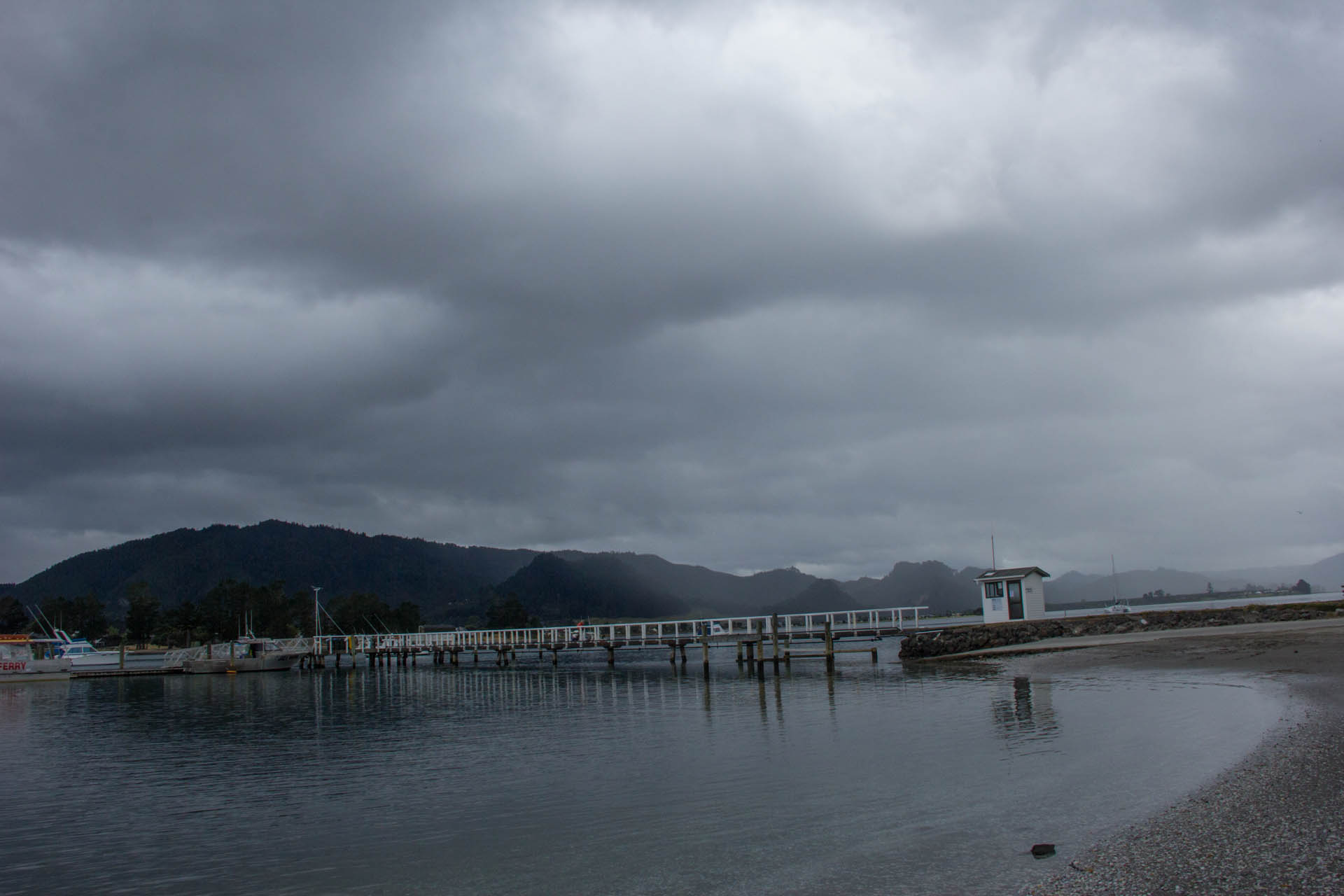
The road is long and impressively winding. Where the highways I'm used to cut forcibly through the landscape in unforgiving straight lines, this one winds gracefully up, down, and between the mountains. They're the kind of roads you see in Bond movies, with a vertical cliff face to your right and a straight drop miles down to your left. And bonus points for the frequent scenic outcroppings complete with parking areas.
At one point, there was a narrow, overgrown pathway that led to a view that Sheep couldn't get enough of. He even thought he heard some Kiwi birds...
Upon arrival in Whitianga, we did a bit of exploring and went out in the bay for a bit of swimming and kayaking. It was still rainy, so the escapade was cut short by my worry at the level of waterproofing of my camera bag, but it was fun while it lasted. The next morning we spent a bit of time wandering around in town, where one of the local shopkeepers recognized me from the day before by my hair. It's a good thing I'm not a spy, really- hard to keep a low profile with a highlighter on your head...
Next, Hot Water Beach!
Hot Water Beach has a hot spring under it, and you can go during low tide and dig holes in the sand. The holes fill with spring water from under the ground, and you get a nice hot tub effect while hanging out on the beach. It's a great idea in theory, but there are some issues. First is people- it's a very touristy spot, and I was lucky to be able to take a few pictures before too many came to stake their claims.
The second issue is that you're supposed to start digging your hole while the tide is still moderately high for Maximum Hot-Spring Enjoyment Factor... which is difficult. You start digging your hole, and a wave comes in and washes the whole thing flat again. you try to build a barricade, the wave washes it away. You try to use a human as a barricade, the water gets around him and washes sand into his shorts. It's sort of destined to fail from the beginning. Didn't stop us from trying, though!
The boys tried a couple of approaches while I stood by with the camera. Eventually, they started trying more obscure digging methods...
The cool thing about it is that you can see the hot water bubbling up through the sand if you're looking- too hot, actually, to stick your foot in. I heard surprised yelping in several different languages in the few hours we were there- like I said, it's a very touristy place. Eventually, it became impossible to dig without fear of beaning an innocent bystander with a spade full of sand, so we left in search of less crowded adventures.
We decided to go explore Cathedral Cove next- it's a spot I wanted to visit and also a pretty cool hike.
The hike takes about 30 minutes, and there's all manner of interesting things to see along the way.
The interesting thing about the New Zealand countryside is that there is so much of it, and yet it's all so different.
At one point, as you walk over the top of one hill (It's about the halfway point)- the view to the left is a perfect description of the rolling hills, rocky outcroppings, and lush greenery that seems to mark New Zealand's summers:
Standing in the same place and looking to the right, however, reminds you that there is in fact an ocean surrounding this place, and you'd do well to pay attention or risk falling off the edges of the earth.
After the 30 minute hike to Cathedral Cove, which may have been slightly longer on account of all the breath-catching that had to be done because 'lung capacity' is not on my list of strengths... we emerged:
Cathedral Cove is exactly as beautiful as they say: times about a million. Because of the weather and the time of day, there were only about 12 other people there with us, so I took advantage of the photography. The wave sounds that can be heard echoing through the cavern are haunting and beautiful, and the water is so clear that you'd swear you were the only other human on the planet.
I'm having this problem with the scaling of everything- there are no words, and no photos that can accurately describe the intense largeness of the cavern- or the feeling of smallness you get from standing inside it.
Here, for your viewing pleasure, is what the start of the return hike looks like:
On the way back, we met this dapper fellow and his lady friend- at first they were afraid, but I crouched down to take photos while Jon made some whistling sounds, and our new feathered friend came over and posed on a rock so I could take his picture.
By the time we got back to the house it was dark, which turned out to be just fine considering the sunset. Although it was cloudy and rainy for most of the weekend, the skies cleared up enough for a night-shot of the view from our front porch. Off to the left is Shakespeare cliff, which was on the list of things we would have done had the weather improved.
The next day, we went on a new adventure to see what apparently has been voted "New Zealand's Most Beautiful Beach"- It's another one that you have to do a bit of hiking to get to.
After getting distracted looking at seashells for a good half hour, we went inland where I was surprised to discover an area that looked like it was the hand-built set from a Jurassic park movie. Everything was still, and you could hear but not see the ocean through the undergrowth. It was beautiful, and creepy all at once.
It was, actually, a beautiful beach. Another stroke of luck with only 10 or so other people around, and this little lean-to constructed out of palm fronds and tree bark:
Far enough up the beach, there are even sand dunes that look out over the water. Birds nest on the dunes, which is cool as long as you abide by the natural order of 'you stay on your side of the rope, I stay on my side of the rope' -Otherwise, eyeballs get pecked out.
Here we are: the sun sets over New Chums beach...
And walking back, we could see the beach from between the trees:
You'll forgive me for saving the biggest adventure for last.
After all the adventure we crammed into the 'annual camping trip' this weekend, I figured we were about finished with it all when we packed the kayak and everything else up and headed for home. Sheep was more than happy to stand guard while we put everything else into the car and took off- after a quick pit stop for fish n' chips, of course.
Unfortunately, about an hour and a half into our return trip (and stops every 15 minutes or so to let people pass us and make sure that the kayak was in fact secure- it was) we drove around a corner and a gust of wind hit us so hard that it shook the car. There was a loud clap and a bang, and I watched as the nose of the kayak swung around over my window. We pulled off the road, and Jon started working on assessing the damage. I, meanwhile, was trapped in the car by a twisted piece of the roof rack which had levered itself against my door. About a minute after we pulled over, a police officer found us and pulled off. She saw the twisted pieces of metal that remained of the rack, and Jon told her that it had snapped in the wind, and we were trying to fix it. She helped to twist the kayak back to its proper position, which partially freed the piece of metal against my door, and then apologized because she was on her way to an accident further up the road, and left.
After Jon pried me out of the car, we set to disassembling the wreckage and reattaching the kayak facing, once again, front to back. It took about two hours, one tarp, a duvet, a bungee cord, and 20 feet of rope to get it tied back on, and by the time it was tied, the car battery was dead from the hazards and headlights. When we attempted to flag down an officer for help, he refused, laughing, and drove away.
I was a little miffed that nobody else stopped to help us (considering the eight other police cars that drove by), but I counted it as a win because the only major damage was to the roof rack. I figured that was the end of it, until this popped up on the NZ National News two days later:
According to the original article, police pulled over an Irishman who told them he though that was how kayaks were supposed to be transported- and was 'unrepentant'. Basically, the story went viral, and even more viral when they found out that the driver was actually about as close to being Irish as a bottle-nose dolphin. The police ended up having to actually apologize to the entire Irish nation -Foreign relations and all. If you'd told me a few months ago that I'd be on an extended vacation in New Zealand, I would have laughed in your face. Imagine what would have happened had you told me I'd be four day's worth of top story on the nightly news after only a week abroad! It might say a thing or two about the comparative importance of news stories here and in the US, to be sure.
Jet Lag, Doorknobs, and One Pair of Socks: The New Zealand Mission Begins.
Do you remember when I said that thing about how I was going to get all nice and caught up on my blogging by December, so that I could switch gears and tell you all about New Zealand when I got here? Sorry.
I'm most of the way through the screen printing post, and still have to do my moccasin boot post as well. I'm going to save those for a rainy day- and let me tell you, those seem pretty hard to come by in my current corner of the Pacific...
But first, a bit about travel (in case you're interested in visiting little old me)... The flights were fairly uneventful- a good thing when your total travel time is 26 hours. It gets to the point where you give up on trying to keep track of what time it is. My layover in Los Angeles was 6 hours, which went by really quickly because, as it turns out, the most interesting people you'll ever meet can be found in the international departures wing of an airport. We bonded over a singular need for electrical outlets and talked for hours. I met JD and his twin brother Sam who are travelling around the south island for 3 weeks (mostly hitchhiking, and I am very curious to know how that's working out for them), and Ashley who studied fashion design and now would like to start a business with her twin sister who she's meeting in Australia, and last but not least Tim and Mary- who told stories of their grandkids and offered us all a place to crash if we ever found ourselves near Wellington. Mary was astounded to hear that JD had only brought one pair of socks for his entire trip, and even went so far as to find him another pair (so he can wear one pair while the others are drying)- which I believe she gave him as we were boarding the plane.
Tim also told us that in New Zealand socks do not come in pairs, and that we would get callouses on our heads because of the waking up upside down- and managed to keep a straight face while he said it.
We landed at about 8am local time and my jet lag had not yet set in- so we went on an adventure, of course! There is an old navy base on a mountain near Auckland called North Head (I say mountain. It is a little mountain, but big enough.) It's very park-like, with flowers and trees everywhere, and at the top there's a great view of the city and surrounding beaches.
The old Navy barracks are here, along with some very cool, very large cannons. New Zealand's Navy is currently located one mountain over, this stuff is circa World War II. Part of what makes this place so interesting, though, is that most of the stuff that goes on here is underground- the barracks, ammunition storerooms, and even the places the cannons are stored- are built into the mountain. Some of it is open for wandering, and some areas are closed off.
After a thorough exploration of the above-ground areas, we ventured inside the mountain.
It's a very interesting combination of manmade and natural structure inside, this little room, for example, was right off one of the hallways and yet held no trace of ever having been effected by people.
When the base was in use, this cannon used to fire and then flip down inside the underground room for storage. Sneaky.
By some other cannons, there was a plaque that talked about how the locals were upset that the sonic boom from the blasts would shatter their windows, so the Navy planted trees to dampen it...but by the time the trees were large enough to make any difference, the cannons were obsolete.
There were a lot of ways in and out of the tunnels, and we tried to explore all of them. A lot of them are covered in graffiti, and some were more overgrown than others.
It would have been a great place for a picnic if I hadn't been utterly and completely confused about what time it was. Feels like dinner time, looks like lunchtime? Even at dinner time here as it turns out, the sun is still bright in the sky. It doesn't go down until nearly 9:30.
We emerged from the tunnels at a perfect vantage point- overlooking Auckland on such a beautiful day. Everything is so blue!
If cityscapes aren't your thing, feast your eyes on the aptly named 'fire poker' flower.
Travelling to other countries is so interesting- the people are still people, and the important things are the same, but then there are these weird differences that you sort of notice along the way, like all the trees and flowers are different, or the doorknobs are located at least a foot higher on the door... or that you drive on the left side of the road. Still not comfortable with that last one... I'm trying to practice deciding which lane I would turn into when I ride along in other people's cars, and I keep getting it wrong...
It's been five days now since I got here, and I think it's safe to say I'm over the jet lag. It took about four days to wear off completely. The second day (before I got super sleepy like a 90 year old lady at the ripe old hour of 7pm) we went to Parnell rose gardens, which turned out to be a lot more than roses (though also a lot of roses)
Long stalky flowers are difficult to take photos of when it's ridiculously windy outside, but I managed..
And of course, roses. So many roses, in so many colors.
Sheep also made an appearance once he saw some flowers he liked.
As if by magic, as soon as I said "I wonder if any of these roses match my hair"- there they were!
Those were the two big adventures this week. It was nice to have a few relaxing days around to adjust and talk to home and stuff. On the list of things not covered however, we have:
- Ate octopus (eh), squid (yum!), papaya (nope), and green-lipped mussels (yum, but want to cook with them myself)
- Tasted the nectar of the Pohutukawa tree (yum!)
- Went to two night markets (full of Asian food and trinkets- the kind of place that makes you want to hold on to your wallet...but the kind of place with the best mango smoothie ever)
- Went to the Largest Shopping Mall in New Zealand- which is roughly equivalent to a smallish shopping mall in the states.
- Experienced unrefrigerated eggs, and solved that mystery: Eggs in the US are washed which strips them of their protective coating, making them more likely to absorb contaminants. Eggs almost everywhere else are not washed, which means the protective coating stays intact,and also gives farmers more incentive to keep their chicken's environments clean, so that the eggs stay cleaner anyways.
So far, New Zealand and I are getting along excellently. Now that I'm here getting acquainted with things, it's a lot easier to do my travel planning, so I'm working on my list of things to make happen before I leave. The exchange rate works in my favor, which is helpful, and once I get a bus card in my hand I'll be unstoppable!




